HOME

Copyright, 1910, by John M. Pryse, New York.
Entered at Stationers' Hall, London.
CONTENTS
PAGE
PREFACE . vii
INTRODUCTION
Chapter I. The Key Of The Gnosis 1
Chapter II. The Path Of Power 6
Chapter III. The Riddles Of "revelation" 24
Chapter IV. The Drama Of Self-conquest 33
THE INITIATION OF IOANNES 11
LIST OF ILLUSTRATIONS
PAGE
The Key of the Gnosis Colored Frontispiece
The Seven Principal Ganglia 17
The Twelve Signs of the Zodiac 20
The Gnostic Chart Concealed in the Apocalypse 26
The Cubical City Unfolded 31
The Apocalyptic Zodiac 41
The Light of the Cosmos 78
The Seven Cities in Asia 93
Kronos 95
Zeus 98
Ares 101
Helios 104
Aphrodite 106
Hermes , 109
Selene Ill
Seal 123
Trumpet 136
Virgo 154
Draco 156
Cetus 162
Medusa 166'
Agnus Dei 169
Sickle 174
Phiale 178
Crater 188

PREFACE
The purpose of this book is to show that the Apocalypse is a manual of spiritual development and not, as conventionally interpreted, a cryptic history or prophecy. In the following pages the reader will find the complete solution of the Apocalyptic enigma, with ample proof of the correctness of that solution.
As the subject dealt with in the work is, however, familiar to only a comparatively few special students of the sacred science, which to the many has ever been a sealed book, the exposition here given is put in the form of an elementary treatise.
If it were written for the few, it would have been expanded to great bulk; but as it is intended for the many, the author has kept within the limits of a small volume, avoiding everything mystical, scholastic and controversial, using plain, concise language, and employing technical terms only when they are required by the nature of the subject.
The translation of the Apocalypse here presented attempts no more than to reproduce the meaning of the original accurately and clearly in modern English. But, while this translation differs radically, in some respects, from the authorized version, the interpretation here offered is not based upon any peculiarities of the translator's work, or upon any mere matter of details, but rests broadly upon the undisputed meanings of the Greek text.
James M. Pryse.
New York City, September, 1910.
Woe unto you, conventionalists, for you took away the key of the sacred science; you did not go in and those who were about to go in you prevented, Lk. xi. 52
INTRODUCTION
CHAPTER I
THE KEY OF THE GNOSIS
Every thoughtful student of the literature of the ancient religions, including that of early Christianity, can not but be impressed by the fact that in each and all of them may be found very clear intimations of a secret traditional lore, an arcane science, handed down from times immemorial.
This secret body of knowledge is repeatedly alluded to in the New Testament, as also in the Upanishads and other ancient writings, in whose pages a few of the arcane doctrines are cautiously unveiled; and from the meagre glimpses thus afforded of the system it is clearly apparent that it was essentially the same in all the old religions and philosophies, constituting, in fact, their common esoteric basis.
In the primitive Christian Church, organized as a secret society, this Gn6sis, or secret science, was guarded with jealous care, being imparted only to a comparative few who were deemed worthy of initiation, according to the maxim, "Many are the called, but few are the chosen."
Through corrupting political influences and the ultimate dominance by a selfish and decadent priesthood, the Christian Society in the early centuries lost this esoteric knowledge, in place of which there grew up during the succeeding centuries a system of dogmatic theology formulated from the literal interpretation, the dead letter, of the books of the Old and New Testaments.
On the hypothesis that the Bible, as a divine revelation, contains a record of God's dealings with mankind throughout the ages, the historical element in it has been unduly emphasized, while books that are purely allegorical and mystical have been construed as history.
For several centuries it was attempted to give the Apocalypse an historical interpretation; and failing this, through the lack of any record of past events that would serve the purpose, it was next interpreted as history of the future, that is, prophecy.
At the present time, the Apocalypse is the despair of theology; the ablest scholars in the ranks of orthodoxy frankly admit that it must be regarded 'as an unsolved, and possibly insoluble, enigma. They translate its title "Revelation"—yet it reveals nothing to them.
Literally means "disrobing" or "unveiling"; but Isis wrapped in her peplum was not more safe from profane gaze than is the meaning of the Apocalypse, nor is any book in all literature more heavily veiled.
Yet the Apocalypse is the key to the New Testament; more, it is in very truth the key of the GnSsis. Incomprehensible as the book may seem to the exoteric scholar, however great his intellectual attainments, keen his mental acumen, and vast his store of erudition, to the mere tyro in the sacred science the general meaning of the Apocalypse is perfectly clear.
It is unintelligible to the conventional scholar simply because its subject-matter, veiled in symbolical language, relates to the Mysteries of the early Christian Society, the esoteric teachings which it was not lawful to reveal. For secrecy has always been maintained regarding the sacred science, so as to guard it from those who are morally unworthy to receive it; since the power its possession confers would be destructive to them and injurious to their fellow-men.
But so far as concerns the Apocalypse this reason does not apply very forcibly: much that is given in it had already been very clearly and openly stated in the writings of Plato (with which the Apocalyptist was evidently familiar) and of other Greek Initiates, as well as in the Buddhistic and Brahmanical scriptures.
Moreover, although the Apocalypse treats very fully of the spiritual and psychic forces in man, it nowhere gives even a clue to the process by which these forces can be aroused to action; in fact, in the introductory part Joannes clearly intimates that it is intended for the guidance of those who, without any esoteric instruction, find these forces awakened within them by the very purity of their'nature and the intensity of their aspiration for the spiritual life.
Evidently, then, he had another motive for resorting to the symbology and the ingenious puzzles which have baffled the profane for so many centuries; and this motive is easily perceived. If he had written the book in clear language, it would almost undoubtedly have been destroyed ; and it certainly would never have found a place in the Christian canon. Again, from the concluding portion of his Evangel it is plain that loan- nes, the great Seer and Initiate, clearly foresaw the fate of the Christian Church and its loss of the esoteric doctrine.
It would seem, therefore, a reasonable supposition that he wrote the Apocalypse for the purpose of preserving that doctrine in the Christian records, carefully concealing it under the most extraordinary symbols, checked off by a numerical key and by similar "puzzles," so that the meanings could be conclusively demonstrated from the text itself, and concluding it with a dread imprecation against any one who should add to or take away anything from the book, a device which has undoubtedly helped to preserve the text from mutilation.
and having thus with marvelous ingenuity prepared the book, which is unique in all literature, he confided it to the keeping of the exoteric church, confident that in their ignorance of the real nature of its contents the exotericists would carefully preserve it until the proper time should come for its meaning to be explained.
If this was his purpose (as the present author firmly believes it was), then this present time, when modern Biblical criticism scholarly accurate, conventionally exoteric, and remorselessly unsparing—has demonstrated the unsoundness and instability of the venerable theological structure, and has so undermined it that it seems to be tottering to its fall, would appear to be the intended and appropriate time for the seals of the Apocalypse to be broken, and the contents of the book made known.
Thus it is that loannes, "who bore witness of the Logos of the God, and of the witness of Anointed lesous," has borne witness of the esoteric doctrine which underlies not only Christianity but also all the religions of antiquity.
Through the long centuries the orthodox church has treasured this mysterious book—designed for the undoing of orthodoxy—as part of its sacred scriptures, a place to which the book is justly entitled, for it is the masterpiece of loannes, the Seer. It is unquestionably from the same hand that penned the fourth Evangel:
tradition is quite clear on that point; and though its Greek is somewhat inferior to that of the Evangel, the difference is due merely to the more intricate and artful composition of the Apocalypse; while both works reveal the same inimitable mental traits and unmistakable literary peculiarities.
That they are by the same author, and that the text is practically intact, is the view of sober-minded Biblical scholars, a reaction having set in against an erratic school of criticism which is now generally discredited as being an instance of scholasticism running riot with untenable theories and whimsical conjectures.
Now, in plain words, what does this very occult book, the Apocalypse, contain? It gives the esoteric interpretation of the Christos-myth; it tells what "loesous the Christos" really is; it explains the nature of "the old serpent, who is the Devil and Satan"; it repudiates the profane conception of an anthropomorphic God; and with sublime imagery it points out the true and only path to Life Eternal.
It gives the key to that divine Gnosis which is the same in all ages, and superior to all faiths and philosophies—that secret science which is in reality secret only because it is hidden and locked in the inner nature of every man, however ignorant and humble, and none but himself can turn the key.
It is impossible for the Gnosis itself ever to be "revealed," from the very nature of it, for it pertains to the realm of the spiritual mind, and lies beyond the scope of mere intellection, which can never rise higher than speculative philosophy; but the key of the Gnosis—the scientific method by which this higher knowledge may be attained—can be placed in possession of any one who is intuitive enough to appreciate its value and apply it in practice.

CHAPTER II
THE PATH OF POWER
As but few readers may be expected to have sufficient acquaintance with ancient philosophy and the rather detailed knowledge of psycho-physiology necessary for even a superficial survey of the Apocalypse, a brief sketch will here be given of the topics which must be entered into in interpreting it. A comprehensive treatise, or even a complete outline of the subject, would be far beyond the scope of the present work, which is strictly limited to the elucidation of the Apocalypse.
The point where the arcane system sharply diverges from all the conventional schools of thought is in the means of acquiring knowledge. To make this clear, Plato's analysis of the four faculties of the soul, with their four corresponding degrees of knowledge, may be taken. (Rep. vi. 511.) Tabulated, it is as follows:
THE VISIBLE, SENSUOUS WORLD.
1. Et/cao-i'a, perception of images,! Sofa, opinion, illu-
2. IIioTis, faith, psychic groping, J sory knowledge.
THE INTELLIGIBLE, SUPRASENSUOUS WORLD.
3. AioVoia,philosophic reason,)
4. Notjctisj direct cognition, Jdom, true knowledge.
The first of these degrees covers the whole field of the inductive physical sciences, which are concerned with investigating the phenomena of external nature ; the second degree embraces exoteric religion and all phases of blind belief ; and these two degrees, pertaining to the phrenic or lower mind, comprise all the knowledge available to those whose consciousness does not transcend the illusions of the material world.

The third degree relates to speculative philosophy, which seeks to arrive at first principles by the effort of pure reason; the fourth degree is the direct apprehension of truth by the lucid mind independently of any reasoning process; and these two degrees, pertaining to the noetic or higher mind, represent the field of knowledge open to those whose consciousness rises to the world of spiritual reality. Elsewhere Plato speaks of the mantic state, which he describes as a kind of madness produced "by a divine release from the ordinary ways of men."
The exoteric scientist and religionist rely on the physical senses, the psychic emotions, and the intellectual faculties as these are in the present stage of human evolution; and while the scientist somewhat enlarges the scope of the senses by employing the telescope, the microscope, and other mechanical devices, the religionist puts his trust in the mutilated records of suppositional revelations received from the remote past.
But the esotericist, refusing to be confined within the narrow limits of the senses and the mental faculties, and recognizing that the gnostic powers of the soul are hopelessly hampered and obscured by its imperfect instrument, the physical body, devotes himself to what may be termed intensive self-evolution, the conquest and utilization of all the forces and faculties that lie latent in that fontal essence within himself which is the primary source of all the elements and powers of his being, of all that he is, has been, and will be.
By gaining conscious control of the hidden potencies which are the proximate causes of his individual evolution, he seeks to traverse in a comparatively brief period of time the path leading to spiritual illumination and liberation from terrestrial bondage, rushing forward, as it were, toward that goal which the human race as a whole, advancing at an almost imperceptible rate of progress, will reach only after aeons of time.
His effort is not so much to know as to become; and herein lies the tremendous import of the Delphic inscription, "Know Thyself," which is the key-note of esotericism. For the esotericist understands that true self-knowledge can be attained only through self-development in the highest possible sense of the term, a development which begins with introspection and the awakening of creative and regenerative forces which now slumber in man's inner protoplasmic nature, like the vivific potency in the ovum, and which when roused into activity transform him ultimately into a divine being bodied in a deathless ethereal form of ineffable beauty.
This process of transcendental self-conquest, the giving birth to oneself as a spiritual being, evolving from the concealed essence of one's own embryonic nature a self-luminous immortal body, is the sole subject-matter of the Apocalypse, as it is also the burden of the four Evangels; but, whereas in his Evangel loannes has been content to follow the form of statement found in the three Synoptics, in the Apocalypse he has given an almost complete outline of the psycho-physiological process of regeneration or, as he calls it in his Evangel, the birth "from above."
In the esoteric philosophy the infelicitous word esoteric being used in this work merely because the English language appears to afford no happier one the absolute Deity is considered to be beyond the spheres of existence and ulterior to Being itself. The world of true Being is that of the Logos, or Nous, the realm of divine ideas, or archetypes, which are the eternal patterns, so to say, of all things in the manifested universe.
By a paradox which defies the reasoning faculty, but which is readily resolved intuitively, the God is said to be apart from, and independent of the universe, and yet to permeate every atom of it.
The God is the abstract Unit, which is the origin of all number, but which never loses its unit-value, and can not be divided into fractions; while the Logos is the manifested or collective Unit, a deific Individuality, the collectivity of a countless host of Logoi, who are differentiated into seven hierarchies, constituting in the aggregate the Second Logos, the uttered Thought, or Word.
As a mediate principle for the manifestation of the Logos in and from the God, Joannes in his Evangel places the Archeus, the first element or substratum of substantive objectivity, that which becomes by differentiation first the subtile and then the gross material elements of the manifested worlds.
If this primary substance is related back to the God, and considered as being prior to the Logos, the result is the refined dualism that mars some of the old systems of philosophy. But in the prologue the Logos is really coeval with the Archeus: the Logos is (subsists) in the Archeus, and the latter becomes, in the Logos, the principle of Life, which irradiates as Light.
This Light of the Logos is identical with the Pneuma, the Breath or Holy Spirit, and esoterically it is the pristine force which underlies matter in every stage, and is the producer of all the phenomena of existence.
It is the one force from which differentiate all the forces in the cosmos. As specialized in the human organism, it is termed, in the New Testament, the para kletosy the "Advocate," and is the regenerative force above referred to.
From the Archetypal world, that of the Logos, emanate successively the Psychic and the Material worlds; and to these three may be added a fourth, which is usually included, by ancient writers, in the Psychic, though in reality it is distinct from it.
This fourth world, which will here be called the Phantasmal—since the word "hell" connotes misleading and lurid notions—is the region of phantoms, evil spirits, and psychic garbage generally.
All that the universe contains is contained also in man. The origin of man is in the Deity, and his true self or individuality is a Logos, a manifested God. Analogous with the universe or macrocosm, man, the microcosm, has three bodies, which are called in the New Testament the spiritual body (soma pneumatikon), the psychic body (soma psy- chikon), and the physical body (soma, or sarx, "flesh").
In the .Upanishads they are termed "causal body" (karana sharira), "subtile body" (sukshma sharira), and "gross body" (sthula sharira) . In mystical writings they are made to correspond to the four occult elements, and also to the sun, moon, and earth, and hence are given the names air-body, water-body, fire-body, lunar body, and solar body.
The spiritual (pneumatic) body is, strictly speaking, not a body at all, but only an ideal, archetypal form, ensphered, as it were, by the pneuma or primordial principle which in the duality of manifestation generates all forces and elements: it is therefore called the "causal body," because from its sphere all the other bodies are engendered;
and all these lower forms are enveloped by the same circumambient aura (called in the New Testament "the radiance" or "glory," he doxa), which is visible to the seer as an oviform faint film of bluish haze. Semi-latent within this pneumatic ovum is the paraklete, the light of the Logos, which in energizing becomes what may be described as living, conscious electricity, of incredible voltage and hardly comparable to the form of electricity known to the physicist.
This is the "good serpent" of ancient symbology; and, taken with the pneumatic ovum, it was also represented in the familiar symbol of the egg and the serpent. It is called in the Sanskrit writings kundalini, the annular or ring form force, and in the Greek speirema, the serpent coil.
It is this force which, in the telestic work, or cycle of initiation, weaves from the primal substance of the auric ovum, upon the ideal form or archetype it contains, and conforming thereto, the immortal Augoeide~s, or solar body (soma helia kon), so called because in its visible appearance it is self-luminous like the sun, and has a golden radiance. Its aureola displays a filmy opalescence. This solar body is of atomic, non-molecular substance.
The psychic, or lunar, body, through which the Nous acts in the psychic world, is molecular in structure, but of far finer substance than the elements composing the gross physical form, to whose organism it closely corresponds, having organs of sight, hearing, and the rest. In appearance it has a silvery lustre, tinged with delicate violet; and its aura is of palest blue, with an interchanging play of all the prismatic colors, rendering it iridescent.
The physical body, in its physiological relation to psychology, will necessarily have to be considered somewhat in detail in elucidating the Apocalypse; but before entering on this subject, it may be explained that a fourth body is sometimes alluded to in mystical writings.
It is called in Sanskrit kdma rupa, the form engendered by lust, and it comes into existence only after the death of the physical body, save in the exceptional case of the extremely evil sorcerer who, though alive physically, has become morally dead.
It is a phantasm shaped from the dregs and effluvia of matter by the image-creating power of the gross animal mind. Of such nature are the daimones and "unclean spirits" of the New Testament, where also the "abominable stench" (bdelugma) seems to be a covert allusion to this malodorous shade. This phantasm has the shadowy semblance of the physical body from which it was derived, and is surrounded by a cloudy aura of brick-red hue.
It should be observed that in the esoteric cosmogony the theory of "dead" matter has no place. The universe is a manifestation of life, of consciousness, from the Logos down to the very atoms of the material elements.
But in this philosophy a sharp distinction is made between Being and existence: the Logos, the Archetypal world, is that of True Being, changeless and eternal; while existence is a going outward into the worlds of becoming, of ceaseless change and transformation.
The Nous, the immortal man, or mind (for the mind should be regarded as the real man), when incarnated comes under the sway of this law of mutation, entering upon a long cycle of incarnations, passing from one mortal body to another.
The metaphysical aspect of this subject need not be discussed here; but it may be said that the fact of reincarnation, so far from being mysterious and difficult of proof, is really very prosaic and simple, so that it has always been treated as exoteric in all archaic religions and philosophies. Positive knowledge of its truth, on a
basis of personal experience, is one of the first results obtained by any one who enters upon the initial stages of self-conquest. It is then a fact as apparent to him as are the cognate facts of birth and death.
The telestic work has for its object to achieve deliverance from reincarnation, and this deliverance is complete and final only when the deathless solar body is formed, and the perfected man is thereby freed from the necessity of reincarnating in the mortal physical and psychic forms.
The physical body may itself be considered to be an objective microcosm, an epitome of the material world, to every department of which its organs and functions correspond and are in direct relation.
Moreover, as the organism through which the soul contacts external nature, its organs correspond to, and are the respective instruments of, the powers and faculties of the soul. Thus the body has four principal life-centres which are, roughly speaking, analogues of the four worlds, and of the four manifested generic powers of the soul; these four somatic divisions are as follows:
1. The head, or brain, is the organ of the Nous, or higher mind.
2. The region of the heart, including all the organs above the diaphragm, is the seat of the lower mind (phren, or thumos), including the psychic nature.
3. The region of the navel is the centre of the passional nature (epithumia), comprising the emotions, desires, appetites, and passions.

4. The procreative centre is the seat of the vivifying forces on the lowest plane of existence. This centre is often ignored by ancient writers as, for instance, Plato, who assigns four faculties to the soul, but classifies only three of the somatic divisions, assigning the Nous, or Logos, to the head, thumos to the cardiac region, and epithumia to the region below the midriff.
Others, however, give the fourfold system, as does Philolaus, the Pythagorean, who placed the seat and germ (arche) of reason in the head, that of the psychic principle in the heart, that of growth and germination in the navel, and that of seed and generation in the sexual parts.
It is unnecessary, in this brief sketch, to go into further details concerning these correspondences, save only in regard to the nervous system and the forces operating through it. There are two nervous structures: the cerebro-spinal, consisting of the brain and the spinal cord; and the sympathetic or ganglionic system. These two structures are virtually distinct yet intimately associated in their ramifications.
The sympathetic system consists of a series of distinct nerve-centres, or ganglia—small masses of vascular neurine—extending on each side of the spinal column from the head to the coccyx.
Some knowledge of these ganglia and the forces associated with them is indispensable in an examination into the meaning of the Apocalypse; and as their occult nature is more fully elucidated in the Upanishads than in any other available ancient works, the teaching therein contained will here be referred to, and their Sanskrit terms employed.
The ganglia are called chakras, "discs," and forty-nine of them are counted, of which the seven principal ones are the following: (1) sacral ganglion, mftlddhdra; (2) prostatic, adhishthdna; (3) epigastric, manipuraka; (4) cardiac, anahata; (5) pharyn- geal, vishuddhi; (6) cavernous, and (7) the conarium, sahasrdra. Of these only the seventh, the conarium or pineal body, need be considered here with particularity.
It is a small conical, dark- grey body situated in the brain immediately behind the extremity of the third ventricle, in a groove between the nates, and above a cavity filled with sabulous matter composed of phosphate and of carbonate of lime. It is supposed by modern anatomists to be the vestige of an atrophied eye, and hence is termed by them "the unpaired eye."
Though atrophied physically, it is still the organ of spiritual vision when its higher function is restored by the vivifying force of the speirema, or paraklete, and it is therefore called esoterically "the third eye," the eye of the seer.
When through the action of man's spiritual will, whether by his conscious effort or unconsciously so far as his phrenic mind is concerned, the latent kun- dalini (speirema), which in the Upanishads is poetically said to lie coiled up like a slumbering serpent, is aroused to activity, it displaces the slow-moving nervous force or neuricity and becomes the agent of the telestic or perfecting work.
As it passes from one ganglion to another its voltage is raised, the ganglia being like so many electric cells coupled for intensity; and moreover in each ganglion, or chakra, it liberates and partakes of the quality peculiar to that centre, and it is then said to "conquer" the chakra. In Sanskrit mystical literature very great stress is laid upon this "conquering of the chakras."
Conariutn
Sacral
Cavernous
Pharyngeal
Cardiac
Midriff
Epigastric
Prostatic
The Seven Principal Ganglia
The currents of the kundalini, as also the channels they pursue, are called nddis, "pipes" or "tubes," and the three principal ones are: (1) sushumna, which passes from the terminus of the spinal cord to the top of the cranium, at a point termed the brahma- randra, or "door of Brahma" (in early Christian mysticism, thura lesou, "door of lesous"); (2) pingala, which corresponds to the right sympathetic; and (3) Ida, which corresponds to the left sympathetic.
The force, as specialized in the gan- glionic system, becomes the seven tattvas, which in the Apocalypse are called the seven pneumata, "breaths," since they are differentiations of the Great Breath, the "World-Mother," symbolized by the moon.
Concurrent with these seven lunar forces are five solar forces pertaining to the cerebro- spinal system, called the five prdnas, "vital airs," or "life-winds," which in the Apocalypse are termed "winds" (anemoi). The Apocalypse represents these twelve forces, the seven "breaths" and the five "winds," as corresponding to the twelve signs of the zodiac, of which, therefore, a brief description will here be appropriate.
The zodiac is a belt of the celestial sphere, about seventeen degrees in breadth, containing the twelve constellations which the sun traverses during the year in passing around the ecliptic. Within this zone are confined the apparent motions of the moon and major planets.
The zodiacal circle was divided by the ancients into twelve equal portions called signs, which were designated by the names of the constellations then adjacent to them in.the following order: Aries, the Ram; Taurus, the Bull; Gemini, the Twins; Cancer, the Crab; Leo, the Lion; Virgo, the Virgin; Libra, the Balance; Scorpio, the Scorpion; Sagittarius, the Bowman; Capricornus, the Goat; Aquarius, the Water-bearer; and Pisces, the Fishes. Owing to the precession of the equinoxes, the signs of the ecliptic are now about one place
The Twelve Signs of the Zodiac
ahead of the corresponding zodiacal constellations, which constitute the fixed zodiac. Aside from its astronomical utility, the scheme of the zodiac was employed to symbolize the relations between the macrocosm and the microcosm, each of the twelve signs being made to correspond to one of the twelve greater gods of the ancient pantheon and assigned as the "house" of one of the seven sacred planets; each sign, moreover, being said to govern a particular portion of the human body, as shown in the familiar exoteric chart here reproduced.
The foregoing covers the topics which must necessarily be referred to in elucidating the recondite meaning of the Apocalypse; but to convey a clearer conception of its practical and psychological application, further explanation will now be given of the action of the "serpent force" (speirema) in the telestic or perfective work.
This work has to be preceded by the most rigid purificatory discipline, which includes strict celibacy and abstemiousness, and it is possible only for the man or woman who has attained a very high state of mental and physical purity. To the man who is gross and sensual, or whose mind is sullied by evil thoughts or constricted by bigotry, the holy paraklete does not come; the unpurified person who rashly attempts to invade the adytum of his inner God can arouse only the lower psychic forces of his animal nature, forces which are cruelly destructive and never regenerative.
The neophyte who has acquired the "purifying virtues" before entering upon the systematic course of introspective meditation by which the spiritual forces are awakened, must also as a necessary preliminary gain almost complete mastery of his thoughts, with the ability to focus his mind unde- viatingly upon a single detached idea or abstract concept, excluding from the mental field all associated ideas and irrelevant notions.
If successful in this mystic meditation, he eventually obtains the power of arousing the speirema, or paraklete, and can thereby at will enter into the state of manteia, the sacred trance of seership.
The four mantic states are not psychic trances or somnambulic conditions; they pertain to the noetic, spiritual nature; and in every stage of the manteia complete consciousness and self-command are retained, whereas the psychic trances rarely transcend the animalistic phrenic nature, and are usually accompanied by unconsciousness or semi-consciousness.
Proficiency in the noetic contemplation, with the arousing of the speirema and the conquest of the life-centres, leads to knowledge of spiritual realities (the science of which constitutes the Gn6sis),
and the acquirement of certain mystic powers, and it culminates in emancipation from physical existence through the "birth from above" when the deathless solar body has been fully formed. This telestic work requires the unremitting effort of many years, not in one life only but carried on through a series of incarnations until the final result is achieved.
But almost in it's initial stages the consciousness of the aspirant becomes disengaged from the mortal phrenic mind and centred in the immortal noetic mind, so that from incarnation to incarnation his memory carries over, more or less clearly according to the degree he has attained, the knowledge acquired; and with this unbroken memory and certainty of knowledge he is in truth immortal even before his final liberation from the cycle of reincarnation.
In arousing the kundalini by conscious effort in meditation, the sushumna, though it is the all-important force, is ignored, and the mind is concentrated upon the two side-currents; for the sushumna can not be energized alone, and it does not start into activity until the ida and the pingala have preceded it, forming a positive and a negative current along the spinal cord.
These two currents, on reaching the sixth chakra, situated back of -the nasal passages, radiate to the right and left, along the line of the eyebrows; then the sushumna, starting at the base of the spinal cord, proceeds along the spinal marrow,
its passage through each section thereof corresponding to a sympathetic ganglion being accompanied by a violent shock, or rushing sensation, due to the accession of force—increased "voltage" —until it reaches the conarium, and thence passes outward through the brahmarandra, the three currents thus forming a cross in the brain.
In the initial stage the seven psychic colors are seen, and when the sushumna impinges upon the brain there follows the lofty consciousness of the seer, whose mystic "third eye" now becomes, as it has been poetically expressed, "a window into space."
In the next stage, as the brain-centres are successively "raised from the dead" by the serpent-force, the seven "spiritual sounds" are heard in the tense and vibrant aura of the seer. In the succeeding stage, sight and hearing become blended into a single sense, by which colors are heard, and sounds are seen—or, to word it differently, color and sound become one, and are perceived by a sense that is neither sight nor hearing but both.
Similarly, the psychic senses of taste and smell become unified; and next the two senses thus reduced from the four are merged in the interior, intimate sense of touch, which in turn vanishes into the epistemonic faculty.
The gnostic power of the seer—exalted above all sense-perception—to cognize eternal realities. This is the sacred trance called in Sanskrit samadhi, and in Greek manteia; and in the ancient literature of both these languages four such trances are spoken of.
These stages of seership, however, are but the beginning of the telestic labor, the culmination of which is, as already explained, rebirth in the imperishable solar body. As the Apocalypse has for its sole theme this spiritual rebirth, it should now be apparent why that book has ever been unintelligible to the conventional theologian, and has never yielded its secrets to the mere man of letters.
CHAPTER III
THE RIDDLES OF "REVELATION "
In the analysis which will be given in the next chapter it will be shown that the Apocalypse is a coherent whole, symmetrical, and having every detail fitted into its appropriate place with studied care. In its orderly arrangement and concise statement the book is a model of precise literary workmanship.
But it contains a series of elaborate puzzles, some of which are based upon the numerical values of certain Greek words, thereby serving to verify the correct interpretation of the more important symbols; and as the detailed explanation of these in the analysis would interrupt the interpretation of the book as a whole, for the sake of clearness the solution of these puzzles will here be given in advance.
In the Apocalypse four animal-symbols or beasts (theria) are conspicuous dramatis personce: (1) a Lamb, having seven horns and seven eyes, and who is identified as lesous, who becomes "the Conqueror"; (2) a beast resembling a Leopard, with a bear's feet and a lion's mouth, and having seven heads and ten horns; (3) a red Dragon, having seven heads and ten horns, and who is "the Devil and Satan";
and (4) a beast having two horns like a Lamb but speaking like a Dragon, and who is called the Pseudo-Seer, or false teacher (pseudo- prophetes). Of these four the Leopard is particularly referred to as "the Beast"; and concerning him the Apocalyptist says:
"Here is cleverness (sophia): he who has the Nous, let him count the number of the Beast; for it is the number of a man, and his number is 666."
The "cleverness" of this puzzle lies in its very simplicity; for the words "the Nous" (o i/os), the familiar term in Greek philosophy for the higher mind, or man, naturally suggest the correct answer, the Phren (^pyv), the cognate term for the lower mind, or man.
As numbers are expressed in Greek by the letters of the alphabet, and not by arithmetical figures, the number of a name is simply the sum of the numerical values of the letters composing it.
Thus the numerical value of he phren is 666. If this were the whole of the puzzle, it would be almost puerile; but it is, in fact, only a part of, and the clue to, an elaborate puzzle, which in its entirety is remarkably ingenious. It will be noticed that the
1000 Ho Nikon, "The Conqueror " 999 Epistemon, Intuitively Wise 888 lesons, the Higher Mind
000 Ho Nikon, "The Conqueror " 999 Epistemon, Intuitively Wise 888 lesons, the Higher Mind
I. "The Lamb " 777 Stauros, the Cross
666 He Phren, the Lower Mind II. "The Beast"
555 Epithumia, Desire
III. "The Red Dragon"
444 Speirema, the Serpent-coil
333 Akrasia, Sensuality
IV. "The False Seer "
The Gnostic Chart Concealed in the Apocalypse
1. The Conqueror (ho nikon )
2. Intuitively Wise 3. The Higher Mind (epistemon ) (lesous )
The Numbers of the Names
Beast, the phrenic mind, is the faculty ruling over one of the four somatic divisions, from which the natural inference is drawn that the three other beasts likewise are the regents of the three other somatic divisions. The Lamb, lesous, would therefore stand for the highest of these, the Nous. Now, the word lesous gives the sum 888.
The red Dragon, "the archaic serpent, who is the Devil and Satan," fits neatly into place as the ruler of the third somatic division, epithumia, which word yields the number 555.
The fourth beast, the "False Prophet," takes his place in the fourth division as the generative principle, akrasia, "sensuality," the number of his name being 333. Plato applies to this principle the word akolasia, which has the same meaning and the same numerical value.
Placing these four names, with their numbers, in the form of a diagram of the four somatic divisions, it becomes apparent that the puzzle is still only partly solved, for evidently a complete series of numbers is intended.
A space is left where the diagram, to fill out the meaning, requires the cross, and another space for the "good serpent," the regenerative force; the "bad serpent," the Devil, the lust for life which leads to generation, being already included. The number of the cross, stauros, is 777 (the letters Ctt being taken, of course, as 9=6). The spiraling electric force, "the coil of the serpent," is the speirema, which word gives the number 444.
Now, the action of this force upon the brain, where its triple current forms the cross, gives the noetic perception, direct cognition (the epis- teme, or highest degree of knowledge, so beautifully defined by Plato), and to express this in the diagram it becomes necessary to insert the word episte- mon, the philosophic and esoteric equivalent for the exoteric word christos; its numerical value is 999.
Further, he who has attained to this higher knowledge forthwith becomes the conqueror, and as "The Conqueror" is the hero, so to say, of the Apocalyptic Drama, his name must be placed at the head of the list, as ho nikon, with its number, 1,000.
The diagram thus completed makes clear the basic teaching of the Apocalypse, which treats of the speirema and its energizing through the vital centres as the Conqueror gains mastery over them and builds up for himself, out of that primordial substance, his immortal vehicle, the monogenetic or solar body.
This deathless solar vesture is symbolized as a city which comes down out of the sky, enveloped in the radiance (doxd) of the God, and it is portrayed with poetic imagery of exquisite beauty. The description, with its wealth of detail, should be enough to show very clearly what the city really is; but Ioann§s has supplied conclusive proof of the true meaning by inserting in the description a puzzle which reads as follows:
"The Divinity who was talking with me had for a measure a golden reed, to measure the city, its gateways, and its wall. The city lies foursquare, and its length is as great as the width. He measured the city with the reed, by stadia, twelve thousand; its length, width and height are equal. And he measured its wall, one hundred and forty-four cubits, [including] the measure of a man, that is, of a Divinity."
As the expression "by stadia" (eVl shows that the measurement should not be taken in stadia, it naturally follows that it should be reduced to miles. Therefore, dividing 12,000 by J/2. the number of stadia to the Jewish mile, the quotient is 1,600, and this is the numerical value of the words to soma heliakon, "the solar body." In the authorized version the prepositon epi, "by," is not translated, being omitted as redundant—which merely shows the untrustworthiness of an empirical translation.
That version also reads, "a hundred and forty and four cubits, [according to] the measure of a man, that is, of an angel," the inserted words making the passage meaningless. The "wall" of the solar body is its aura, or "radiance," he doxa; but the letters of that name amount to only 143. As a puzzle, that number would be too transparent, nor would it harmonize with the other numbers given in relation to the city, as the twelve thousand stadia, twelve gateways, twelve foundations, etc., all of which have a real or an apparent reference to the zodiac.
Therefore Ioannes increased it to 144, the square of twelve, by adding another alpha, which he calls "the measure of a man, that is, of a Divinity." In the formula, "I am the Alpha and the 6 [mega], the first and the last," alpha is the symbol of the divine man, or Divinity, before his fall into matter; and 6 mega is the symbol of the perfected man, who has passed through the cycle of reincarnation and regained the spiritual consciousness.
The city is described as having the form of a cube. To solve this element of the puzzle it is only necessary to unfold the cube, thereby disclosing a cross, which represents the human form—a man with outstretched arms.
Although loannes speaks of measuring "the city, its gateways, and its wall," he does not give the measure of the gateways, for the very obvious reason that it is wholly unnecessary, since the word "gateway" (pylon, from pyle, "an orifice") sufficiently indicates their nature: they are the twelve orifices of the body. In the Upanishads the human body is often called poetically the twelve-gate city of God's abode.
CHAPTER IV
THE DRAMA OF SELF-CONQUEST
In literary construction the Apocalypse follows to some extent the conventional model of the Greek drama: although in narrative form, it divides naturally into acts, or scenes, in each of which the scenic setting is vividly pictured; and interspersed with the action are monologues, dialogues, and choruses, and even the deus-ex-machina, or "god-on-a-string," plays a part.
As a mere literary device, these scenes are represented in a series of visions; and in this Ioannes has adopted the style of the Hebrew seers, from whom he obtained much of the quaint symbolism, ornate imagery, and mystifying phraseology he employs, having as full right to them, doubtless, as the older seers had, for their curious symbology and cryptic jargon appear to have been the common property of the nabia, who had their
initiation in the schools of seership. But with the material obtained from this source Ioannes has skilfully combined symbols drawn from the pagan Greek and the Christian arcana, even levying, it would seem, upon the Egyptian, Chaldaic and other systems, weaving these materials into a harmonious whole, wonderfully systematic and complete, and having all the details worked out with painstaking exactness.
Then, having thus darkly veiled his teachings by this eclectic symbolism, utterly baffling to the conventional symbologist, he has ingeniously supplied means for verifying the import of each of the principal symbols, and this he accomplished by word-numbers and other puzzles.
By sentimental literalists the Apocalypse is generally accepted as a record of visions actually seen by "the Seer of Patmos," although it requires but little discrimination to perceive that the visionary style is merely an artifice of the Apocalyptist, adopted for the purpose of introducing the fabulous characters of his drama and mystifying his readers. It is only the psychics, the mystai or "veiled ones," who see symbolical visions.
The true seer, the epoptes, beholds the things of nature and of supra- nature as they really are, and not as they seem: perceiving that all the forms and processes of external nature are themselves but the shadowy symbols of the eternal Ideas of the intelligible world, he passes beyond this fabric of material and psychic glamour, this veil by which the True is covered and concealed, and penetrates to the first principles of things, the archetypal, spiritual realities.
A few of the technical words employed by the New Testament writers are substitutes for terms used in older Greek. Thus angelos, "messenger," takes the place of the word daimon, Deity in manifestation, including the hosts of lesser deities, powers and essences. As the anglicized word "angel" summons to the mind only the theological and popular conception of a celestial being whose function in the universe is undetermined and dubious, angelos will in this work be rendered "Divinity,"
a word which covers in range of meanings the various significations of the Greek word. Similarly, apoka- lypsis, literally, "uncovering," "unveiling," is a substitute for epopteia, "beholding," a word technically denoting initiation into the greater mysteries.
The Apocalypse is, as its title implies, an account of the initiation of loannes himself. In the subtitle he calls it "the Initiation of Anointed lesous." that is, of his own illumined Nous, the "witness" for the universal Logos, as I6ann6s in the material world, the "slave" (doulos) of the true Self, is the "witness" for the individual Logos.
Many actors, apparently, play their parts in the drama of the Apocalypse; yet in reality there is but one performer—the neophyte himself, the sacrificial "Lamb," who awakens all the slumbering forces of his inner nature, passes through the terrible ordeals of the purificatory discipline and the telestic labors, and finally emerges as the Conqueror, the self-perfected Man who has regained his standing among the deathless Gods.
He is the hero of, and the sole actor in the drama; all the other dramatis personce are only personifications of the principles, faculties, forces, and elements of Man, that minor world so vast and mysterious, whose ultimate destiny it is to become coextensive with the divine and illimitable universe.
In the brief prologue to the drama, the Anointed lesous, the illuminated Mind, is depicted as the first-born from the dead (the moribund inner faculties) , the ruler of the lower powers, yet having been crucified by them on the cross of matter, the physical body. Now, at his coming, they who wounded him shall weep and wail over him.
In the New Testament allegory there are two crucifixions: one relating to the soul's descent into matter, the generation of the physical form, and the other to its ascent to spirit, or regeneration in the solar body.
Then, "in the Breath," that is, in samddhi, the sacred trance, loannes has a vision of the Logos, his own spiritual Self, in the self-luminous pneumatic body, of which he gives a magnificent description, partly literal and partly symbolical. He sees him walking to and from among seven little lamp- stands, and holding in his right hand seven stars;
announcing himself to be the ever-living Self, who became "dead" (incarnated), but is now alive throughout the aeons, the Logos explains that the lamp stands are the "seven Societies in Asia," and the seven stars their Divinities.
That is, they represent respectively the seven Rays of the Light of the Logos (his seven forces), and the seven centres or chakras in the body, through which they energize. Asia is the native land of loannes, therefore typifying the body, the home-land of the soul; and the seven Societies (groups or ganglia) are designated by the names of Asian cities, each of which, by some well-known characteristic, or something for which it was noted, calls to mind the somatic centre it represents.
These cities are given in the same order in the Apocalypse as are the chakras in the Upanishads, thus: (1) Mulddhdra, sacral ganglion ; Ephesos, a city celebrated for its great temple of Diana, the "many-breasted mother," who appears in the Apocalypse as the "Woman clothed with the Sun, the moon underneath her feet," the lunar goddess and the Apocalyptic heroine alike personifying the regenerative force, the sushumna, mystically called the "World-Mother."
(2) Adhish- thdna, prostatic ganglion; Smyrna, noted for the fig industry; the fig is preeminently a phallic symbol. (3) Manipuraka, epigastric ganglion; Pergamos, celebrated for its temple of jEsculapius; the epigastric, or solar plexus, is the controlling centre of the vital processes of the body, and of the forces utilized in all systems of psychic healing. (4) Andhata, cardiac ganglion; Thyateira, a city noted for the manufacture of scarlet dyes;
the name being thus a covert reference to the blood and the circulatory system. (5) Vishuddhi, laryngeal ganglion; Sardeis, a name which suggests the sardion, sardine or carnelian, a flesh-colored stone, thus alluding to the laryngeal protuberance vulgarly termed "Adam's apple."
(6) Ajfid, cavernous ganglion; Philadelpheia, a city which was repeatedly destroyed by earthquakes; the manifestation of the kundalini at this sixth centre is especially violent, and so loannes describes the opening of the sixth seal
(which is identical with the sixth Society) as being accompanied by a "great earthquake." (7) Sa- hasrdra, conarium, or pineal body, the "third eye"; Laodikeia, noted for the manufacture of the so- called "Phrygian powder," which was esteemed a sovereign remedy for sore and weak eyes, presumably the "eyesalve" mentioned by Ioannes in the message to this seventh Society.
To each of these Societies the Logos sends a message; and in these communications, which he dictates to Ioannes, the nature and function of each centre is indicated: a particular aspect of the Logos is presented to each one, a good and a bad quality being ascribed to each centre, and a reward or prize is promised, specifying the spiritual results accruing to "the Conqueror" from the conquest of each chakra.
In the next vision is shown the Logos enthroned in the sky, with his four septenary powers. Here loannes has constructed a simple little puzzle by employing redundant symbols and by inverting the order of the forces, enumerating the lesser ones first and the greater ones last.
He places twenty-four Ancients ("elders") circling the throne, before which also are seven Breaths ("spirits") and a crystalline sea; after which he describes four Zoa ("living creatures"), each of whom has six wings. Yet he makes it clearly apparent, later, that the Zoa are superior to the Ancients and next in rank to the Logos. In fact, the four Zoa are the four manifested Powers of the Logos, the archetypes of the four "Beasts," whose nature, as the regents of the four somatic divisions, has already been explained.
As these Zoa are septenates, they are said to have six wings each. These wings are identical with the twenty-four Ancients; and the seven Breaths before the throne are likewise identical with the highest septenate, the noetic Zoon. The seemingly complicated assemblage thus resolves itself simply into the Nous centred in the brain, with its four septenary powers; and the "glassy sea" is the ether pulsating in the mystic "eye" of the seer. For the "sky" in the Apocalypse is not the "heaven" of the profane, the celestial world supposed by them to be somewhere in the far depths of space.
The four Zoa are the Lion, the Bull, the Man, and the Eagle. These symbols represent the four cardinal signs of the zodiac, constitutingtheso-called cross of the zodiac: Leo, Taurus, Aquarius (waterman), and Scorpio. The constellation Aquila, the Eagle, though extra-zodiacal, rising at the same time as Scorpio is frequently substituted for it.
The word zodiac (zodiakos) is derived from zodion, "a little animal," a diminutive form of zoon, "an animal." Hence, the zodiacal signs being called zodia, the four principal ones are the zoa.
A scroll ("book") is the next symbol introduced. It is simply the human body, esoterically considered: it is "written inside and at the back," referring to the sympathetic and the cerebro-spinal systems, and "close sealed with seven seals," which seals are the seven major chakras.
The sacrificial Lamb, the neophyte who has attained to the intuitive, noetic consciousness—which is symbolized by his having seven horns and seven eyes, that is, mental powers of action and perception—opens the seals (arouses the chakras) successively.
As they are opened, however, they change to zodiacal signs, the zodiac being applied to the microcosm, man, as shown in the diagram here presented, the man being depicted as lying in a circle, and not standing upright as in the exoteric zodiac. The seven planets are assigned to the twelve signs of the zodiac in the order followed by Porphyries, and, in fact, by all ancient and modern authorities.
In Sanskrit works the planets are made to correspond also to the seven chakras in the following order, beginning with mulddhara: Saturn, Jupiter, Mars, Venus, Mercury, Moon, and Sun. According to this zodiacal scheme, therefore, seven signs, with their planets, extend along the cerebro-spinal region, and correspond to the seven chakras, which are the focal centres of the tattvas, and have the same planets; while the remaining signs pertain to the five prdnas.
When the Lamb opens one of the seals, one of the four Zoa thunders, "Come!" A white horse appears, its rider having a bow. This is Sagittarius, the Bowman or Archer. lOannes thus starts the kundallni current at the second chakra,
and correctly so, for the sushumna does not energize until Ida and pingala have reached the forehead, and then it starts from the first centre, corresponding to the terminus of the spinal cord. He therefore avoids calling this the first seal, but says, "one of the seals," and then numbers the others merely in the order in which they are opened.
The second seal being opened, the second Zoon says, "Come!" A red horse conies forth; to its rider is given a great sword, and power to take
The Apocalyptic Zodiac
away peace from the earth. This is Scorpio, the house of Mars, the War-God.
Upon the opening of the third seal, the third Zoon says, "Come!" A black horse appears, its rider having a balance in his hand. This is Libra, the Balance.
When the fourth seal is opened, the fourth Zoon says, "Come!" A "pale" (chlSros, "yellowish") horse comes forth, and its rider is Death, accompanied by Hades; they are given power over one quarter of the earth, to kill with sword, famine and death, and by the wild beasts of the earth. This is Virgo, the astrological sign of the womb.
In the New Testament, as in the Upanishads and other mystical literature, "Death" is the name very frequently applied to the physical, generative world, in which birth, decay and death hold sway. In her character of the bad virgin, "a queen and not a widow," Virgo appears later in the Apocalyptic drama in the r6le of the Woman in scarlet, who is seated on the red Dragon, the epithumetic nature.
But here she is associated with a higher centre which has to do with the psychic consciousness, and therefore Hades, the psychic realm, is said to ride with Death; and the evil thoughts, desires and passions of the psycho-physical consciousness devastate the earth to the extent that they dominate.
The four horses, corresponding to the four Zoa, as also to the four beasts, are the four somatic divisions.
The fifth seal opened is the cavernous ganglion, to which corresponds the sign Cancer. Although Leo precedes Cancer in the zodiac, its correspond ing chakra, the conarium, is the last of the centres to be aroused; for Ida and pingala branch out to right and left at the forehead, and it is only the sushumna, starting at the sacral ganglion, that reaches the conarium.
Yet the influence of the two currents, at this stage, causes a partial awakening of the lower centres in the brain; and this is stated by loannes in an ingenious little allegory about the uneasy ghosts ("souls") of those who had been sacrificed (atrophied, that is) because of the evidence they held. For it is by the atrophy of these noetic centres that man has lost the evidence of spiritual realities.
The sixth seal opened is the sacral plexus, to which corresponds the sign Capricorn. When this chakra is awakened, the sushumna passes along the spinal cord and impinges upon the brain. Words can not adequately describe the sensations of the neophyte upon his first experience of the effects produced by this mighty power:
it is as if the earth crumbled instantly to nothingness, and sun, moon and stars were swept from the sky, so that he suddenly found himself to be but an unbodied soul alone in the black abyss of empty space, struggling against dread and terror unutterable.
Thus loan- nSs vividly pictures it, in terms of cosmic phenomena, as a seismic cataclysm, seemingly the end of the world. To the neophyte unprepared for this ordeal, failure may mean merely a short period of blank unconsciousness, or it may mean instant death—for this vital electricity has all the destruc- tiveness, when misdirected, of the thunder-bolt.
This sixth centre, ajfia, is the great "lunar" chakra, where the currents bifurcate; and at this point the resurgent "solar" fires—those related to the cere- bro-spinal system—form a cross in the brain.
These solar forces Ioannes pictures as five Divinities, of whom four stand at the corners of the earth, presiding over the four winds, and a dominant Divinity, the fifth, who, bearing the signet-ring of the living God, ascends from the fifth direction of space, "the birthplace of the sun"—quite naturally, since he is in fact an aspect of that "Sun," the Nous. With his signet-ring he seals 144,000 out of the tribes of the children of Israel.
The twelve tribes are simply the twelve zodiacal signs, symbolizing the twelve forces of the Logos, which differentiate into countless minor forces. These, in the microcosm, are the nddls of the Upanishads, which enumerate variously the nddis centring in the brain,, but usually place the number at 75,000.
Joannes, however, holds to the zodiacal scheme: as each of the signs of the zodiac is subdivided into twelve minor signs, he multiplies these by 1,000—a number often used in mystical writings to express an indefinite term—and so arrives at a total of 144,000
After this is seen a great multitude, from all nations and people of all languages, white-robed and pure, who wave palm-branches and sing a paean before the throne; they are said to be those "coming out of the great ordeal."
This "great ordeal" is reincarnation, the vast misery of being bound for ages to the wheel of birth. But this concourse of the "redeemed" who sing the chorus in this scene are the liberated elements in the aspirant's own nature; they are not a throng of people exterior to him.
By evoking the marvellous potencies of his spiritual self-hood the Conqueror thereby regermi- nates all that was good, beautiful and true in each of his past incarnations, and so can say, in the magnificent language of the Gospel of Phillip, "I have united myself, assembling myself together from the four quarters of the universe, and joining together the members that were scattered abroad."
The seventh seal is the conarium, its zodiacal correspondence being Leo, which is the house of the Sun. Here reigns the Silence from which issue the seven spiritual "voices," or sounds. These mystic sounds Joannes describes figuratively as trumpet-calls given successively by seven Divinities. They become audible when the chakras in the brain are awakened.
The first four have a rela- .tion to the four somatic divisions, and react upon them; hence loannes ascribes to the trumpet-calls an obscuring or destructive effect upon the earth, the sea, the rivers and springs, and the sky, which correspond to the somatic divisions. At this stage of the telestic meditation the physical body is already in a state of trance,
and it is now the lower psychic consciousness that is to be temporarily paralyzed or placed in abeyance; so, leaving the physical consciousness out of the reckoning, loannes terms the psychic the "third" as applied to each of the four planes, to which correspond the first four trumpet-calls.
The results produced by the three remaining trumpet-calls he terms "woes," since they entail very trying ordeals, the issue of which is certain failure to the unpurified neophyte, of whom it has been said: "His vices will take shape and drag him down. His sins will raise their voices like as the jackals laugh and sob after the sun goes down; his thoughts become an army and bear him off a captive slave."
Thus, at the fifth trumpet-call appears "a star fallen from the sky to the earth," who is the "Divinity of the abyss" and has the key to its crater, or opening, and whose name is Apol- lyon, "he who utterly destroys," the "Murderer"; he opens the crater of the abyss, and from it emerges a locust-swarm of centaurs, who with their scorpion-like tails inflict torments on men.
This "star" is Lucifer, the fallen "son of the morning," the debased psychic mind of man, which is indeed the ruler over the abysmal depths of desire, the bottomless pit of the passional nature, and the "murderer" truly of all that is pure, beautiful and true.
This fifth trumpet-call refers to the carnal mind energizing in the sympathetic nervous system, the seat of the epithumetic consciousness, "the throne of the Beast"; and the next trumpet-call, the sixth, bears relation to the cerebro-spinal axis, the Apocalyptic "river Euphrates,"
and to what may be termed the psycho-religious consciousness, which manifests itself in the emotional worship of the unreal mental images of Deity—the lower phase of religion that indulges in irrational theologies, superstition, sorcery, fanaticism and persecution.
The neophyte who has not thoroughly freed his mind from these pseudo-religious illusions will inevitably fail in the mystic meditation, which requires that all thought-images and preconceptions must be erased from the mind, so as to present it as a clean tablet for the inscription of truth.

After this sixth trumpet-call, the four Divinities fettered at the river Euphrates are loosed: they are the solar regents of the seasons, ruling the quaternary divisions of the year, month, day and hour. The liberation of these forces is followed by the appearance upon the scene of an army of warriors mounted on lion-headed, serpent-tailed horses, who represent the countless powers of the Nous.
A "strong" Divinity, the fifth, then descends from the sky, enveloped in a cloud, with a rainbow about his head; his face is luminous like the sun, and his feet resemble pillars of fire. This description of him is very similar to that of the Logos; he is, in fact, the Nous, for he and the four Euphratean Divinities are the analogues, on the purely intellectual plane, of the Logos and the four Zoa.
The strong Divinity cries out with a lion-like roar, and seven thunders utter their voices. Concerning the utterances of these seven thunders Joannes is very reticent. However, as the Greek language has but the one word (phone) for both "voice" and "vowel," the meaning obviously is that the "great voice" of the Logos, who is the seven vowels in one, is echoed by the seven vowels, the sounds by which the higher forces are evoked; and these the seer is forbidden to write down.
At this stage of the sacred trance the neophyte, having attained to the noetic consciousness, begins to receive the mystery-teachings, the "sacred, unspeakable words" (apprjra f^^ara) which, as Paulos says, it is not lawful for a man to disclose. When he shall have mastered the next noetic centre, the "third eye" of the seer, he shall pass beyond the illusions of time; "time shall be no more," and
"the God-mystery shall be perfected." The Divinity gives a little scroll (booklet) to Joannes, who eats it; and though honey-sweet in his mouth, it makes his belly bitter.
The scroll symbolizes the esoteric instructions he has received, which are indeed bitter to the lower man, for they inculcate the utter extirpation of the epithumetic nature. He is then told that he must become a teacher, opposing the exoteric beliefs of the masses.
By a side-scene, a parenthetical explanation is given of the adytum or shrine of the God and the "two witnesses" of the "strong" Divinity, the Nous. The adytum—the temple-cell or fane in which the God is enthroned—is the seventh of the noetic centres ; and the two witnesses are Ida and pingala, the sushumna being the third witness, "the believable and true."
When the seventh trumpet-call is sounded, there is a choral .announcement that the God, the true Self, has come to his own and will reign throughout the asons. The adytum is opened, disclosing the ark, the mystic receptacle in which were placed the "tablets" whereon was inscribed the contract of the God with man.
Thereupon appears the Woman clothed with the Sun, star-crowned and standing on the moon; travailing, she gives birth to a man-child. She symbolizes the Light of the Logos, the World- Mother, that is, the pristine force-substance from which is moulded the solar body—her "man-child."
The red Dragon, the epithumetic nature, seeks to devour her child; but it is caught up to the God's throne, and the Woman flees to the desert, where she is nourished three and a half years. This means that after the formation of the solar body has begun,
any strong passion or emotion may disintegrate and destroy it; and that during the first half of the cycle of initiation (here placed at seven years) the nascent body remains in the spiritual world, as it were, while the sushwnna force abides in its "place" in the material form, or "desert."
For, strictly speaking, the solar body is not really born at this stage, but only has its inception. In the allegory, however, I6ann§s could hardly employ the more accurate but less delicate mystery-representation of the Eleusinia.
Here the sacred trance ends for the present; and next follows a battle in the sky. The Dragon and his Divinities are hurled down from the sky by Mikael and his hosts; that is, the mind is now purified from the taint of impure thoughts.
Mikael and his fellow Chief-Divinities (archangeloi), Uriel, Raphael and Gabriel, of whom he alone is named in the Apocalypse, are but the four Zoa in another guise. But the Dragon, though ejected from the intellectual nature, continues his persecutions on the lower plane.
The Beast, the phrenic nature, is described next. One of his seven heads (the seven dominant desires) has been slain, but comes to life; it represents the desire for sentient existence, the principle which causes the soul to reincarnate.
This will to live, this passionate clinging to sensuous life, is expatiated on by Plato. Although the aspirant has apparently extirpated this longing, so far as the grosser affairs of the material world are concerned, it revives when he enters into the subtler planes of consciousness and perceives the psychic realms of existence.
In Buddhistic literature it is termed tanha (the trishna of Sanskrit philosophical works); and in one ritual it is said: "Kill love of life; but if thou slayest tanha, take heed lest from the dead it rise again." Because this 'principle keeps man under the sway of reincarnation, Joannes says significantly: "If any one welcomes captivity, into captivity he goes; if any one shall kill with the sword, with the sword must he be killed."
Another beast appears, who is the symbol of the generative principle. He participates in the nature of each of the other beasts, for he has two horns like the Lamb, talks like the Dragon, and has the magical powers of the Beast. He is called the Pseudo-Seer. His false seership is a certain very low form of psychism which, though not necessarily sensual, is due to the generative nervous ether.
From this source come most of the "visions" of religious ecstatics, and the material manifestations produced by some spiritist-mediums; and, in a more general way, it is the source of the emotional element in exoteric religion, or so-called religious fervor, which is in reality but a subtle sort of eroticism. As a blind emotional impulse to worship,
it stimulates the lower mind, the phren, or Beast, to project an image of itself upon the mental screen and to worship that illusionary concept; and this— the "image of the Beast"—is the anthropomorphic God of exoteric religion.
Next appears again the Lamb, who by strict classification is one of the four beasts, though really too exalted to have that title applied to him, since he is the Nous, the regent of the highest of the four somatic divisions. With him are his many virginal attendants, who, as a prelude to the next act of the drama,
chant a new paean, to the accompaniment of many lyres. The neophyte has now become, as it were, like a lyre, with all the loose strings of his psychic nature tightened and tuned, tense and vibrant to the touch of his true Self.
The conquest of the cardiac centres is presented as a harvest scene, in which seven Divinities play their parts. Here, again, four of the septenate are related to the four somatic divisions. The fifth Divinity is "like the son of man," and with a sickle he reaps the "dried up" harvest of the earth.
He is the Logos, or spiritual Self, which assimilates the higher aspirations and idealizing of the psychic nature—a harvest that is, usually, by no means abundant. The sixth Divinity, who comes out of the God's adytum, reaps the vine of the earth, and casts the ripe grapes into the great wine-vat of the God's ardor (thumos), and when the vat is trodden, outside the city, not wine but blood comes out, "up to the bridles of the horses, as far as 1,600 stadia."
Now, while this sixth Divinity represents the Nous as intellect, the fifth Divinity reflects the aspect of the Logos as Eros, or Divine Desire. The vine of the earth may be considered to be that vine of the purely human emotional nature, or feeling, whose tendrils are love, sympathy and devotion, and whose fruitage yields the wine of spiritual exaltation; but in the technical esoteric meaning the vine consists of the force-currents which correspond to the cerebro-spinal nervous system;
while the great wine-vat of the God's ardor, outside the city (the physical body), is the auric ovum, which becomes suffused with an orange or golden color through the action of these currents in the cardiac centres. The horses are the four somatic divisions, and the number 1,600 is that of to soma heliakon, the solar body:
the cardiac forces pervade and color the aura, imparting to it a golden hue, returning through the chakras, and circulating through the solar body—a process analogous to the nutrition of the foetus, the solar body being, as it were, in a foetal state. Thus the Woman is nourished in the desert, weaving for the soul its immortal and glorified robe.
It will be noticed that the word thumos is here rendered "ardor." The learned revisers of the "authorized" version translate it "wrath," making it a synonym of orge, but changing to "fierceness" when, as in two instances, Joanne's has the two words so conjoined that the result of their theory,
if carried out, would be the impossible expression "wrath of his wrath," which is, however, but little worse than one that is actually used, "the wrath of her fornication." But the word has not that meaning in the Platonic philosophy, or in that of the Apocalypse, which is practically identical with it.
Plato makes thumos the energizing principle of the soul, intermediate between the rational nature (to logistikon) and the irrational (to epithumetikon), and he explains that it is not a kind of desire, "for in the conflict of the soul thumos is arrayed on the side of the rational principle." It is a complex of emotions qualified by comprehensive ideas, as veracity, honor, pride, sympathy, affection, etc., and not at all an ordinary impulse of resentment.
In Apocalyptic usage, thumos is likewise an energizing, creative principle; but whereas Plato, writing works of the more popular sort, confined himself to a threefold system and wrote with caution, Ioannes, using the medium of symbol and allegory, unintelligible to the profane, divulges the full fourfold system; he puts phren as the intermediate principle between the psychic and the noetic nature, and elevates thumos to be the energizing principle of the latter. It thus corresponds to Eros, the Divine Love, whose inverted reflection in the animal nature is Eros, the love-god, or lust.
With these two ErStes of Grecian mythology he gives also its two Aphrodites, picturing them as the supernal virgin clothed with the sun and the infernal prostitute arrayed in scarlet, the two symbolizing respectively divine regeneration and human generation. Now, again, the word orge, although signifying colloquially and in ordinary literature any violent passion, as anger and the like, has a more technical meaning in the terminology of the Mysteries,
where it signifies the fecundating power or parturient energy in nature. The word is derived from opyav, "to swell (with internal moisture)," as do plants and fruit from their sap, "to teem," "to swell (with passion)"; and from the same root comes orgia, the Mystery-rites practised in the worship of lacchos, the phallic God.
Next follows the conquest of the generative centres. After a paean chanted by the conquerors of the Beast, seven Divinities emerge from the adytum. They are more majestic and more splendidly arrayed than the three septenates who have preceded them, and their part is to finish the regenerative work. One of the four Zoa gives them seven golden saucers
(phialai, shallow libation-cups) containing the formative force of the Logos, "the thumos of the God." What ensues upon the outpouring of the creative potency is the eradication of the procrea- tive centres—leaving thereafter but three somatic divisions—and the elimination from the other centres of every remaining vestige of psychic impurity.
The first four Divinities act successively upon the four somatic divisions. The first Divinity pours out his saucer upon the earth, producing a painful sore on the men who had the brand of the Beast and worshipped his image.
The force under the stimulus of which the lower psychic nature engendered pseudo-devotional illusions, irrational sentiments and emotions, and erroneous notions or concepts, now becomes the destroyer of these delusions, and of the psychic centres to which they are due.
The second Divinity pours out his saucer into the sea; it becomes as blood, and all creatures in it die. Every vestige of passion and desire is eliminated.
The third Divinity pours out his saucer into the rivers and springs, and they become blood. This is the somatic division of which the regent is the Beast, or phr6nic mind, in which is centred the consciousness of the profane, the polloi who have persecuted and put to death many spiritual teachers and reformers. Here, again, loannes indulges in sarcasm; for he makes the Divinity of the waters (the Nous as presiding over this plane) say of the profane,
"They poured out the blood of devotees and seers, and blood thou hast given them to drink, for they are worthy," a paronomastic use of the word axios, "deserving" and also "highly respectable." However, when the "blood of the Logos" suffuses the mystic centres of the heart "the knowledge from below" ceases to vaunt itself, and is replaced by "the wisdom from above."
The fourth Divinity pours out his saucer upon the sun, and it radiates scorching heat—alluding to the intense activity of the brain at this stage.
The fifth Divinity pours out his saucer upon the throne of the Beast, whose realm is thereby darkened, and whose subjects are afflicted with pains and sores. The Beast's throne is the great sympathetic nervous system, so that his realm extends over practically all the so-called involuntary physical and psychic functions; but, now that the four somatic divisions have been purified, the Beast is deposed, and henceforth the Nous is to reign supreme.
The sixth Divinity pours out his saucer upon the Euphrates, and its waters are dried up to prepare the path for the rulers who come from the source of the sun. These are the five "solar" Divinities who were erstwhile unfettered at the river Euphrates, the cerebro-spinal system.
All the irredeemable elements of the man's lower self are now expelled, and they become a sort of entity external to him: as when, after the death of the physical body, all the evil psychic elements which are rejected by the soul before it enters the spiritual realm survive in the phantasmal world as a simulacrum, shade, or ghost of the dead personality, so upon the spiritual rebirth of a man—which connotes the death of his carnal nature, though the purified physical body continues to live out its allotted span
these expelled elements take shape in that same phantasmal world, or Tartarus, and remain there as a congeries of evil forces and impure elements, forming a malignant demon, which has no animating principle save hatred and lust, and is doomed to disintegrate in the cosmic elements.
Thus Ioannes describes this gruesome thing in his allegory: he sees issuing from the mouths of the Dragon, the Beast and the Pseudo-Seer three unclean spirits, resembling frogs, who are "spirits of demons," and who collect all the evil forces and muster them for the last great battle upon the advent of the God.
The seventh Divinity pours out his saucer into the air (the aureola), and the enthroned God announces, "He has been born" (gegone). The authorized version gives the strained empirical translation, "It is done." But genesthai means "to be born," "to become," and is often used in the New Testament in the former sense, as in Galatians iv. 4, "born of woman." If used to convey the meaning "It is done," it would be dubious Greek; but here loannes is speaking quite openly of the new birth, whereas in his Evangel, where he depicts the new birth allegorically as the crucifixion, he gives the ultimate utterance as tetelestai,
"It has been finished," referring to the initiation-rite, or "finishing" (telos), and conveying the esoteric meaning "He has initiated (perfected) himself." The spiritual birth is, in the Apocalyptic drama, accompanied by a general upheaval and readjustment: the great city, Babylon (the physical body), becomes three divisional; the cities of the people (the procreative centres) are overthrown; and great hail (the condensation psychically of the auric substance) falls.
In the main action of the drama it is now that the Conqueror, the new-born Initiate, appears on his white horse; but the sequence of events is interrupted by a side-scene, which amounts to a parenthetical dissertation on the mysteries of physical existence and the epithumetic principle, symbolized by the Woman in scarlet and the fiery red Dragon. The Woman stands for Babylon, the physical body, and, in a more general sense, incarnate existence. She sits on the "many waters," the great psychic sea of sensuous life, and is likewise sitting on the Dragon—
for he represents microcosmically the same principle that the sea does macrocosmically. The Dragon who sustains the Woman was, and is not, and yet is; for he is the glamour of sensuous life, the deceptive phenomena of which ever appear to be that which they are not. His seven heads are seven mountains where the Woman is sitting on them; that is, the seven cardinal desires energize through the seven chakras of the physical body during incarnation.
It is then explained that there are seven rulers (kings), of whom five have perished, one is, and the other has not yet come, and when he comes he must abide a little while. The cycle of initiation extends through seven incarnations, which are not, however, necessarily consecutive; of these the Apocalyptic initiate is represented as having passed through five, and being now in the sixth; and in the seventh he will attain final emancipation.
They are called kings because the only incarnations counted are those in which the aspirant is veritably the ruler of his lower faculties and propensities. The Dragon himself is an eighth, a sort of byproduct of the seven, and he goes to destruction; for he is the phantom which forms after the final purification, and his fate is to disintegrate in the nether-world. His ten horns, or five pairs of horns, are the five prdnas, each of which is both positive and negative.
They are solar forces, the correspondences on the lowest plane of the Nous and the four Zoa, the regents of the four regions of space and the four divisions of time; but here, in the sphere of animal vitality, they energize the desires and passions. Thus they "have one purpose," and confer their power upon the Dragon, and rule with him each for one hour.
They are the forces which in the innocent child produce its exuberant vitality and exquisite vivacity, but which in the individual who yields to the dictates of passion become wo- fully destructive; hence they are said to devour the flesh of the Woman in scarlet and consume her with fire.
Then comes a series of proclamations, exhortations and lamentations relating to the downfall of Babylon, the scarlet prostitute, who is the bad Virgo, the terrestrial Aphrodite, all of which applies to the complete subjugation of the physical body and its forces, and to liberation from the bondage of physical life. There are two "falls" in the allegory, paralleling the two crucifixions.
After this long but necessary digression, the action of the drama is resumed: the Conqueror appears, mounted on a white horse; "he treads thewine- vat of the ardor of the God's fecundating energy"; his mantle is blood-hued, and upon it and upon his thigh is inscribed his title of supreme ruler. The word "thigh" (meros) is euphemistic; the phallos, membrum virile, is intended.
This particular euphemism is common in the Old Testament (Genesis xxiv. 2, et passim). Moreover, it will be noticed that here the Conqueror has the sword of Mars, and is riding the white horse of the Archer who, at the opening of the first seal, theadhishthdna chakra, "came forth conquering and to keep on conquering."
Thus the incarnated Logos is shown to bear a direct relation to the lowest centres. Now, it would be utterly impossible to elucidate the Apocalypse and ignore this delicate but perfectly pure subject, concerning which even the most communicative expositors of the esoteric philosophy have been extremely reticent; and so the present writer, being opposed to all undue secrecy, and believing that in this matter harm has resulted from the suppression of the truth, feels justified in dealing with the subject frankly and without constraint,
though with necessary brevity. As every practical "pyrotechnist" knows, the human brain contains certain centres or components, including the pituitary body and the conarium, the higher functions of which are almost completely dormant in the normal individuals of the present races of mankind, who are therefore termed in the New Testament and other esoteric writings "the dead"; yet it is only through these organs of the brain that the spiritual Self of man, his overshadowing God, can act upon the consciousness of the psycho-intellectual self.
This corpse-like condition of the finer organs of the brain does not preclude very high development of the ordinary intellectual faculties, apart from the episte- monic power; indeed, there are and always have been men who are lamentable examples of brilliant intellectuality combined with the densest spiritual stupidity. In the case of the true genius,
the poet, artist, intuitive philosopher, and religious mystic of saintly purity, there is a partial awakening of these centres; while in the case of the seer (excluding from that class the mere psychic clairvoyant) the higher faculties are so quickened that he becomes cognisant of the interior worlds, the planes of true Being.
But when the brain is fully restored to its true functions by the energizing of the speirema, the parakletos of the New Testament, that "Light of the Logos" which is literally the creative force of the Logos, then it, the brain, becomes an androgynous organ, wherein takes place the immaculate conception and gestation of the self-born spiritual man, the monogenes, who is in very truth "born from above."
This is the process of regeneration and redemption which Joannes sets forth both in the Apocalypse and the fourth Evangel, and which Paulos and the three Synoptists have written in large characters easily to be read by him who has "the single eye," and which is expressed by myth and symbol in all the great world-religions of antiquity.
There being a direct and intimate relationship and correspondence between the sacred centres in the brain and the lower procreative centres, it follows that true spirituality can be attained only when a pure and virtuous life is led; while for the neophyte who would enter upon the telestic labor, the task of giving birth to oneself, perfect celibacy is the first and absolute prerequisite.
Unless he is inspired by the loftiest aspiration, guided by the noblest philosophy, and restrained by the most rigid moral discipline, his possibility .of success is extremely remote; and the mere dabbler in the pseudo-occult will only degrade his intellect with the puerilities of psychism, become the prey of the evil influences of the phantasmal world, or ruin his soul by the foul practices of phallic sorcery—as thousands of misguided people are doing even in this age.
The Conqueror and his host are opposed by the Beast and his followers, and in the ensuing battle the Beast and the Pseudo-Seer are captured. They are thrown into the lake of sulphurous fire—which simply means that the rejected elements of man's animal nature return to the elemental kingdom whence they were derived.—are thrown, as it were, into the great crucible of nature.
The Dragon, however, is imprisoned for a thousand years, after which he must be let loose for a short time; that is, the Conqueror has yet one more incarnation to undergo, and therefore does not now destroy altogether the epithumetic principle, though in his next and final earth-life he will make short work of it.
The thousand years, as a period between incarnations, merely express the apparent time on the spiritual plane, where, as Plato explains, sensation is of tenfold intensity, so that the thousand years, here as in the vision of Er, "answer to the hundred years that are reckoned as the life of man."
The Dragon is disposed of, so far as the Apocalyptic drama is concerned; but loannes gives a paragraph in the future tense to tell of his final fate. But, finding it necessary to explain first, in a general way, what happens to the soul after death and between incarnations, he does so by describing a vision. He sees thrones and those seated on them, and judgment is passed on them.
These represent a series of after-death judgments; for after each incarnation the incarnating Ego passes through a purifying ordeal or "judgment." All his activities during the past earth-life are reviewed; in the allegory they are described as souls revivified. Thus the souls of those that had been beheaded because they had the evidence of lesous (the Nous), and those who had not worshipped the Beast (that is, the latent intuitions that had been suffered to die in the mind, and the higher thoughts, emotions and aspirations) come to life and reign with the Chris- tos (the Nous now illumined, epistemon, because freed from the body) for a thousand years, that is, during the non-incarnated period.
But the rest of the dead (the thoughts and emotions that were concerned only with the carnal nature) do not come to life until the expiration of the celestial interregnum. They lie in latency until the Ego reincarnates, when they again become kinetic impulses. This coming to life of the nobler elements of man's nature, which were suppressed and slain during his earthly sojourn, is called "the first resurrection."
Returning from this general exposition to the particular case of the Dragon in the drama (and hence changing to the future tense), Ioannes explains that this Adversary will be let loose at the expiration of the thousand years and will muster all the evil forces to make an assault on the beloved city—only to have his forces consumed by the divine fire, and himself be thrown into the lake of fire and sulphur, where the Beast and the Pseudo-Seer had already been sent, thus sharing with them the "second death."
But the physical body of the Conqueror is not dead; it is subjugated, purified and shorn of its passional centres. The downfall of Babylon expresses figuratively the death of the carnal nature; for in his regeneration the initiate has passed through a process analogous to death, and therefore he undergoes a judgment-ordeal similar to that meted out to the excarnated soul, but of vaster scope and mightier import.
A great white throne appears, and from the face of the enthroned Majesty the earth and the sky flee and vanish, for he is the perfected Self of the Man, higher than earth and heaven, greater than all the Gods.
He is summing up the cycle of his incarnations, and on all the elemental forces and faculties of his composite nature which have made up his many personalities of the past he renders judgment "according to their works."
All these, "the dead" in the three lower worlds, spring to life and are "judged," as loannes reiterates, "every one according to their works." The condemned elements of the physical and psychic natures ("Death and the Unseen") are thrown into the lake of fire, the chaotic "eighth sphere" in which the creative fire refines, as material for future aeons, the hylic refuse of each cycle; and this is termed the "second death."
Then appear a new sky and a new earth, that is, the subjective and the objective consciousness of the Nous on its own plane; but the sea, the sensuous consciousness of the lower plane, has passed out of existence. The holy city, the deathless solar body, now comes down out of the sky, enveloped in its halo, or radiance (he doxa), the sun-robe of the God.
This aureola is self-luminous, with an opalescent glitter; it is the "wall" of the city, having twelve gateways (the orifices of the body), and at the gateways twelve Divinities (the twelve great Gods of the Zodiac, or cosmic forces), and with the names of the twelve tribes of Israel (the zodiacal signs) inscribed on the gates; the tribes are in four triads, assigned to the four regions of space.
The wall of the city has twelve foundations, which have on them the names of the twelve apostles of the Lamb; these are the twelve powers of the Logos, the spiritual archetypes of the twelve cosmic forces; for in symbology the "foundation" of all things is in spirit, upon which rests the structure of whatever is manifested. The measurements of the city and its wall have already been explained, together with the enigma of its cubical form; the further details relating to it will be elucidated in their proper place in the commentary.
11 Aum. Come thou, O Thought Divine! The grace of the Divine Thought be with the holy devotees. Aum." Thus ends the Apocalypse of loann6s, one of the most stupendous allegories ever penned by the hand of man.
So comprehensive, complete and coherent is the Apocalypse, that its full beauty, even in its fine finish of details, can be perceived only when it is viewed as a whole; nor can its deeper meaning be grasped by mere analytical study.
Its multiplicity of details and reduplication of symbols have utterly baffled all attempts to analyze it by empirical methods; and the exotericists have fared even worse through inability to distinguish from the main action of the drama the explanatory matter introduced by means of side-scenes. Yet, in reality, the construction of the drama is not complicated, and its characters are not numerous. Its dramatis persona are:
A. The God, the for ever concealed Divine
Presence.
I. The First Logos (logos endiathetos, imma-nent idea), the Divine Love, from whom
proceed:
II. (a) The Second Logos (logosprophorikos,uttered thought), the Divine Thought,the ruler of the cosmic forces; symbolizedby the Conqueror, the Sun;
(b) The Light of the Logos, Arch6, theDivine Substance, primordial matter;symbolized by the Sky-Virgin, the Moon. As Philo Judseus says (De Confus.
Ling,p. 267) the Logos is the Arch6; as Spirit-Matter they are one in essence.
They ema-nate:
III. The Twelve Powers, of which five are noetic (solar) and seven are substantive (lunar); symbolized by the Twelve Zodiacal Constellations. The twelve powers, emanated successively on four planes of existence, make forty-eight cosmic forces; and, with ArchS-Logos, forty-nine.
These are the sole performers in the Apocalyptic drama, though some of them assume various roles. The ancient zodiac was subdivided into sections of ten degrees each, called decans, giving three to each of the twelve signs; and to each of these thirty-six subdivisions was assigned an extra-zodiacal constellation, a paranatellon, which rises or sets simultaneously with it.
These forty-eight constellations, twelve in the zodiac and three sets of twelve beyond it, with the Sun considered as the centre and making up the number forty-nine, completed the stellar scheme of the zodiac, which is faithfully adhered to in the Apocalypse.
The seven sacred planets play their parts in the drama; but they only represent seven aspects of the Sun. The extra-zodiacal constellations Draco, Cetus, Medusa and Crater are especially prominent as characters in the drama. The First Logos takes no active part, and is but a voice speaking from the throne.
The dramatis persona and scenic arrangement are shown in the diagram on page 68.
It should be borne in mind, however, that these are the worlds and forces of the microcosm, man, as portrayed in the zodiacal scheme; and, as the two triangles represent the conflicting spiritual and ani-
The First Logos
(The God's Love)
The Three
Deific Hypostases.
The Dragon of Light.
The Second Logos
(Divine Ideation)
The Virgin
(Primordial Substance)
I. The Sky. (Spiritual World.) 12 Noetic Forces.
II. The Rivers and Springs. (Psychic World.) 12 Psycho-mental Forces.
III. The Sea. (Phantasmal World.) 12 Animal-psychic Forces.
IV. The Earth. (Physical World.) 12 Vital Forces.
The Beast (Phrenic Intellect)
The Prostitute
(The Gross Elements The Pseudo-Seer (Desire)
cont...
mal principles in the human soul, they should be considered as being interlaced in man, the "perfect square," and enclosed within the auric plSroma, or divine synthesis, thus:
The four planes of existence are represented in the Apocalypse as (1) the Sky, (2) the Rivers and Springs, (3) the Sea and (4) the Earth; while encompassing these four is the Air, the Empyrean, which is called the fifth world in the Ptolemaic system, although it really stands for the three formless planes.
The twelve forces energizing on each of the four manifested planes, or worlds of form, are divided into a five and a seven; the five is subdivided into a one and a four; and the seven is subdivided into a three and a four, the three being subdivided into a one and a two.
These divisions, written diagram- matically as if on a measuring-stick, make the "rod" with which to "measure the adytum of the God, the altar, and those who worship in it," excluding "the court which is exterior to the adytum"—the lower triad:
This "measuring-stick" applies to each of the four manifested planes; and in each of them the fivefold group relates to the Sun and the Rectors of the Four Regions of Space, symbolizing variously the Logos and his four manifested powers, the Nous and the four intellective faculties, etc.; and the sevenfold group relates to the Moon and her septenary time-periods.
The fivefold group, which is really a quaternary and a dominating power, in each case corresponding to the Arche-Logos, is shown, with a few of its many correspondences, in the table on facing page.
The drama has seven acts: (1) the opening of the seven seals, the conquest of the seven principal centres of the sympathetic nervous system; (2) the sounding of the seven trumpets, the conquest of the seven centres of the brain, or cerebro-spinal system; (3) the battle in the sky, resulting in the expulsion of the Dragon and his Divinities, that is, the elimination from the mind of all impure thoughts;
(4) the harvesting of the earth and its vine, the conquest of the seven cardiac centres; (5) the outpouring of the seven scourges, the conquest of the generative centres, which finishes the "conquest of the chakras" and brings about the birth of the solar body; (6) the battle in the psychic world, or infernal region, called "Harmagedon," resulting in the overthrow of the three beasts, that is, the extinction of the extraneous phantasmal demon, or composite elemental self; and (7) the last judgment, the summing-up of the completed cycle of earth-lives.
All the remaining portions of the book are explanatory and descriptive. Of these seven acts, four (the conquests of the chakras) relate to the four somatic divisions, and the other three to the mental, psychic and auric principles. Tabulated, the four acts that are concerned with the conquest of the centres, in their bearing upon the process of regeneration, are as shown on page 73.
In a general way, the four conquests made by the Logos-Sun correspond to the four seasons of the year: the opening of the seals, the beginning of man's spiritual resurrection, is Spring, the time of germinating seed, expanding bud and upspringing vegetation; the energizing of the noetic centres, the trumpet-calls awakening to life the sunlike intellectual faculties, is Summer, the season of sturdy growth and hastening to ripeness, the over-fervid sun at times scorching the tender-green growth; the opening of the heart-centres, the harvesting of the earth and the vine, is Autumn,
the period for gathering and garnering the fruitage; and the conquest of the lower life-centres, the scourging of all that is base and impure in man's nature, is Winter, the season of purifying frost and cold, which prevail until the returning Sun, lengthening the days, is mystically reborn as the Christ-child, the Sun-God of a new divine year, the aeon of the deified man.
Thus, it will be seen, the Apocalyptic drama is expressed in terms of natural phenomena: its hero is the Sun, its heroine the Moon; and all its other characters are Planets, Stars and Constellations; while its stage-setting comprises the Sky, the Earth, the Rivers and the Sea. It elucidates its subject with the glare of lightning, proclaims it with the roll of thunder, emphasizes it with the shock of the earthquake, and reiterates it with the Ocean's voice, the ceaseless murmur of its "many waters."
Ever it maintains this cosmic language, this vast phrasing of nature. In the first magnificent chorus of Constellations who encircle the throne of the Sun-God the starry hosts praise him as the creator of the universe; yet when the drama has been enacted that universe has perished, "the first sky and the first earth are passed away, and the sea exists no more." Then from his effulgent throne the Logos-Sun announces, "Behold!
I am making a new Universe." Now, this Apocalyptic Universe is Man, the lesser cosmos, of whom the Logos-Sun is in truth the Architect and Builder, and whom the Sun, the Moon, and all the Stars of heaven have helped to mould and make: for in every human creature, however fallen and degraded, are stored up all the forces, both cosmic and deific, which brought him into existence and have nurtured him throughout the vast cycle of generation, in countless incarnations upon earth, while the Logos of Light has taught him the loving lessons of the Good, the Beautiful and the True, and the Logos of Darkness has held before him the dread lessons of the Evil, the Ugly and the False;
and these same creative forces of the Light-giving Logos, with the tireless patience of the deathless Gods, but await the time when the resurgent divine life again stirs within him, and then, disintegrating the elements composing the carnal man, they begin a new evolution, the work of "making perfect" this child of the asons, whom the Sun-Adversary, "the Scorpion- monster of Darkness," can drag down till he is lower than the beasts, but whom the Logos-Sun, the Eagle of Light, can exalt above the Gods.

The Light of the World am I; he who goes along with me shall not at all walk about in the darkness, but shall have the light of the [supernal] life. Jn. viii. 12.
THE INITIATION OF IOANNES KRONOS
(Saturn)
The blazing eyes of wide-seeing
T
(Jupiter)
H
The wave-murmuring voice of
(Moon)
(The Light of the Cosmos)
THE INITIATION OF lOANNeS
Chapter i. 1, 2
The initiation of Anointed lesous, which the God conferred on him to make known to his slaves the [perfections] which must be attained speedily. He sent his Divinity and by him symbolized [them] to his slave I6annes, who gave evidence of the Logos of the God and of the evidence of Anointed lesous—of all the [visions] that he saw.
COMMENTARY
In the Greek Mysteries, which were also called the "perfecting" or "finishing" rites, the candidates for initiation, after receiving some preparatory training in semi-exoteric lesser rites, were termed mystai, "veiled ones," while the Initiates were called epop- tai, "those having super-sight"—or seers. The word apokalypsis, "unveiling," is clearly a substitute for epopteia, "initiation into seership."
That the writers could not possibly have intended the title of his occult treatise to convey the meaning of "revelation" is evident from the nature of the work, which is not only profoundly esoteric and couched in the mystery-language of the zodiac, but also has its meaning so impregnably intrenched behind symbolism, allegory, anagram, number-words, and other puzzling devices, that it has successfully withstood the assaults of "those without" (the exotericists) for nearly two millenniums.
Its subtitle also, by the word "symbolized" (esemaneri), likewise indicates that it was not written as light literature for the profane. True, the "authorized" translators render the verb "signified"; yet with bland inconsistency they ascribe the sense of "miracle" to the substantive semeion, which properly means a "symbol," or a "sign," as a constellation or sign of the zodiac.
The title makes loannes the one to be initiated (unless it is taken as merely indicating his authorship, which in the light of the text is hardly a reasonable supposition), while the sub-title gives lesous as the candidate for initiation who emerges as the Conqueror after the telestic ordeals; for here, as in the fourth Evangel, loannes and lesous are but one individuality, loannes representing the incarnated man, and lesous his noetic Self, whose "slave" the material man truly must become if he wills to reach the heights celestial.
The Divinity who comes at the behest of iSsous is higher than I6sous himself; for he is the Logos, who in the initial vision makes his appearance as the "son of man," and remains throughout as the Hierophant, or Initiator, while lesous is the candidate who is subjected to the initiatory trials and has to do the perfecting "works," whereby he finally becomes the Conqueror on the white horse—the new Initiate in his solar body.
The spiritual perfections have to be attained "speedily" by sustained, unremitting effort; yet, as time is regarded by those who look upon earth-life as an affair of but one incarnation, the telestic work would seem by no means expeditious; for it requires not less than seven incarnations of untiring effort before the final goal is reached.
But the "path" of the esotericist is indeed a short-cut, and his a speedy journey, as compared with the progress of those who are content to follow the common highway of evolution, and who will reach their divine destination, their promised land, only after long ages of aimless wandering in the wilderness of terrestrial life.
It is the intuitive mind—"Anointed lesous"— that gives evidence of the Logos to the neophyte, and he in turn must, according to the law of the occult, transmit it to his fellow-men—who usually repay him with some form of physical or mental martyrdom.
Ch. i. 3
Immortal is he who discerns, and they who learn [from him], the arcane doctrines of this Teaching, and observe the [precepts] which are written in it; for [their] season is near.
COMMENTARY
This is a dedication of the book to every mystic who may succeed in penetrating to its inner meaning, and impart to other students the occult doctrines (logoi) it contains. For the "Logoi (oracles) of the Lord" are esoteric aphorisms having in them the potency of the Divine Thought, and are not mere "words" comprehensible to the conventionalist.
Likewise, propheteia is not merely "prophecy" in the fortune-telling sense of predicting future events; the word means literally "speaking for" (the Gods); the office of the seer being to receive and interpret the truths taught in the noetic world, the realm of the Logos. The writings of Ezekiel, Zechariah, and the other Hebrew "prophets," are esoteric treatises on the nature of man, thinly disguised as predictions. In them, nations and personages play the parts that in the Apocalypse are acted by the heavenly bodies.
The word makarios means much more than simply "blessed." It connotes the state of the immortal Gods (emancipated souls), as expressed by the Sanskrit term sachchiddnanda, "true being, consciousness and bliss." To the man or woman who resolutely pursues the path of purity and devotion, there will come unfailingly this consciousness of immortality and spiritual calm; it is but a matter of centring the mind upon the deathless inner Self instead of upon the outer self that is under the sway of alternating death and birth. This mental reverting is the metanoia of the New Testament, not merely "repentance," but "changing the mind" from the mortal to the immortal mode of thought.
Ch. i. 4, 5
Ioannes to the seven Societies which are in Asia: Grace to you, and peace, from [the enthroned God] who [for ever] is, who was, and who is coming, and from the seven Breaths that are before his throne, and from Anointed lesous, that believable witness, the first-born from "the dead," and the foremost of the rulers of the earth.
COMMENTARY
The word ekklesia, meaning an assembly, or group of people called together for some special purpose, a society, applies very neatly in the allegory to a nervous plexus, or ganglion, which consists of nucleated cells acting as a centre of nerve- force to the fibres connected with it.
The seven Societies are the seven principal ganglia; later they are metamorphosed into "seven little lampstands," each ganglion being a little brain, a minor light- giver in the body, as the brain is the great light- giver, or microcosmic sun; and then they are changed almost directly into "seven seals" on a scroll, the chakras being indeed sealed in the materialistic person, so far as concerns their psychic functions.
The enthroned God is the First Logos, who abides in the Eternal, and is not to be considered as incarnated, but rather as overshadowing the man on earth. The word "coming" (erchomenos) is used because the future participle of the verb "to be" (esomenos) would convey an erroneous metaphysical concept; "was," in the imperfect tense, expresses an action still continuing, but the future, "shall be," would imply something that does not yet exist, whereas the Logos is represented as subsisting in an infinite Present which includes in itself the Past and the Future.
In his Evangel (viii. 58) loannes expresses the same idea by the words, "Before Abraham was born, I am." Thus also Plato teaches (Timaios, 38) that it is erroneous to attribute the past and the future to the Eternal; "For we say, indeed, that he was, he is and he will be; but 'he is' alone approximates the true concept (logos); for 'was' and 'will be' are properly to be said only of generation in time."
The two Logoi are practically one, the distinction between them being purely metaphysical.
The seven Breaths (pneumata), which appear later as seven stars (the seven planets), are the Chief-Divinities, Mikael, Gabriel, etc., representing seven aspects of the Logos. lesous Christos, the first-born from "the dead," is the epistemonic (intuitive) Mind; the intuition is the first of man's dormant spiritual faculties to awaken, bringing certainty of knowledge, and becoming the dominant power in his life.
The pronoun "you," plural, in this translation is thin-spaced, to distinguish it from "you" in the singular.
CH. I. 5, 6
To him who, having graciously welcomed us and washed us from our sins in his blood, also made us rulers and sacrificers to his God and Father—to him be the glory and the dominion throughout the ajons of the aeons!
COMMENTARY
These words of Ioannes refer to the initiation he has passed through, and which he is about to describe. The lustration (baptismos) of blood, which emancipates from sin, is the rain of purifying fire (the "blood" of the Logos) poured out by the Divinities charged with the seven scourges. By a bold oriental simile, a variant of the parable of the prodigal, the higher Self is represented as hospitably entertaining the returned wanderer, the reincarnating self, and washing from him the stains of travel.
To each of the planets a distinctive attribute is assigned; and here "dominion" applies to the Sun, and "glory" to the Moon.
The Amen is the Greek equivalent of the Sanskrit Aum, the latter being pronounced with a nasal prolongation, called ardha-mdtn, "half measure," thus giving the Apocalyptic "time, [two] times and half a time." Used in a certain way, this word has the power, through the correlation of sound and the vital electricity, to arouse the speirema, or regenerative force. To use it effectively, one must know not only its correct pronunciation but also the predominant color and the key-note of his own aura.
Ch. i. 7
Behold! He comes amidst the clouds, and every eye shall see him, and they who pierced him [shall see him]; and all the tribes of the earth shall wail over him. Verily! AMEN.
COMMENTARY
The eyes that see him are the noetic centres; they who "pierced him" are the sense-perceptions; and the "tribes" are the repentant elements of the mental and psychic constitution.
The "clouds" are the auric forces; here the nimbus seems to be referred to rather than the aureola; the latter envelopes the entire body, while the nimbus is limited to the head. In conventional Christian art the nimbus of the "Father" (who is, in fact, the First Logos and not the Supreme Deity) is represented of a triangular shape, irradiating light-rays; that of the Crucified (the Second Logos) contains a cross; and that of the Virgin (Arche) has a circlet of stars.
In the Christos-mythos there are two crucifixions, corresponding respectively to generation and to regeneration. The first crucifixion is the descent of the soul into matter, when the physical body becomes its "cross" and the five senses are its five "wounds"; the human figure, with extended arms, forming a cross, and the objective senses being avenues that lead away from the spirit. The second crucifixion is the ascent of the soul to spirit through the initiation-rite, or self-conquest, when it is mystically said to be crucified in the brain—in the place called Golgotha, "the skull."
Ch. i. 8
"I am the Alpha and the 6," says the Master, the God who [for ever] is, who was, and who is coming, the All-Dominator.
COMMENTARY
In apposition to the announcement of the coming of the Crucified, the uncrucified First Logos, the Eternal, declares, "I am the A and the ft," which formula includes the five intermediate vowels, E, H, I, O and T, and is equivalent to saying, "I am the seven vowels in one."
Cedrenus says (p. 169) that the Chaldaeans symbolized the Light of Reason (noesis) by the vowels a Cd. These two vowels, the first and the last letters of the Greek alphabet, were assigned to the Moon and Saturn, the intermediate planets answering to the five other vowels in their order.
Thus Achilles Tatius (Isagog., p. 136) correctly ascribes the seven vowels to the planets as follows: A, Moon; E, Mercury; H, Venus; I, Sun; O, Mars; T, Jupiter; and Q, Saturn.
The seven Planetary Powers are potential in the First Logos; in the Second Logos they become manifested potencies. The title "All-Domi- nator" is solar; Helios pantokrator dominates all the planets, and the title is applicable to either Logos. The revised version retains the anachronistic "Omega," a word coined in the middle ages to designate the letter Q.
Ch. i. 9-11
I, Ioannes, who am your brother, as also your copartner in the ordeal, ruling and patience of lesous, came to be in the island which is called Pat- mos, through the arcane doctrine of the God and through the evidence of lesous. I came to be in the Breath [-trance] on the master-day, and I heard behind me a loud voice, like a trumpet-call, saying: "What you see, write in a scroll, and send [the message] to the seven Societies which are in Asia: to Ephesos, Smyrna, Pergamos, Thyateira, Sardeis, Philadelpheia and Laodikeia."
COMMENTARY
Serene patience is one of the indispensable qualifications of the aspirant for spiritual knowledge, and so is the "ruling," or dominance of the higher intellect, the Nous (lesous), over the lower faculties. The ordeal (thlipsis) is that of initiation, now begun.
Through the awakening noetic perception (the "evidence of lesous") and the increasing light from the Logos—the whitening of the dawn of the new life—the aspirant becomes isolated, and in the drear loneliness of one who has for ever abandoned the illusions of sensuous existence, but has not yet seen the sunrise of the spirit, he dwells, as it were, on an island, apart from his fellow-men. Then through his introspection comes the message of the Great Breath, and in the sacred trance he attains his first autopsia, beholding the apparition of his own Logos.
Ch. i. 12-16
I turned about to see the Voice which was speaking with me. Having turned, I saw seven little golden lampstands, and in the midst of the little lampstands an [apparition] like the son of man, wearing [a vesture] reaching to the feet and girded at the paps with a golden girdle.
His head and his hair were white as white wool, [white] as snow; and his eyes were as a blaze of fire. His feet were like the liquid-metal that is as if it had been melted in a furnace. His voice was as the voice of many waters. In his right hand he had seven stars. From his mouth kept flashing forth a keen two-edged sword. His face was [luminous], as shines the sun by its inherent force.
COMMENTARY
This apparition is a fanciful picture of the Sun as the Panaugeia, or fount of all-radiating light; and like all the puzzles of Ioannes it is ingeniously constructed. The "voice" that speaks is the primary aspect of the Second Logos, in whom the seven "voices" or vowels (for phone is the one Greek word for both "vowel" and "voice") become differentiated. As the all-pervading solar Light he walks about among the seven golden lampstands, the seven planetary bodies, holding in his right hand their seven "stars," the light which he confers upon them.
The Logos-figure described is a composite picture of the seven sacred planets: he has the snowy-white hair of Kronos ("Father Time"), the blazing eyes of "wide-seeing" Zeus, the sword of Ares, the shining face of Helios, and the chiton and girdle of Aphrodite; his feet are of mercury, the metal sacred to Hermes, and his voice is like the murmur of the ocean's waves (the "many waters"), alluding to Selene, the Moon-Goddess of the four seasons and of the waters.
To have placed the winged feet of Hermes on the figure, or to have used the ordinary word hydrargyros ("water- silver") for mercury, would have made the puzzle altogether too transparent; so ioannes has employed the archaic word chalkolibanon, which he evidently borrowed from Plato, to designate the material used in fabricating the feet of his Planetary Logos.
Plato speaks of chalkolibanon (Kri- tias, p. 114) as a metal mined by the Atlantians and esteemed by them as the most precious of metals except gold—which it is, in the series of esoteric correspondences. He does not describe it, but says, "Chalkolibanon is now only a name, but was then something more than a name," a statement that is no more than a sarcastic comment on the spiritual degeneracy of the times.
But in his highly technical alchemical work, the Timaios (p. 59), he unmistakably describes this metal, calling it simply chalkos and ranking it as a primary metal next to gold, as "a sort of bright and condensed fluid." The word is rendered "fine brass" in the authorized version, although brass was unknown to the Greeks, who used a bronze composed of copper and tin.
But chalkos was used as a general term for metal, as well as for copper in particular; and chalkolibanon is simply the "metal that forms in drops," as does gum exuding from a tree. It is neither "brass" nor "incense-gum," but simply quicksilver—fluidic, "as if melted in a furnace."
This figure of the Sun as the ruler of the planets is a symbol of the incarnated Self, the Second Logos; and, as given in the description of the apparition, the seven planets are in reversed order, for the Second Logos is the inverted reflection of the First: the celestial man is, as it were, upside-down when incarnated in the material world. The significance of this inversion develops later in the Apocalyptic drama.
Similar descriptions of the "son of man" are to be found in Ezekiel, Zechariah and Daniel, but though similar they are not the same; for the Apocalypse is sui generis, and while loannes apparently borrows many symbols and poetic images from the ancient writings, he usually employs them to cloak his real meaning by endowing them with a different or a variant significance.
Hence the exotericists who attempt to follow these supposed parallels will only be misled and confused, as loannes doubtless intended they should be; and, since this commentary is not concerned with the esotericism of the Hebrew writings, the usual references to them will be omitted. The real parallels between the Apocalypse and Plato's writings are much more numerous and striking than these deceptive ones that are to be found in the Hebrew scriptures.
Ch. I. 17-20
When I saw him, I fell at his feet as one dead. He placed his right hand on me, saying:
"Be not afraid. / am the First [Adam] and the Last [Adam], he who is Alive. I became a 'dead man'; and, Behold! I am alive throughout the aeons of the asons, and I have the keys of Death and of the Unseen.
Write down the [glories] you saw, also those which are, and those which are about to be attained next after them, [beginning with] the mystery of the seven stars which you saw on my right hand, and the seven little golden lampstands. The seven stars are the Divinities of the seven Societies ; and the seven little lampstands are the seven Societies.
COMMENTARY
First adam means man's animal mind, the second adam is ehen one has reched the higher conscious state.
The esoteric tenet as to "the First and the Last" is very clearly stated by Paulos (I Cor. XV. 22,45): "For even as in the Adam [-man] all became moribund, so likewise in the Christ [-man] all are restored to life." "The first man, Adam, was born in a living psychic form (psyche], the last Adam in a life-producing breath (pneuma)."
From animal to divinity.
The word, or Divine Man, becomes "dead" during the long cycle of material evolution; but as it emerges from material conditions through the awakening of the epistemonic faculty, or spiritual intuition, it is restored to life; for the man has then the consciousness of immortality, and holds the keys with which he can unlock the prison-doors of the physical world ("Death") and the psychic world, or HadSs, the "Unseen."
This representation of incarnated life as the death-like obscuration of the soul is very common in ancient mystical literature. Plato puts forward the idea repeatedly, as in the punning etymology of the Kratylos (p. 400): "Some say that the body (soma) is the tomb (sema) of the soul, which may be considered as buried in our present life."
Pei-gamos.
Thyateira.
Smyrna
Sardeis .
Ephesos
Ph'iladelpWia.
Laodikeia
The Seven Cities in Asia
The cities of the seven Societies were on the mainland, not far from Patmos. Starting with Ephesos, the nearest to the island, they extended in a circular form, and thus answered admirably the purpose of the allegory. But that there was no Christian Society at Thyateira history is positive, and is somewhat dubious about the others.
Kundalini means ‘coiled energy’ and it refers to a power which lies in three-and-a-half coils in the sacrum bone called the Mooladhara which is distinct from, and lies above, the Mooladhara Chakra.
(It is interesting to note that sacrum if Greek for sacred.) A pulsation is sometimes seen at this level during Kundalini Awakening. Like the Sushumna, the Kundalini is normally in a potential state. When it is awakened it ascends through the Sushumna, across the void to the top of the Sushumna. When the Kundalini emerges at this point, Yoga is said to have taken place. Yoga is impossible without Kundalini Awakening.
This happening of Kundalini awakening and ultimate union with a higher consciousness are described by a Sanskrit word ‘Sahaja’. This means literally ‘born with,’ spontaneous or effortless. The implication is that the entire mechanism is inborn — part of human anatomy — and is activated in a spontaneous and natural way without undue or extreme efforts. One analogy often used is the germinating of a seed. This happens automatically when the seed is placed in the Mother Earth.
When the Kundalini reaches the Agnya Chakra, one becomes silent and peaceful. The person sits with his eyes closed, so this is not a state of hypnosis, brainwashing or manipulation — just silence. The person is fully aware of himself and of his surroundings and is he wishes to, he can think.
However, the person is very relaxed and his attention is not constantly being distracted by the normal flow of mundane thoughts. This state is not achieved by any effort of will or by any mental exercises on the part of the patient. It occurs spontaneously when a Sahaja Yogi, that is to say someone who has the state of Yoga and the expertise of the mechanism, awakens the Kundalini. But this is also an illusion as it the Divine Presence within that gives Self-Realization.
If one of the Chakras is damaged or defective, the Kundalini may be obstructed at that level. In such cases, it is often possible to see the pulsation of the Kundalini at that level with the naked eye, and to hear it with a stethoscope. This pulsation can also be heard at the fontanel and Adi Shankaracharya called this 'spandakarika.'
As the Kundalini rises through the Agnya Chakra, it cools down the system, especially the cerebo-spinal fluid. This results in the balloons of the left and right Agnya becoming progressively deflated. Once this happens the Kundalini is able to reach the top of the Sushumna; the Sahasrara Chakra. At this point we can say that Yoga has taken place. The person feels the coolness, like a breeze of cool vibrations flowing in the fingers and palms of both hands.
The sensations on the hands can, with very little practice, be used to ascertain the state of the Chakras. The nadis and the Chakras themselves begin to manifest in the conscious awareness, and what has so far been a hypothesis becomes part of one’s everyday sensory experience.
Our fingertips, the base and center of the palm become extremely sensitive as the sympathetic nerve endings representing the different Chakras become enlightened. (According to the Prashna Upanishad, verse 3:6, there are precisely 727,210,201 nerves.) We can feel on our fingers our own selves and other people by a proper method of decoding, which can be taught to anyone who reaches this stage, in a month. Thus, the diagnosis takes place at a deeper level of our being through our sensitivity to these seven centers.
If one learns how to nourish the Chakras through the knowledge of Sahaja Yoga, one can cure the exhausted Chakras. Thus the patient is cured at the root of the disease. It is a scientific and logical method that exists naturally within ourselves, which gives us a balance, redeems us of our mental and physical troubles, comforts and counsels us.
Chinese yoga, or Chi Kung, is more akin to Western practices, in that it is aimed at perfection of the material world, and even the spiritualizing of the body into a “Body of Light”. It however, is more akin to Indian yoga, in that it starts at level of the etheric body (nadis or acupuncture points) and proceeds from there. This “from the bottom up, and inside out” approach is different from the Middle Pillars “top down, outside in” method.
Because the etheric body is directly effected early on, the effects are more dramatic, as well as potentially traumatic for the unprepared. In the Middle Pillar, the etheric body is often the last thing effected. This is because the symbolism used, as well as the need to develop skills in concentration, visualization, and meditation effect primarily the mental outlook of the practitioner for a long period of time. Only after considerable practice, of a year or more, on a daily basis, do the effects of the Middle Pillar begin to sink into the astral body, and eventually filter into the etheric and physical bodies of the practitioner.
It is stated in one source, that it takes a minimum of three years for even the most advanced yoga practitioner to release the Kundalini through special exercises. A ‘release’ which we have stated, is not a release per say, but the removal of obstacles to its natural expression. This is a critical point, since it is often said that to experience kundalini will often take twenty years of practice of esoteric exercises, or even Hatha Yoga, the same amount of time it took Nicholas Flamel to confect The Philosopher’s Stone.
During a recent workshop, Jean Dubuis stated that it may be possible to complete the extremely dangerous Flamel Method in three years. It may be that for the alchemist, the interior creation of the Philosopher’s Stone is nothing short of the kundalini experience, and the exterior creation of the Stone is the ability to direct this Cosmic creative energy at will.
1st chakra
Ephesos was celebrated for her wonderful temple of Diana, the Huntress Goddess, whom the Romans connected with the sign Sagittarius; and Sardeis had a temple to the Goddess Rhea, the "Mother," who was quite the moral reverse of the chaste Diana. At Pepuza, a desert place in Phrygia not far from Patmos and the seven cities, there was a centre of the Mithriac Mysteries.
A marked peculiarity of the Apocalypse and the fourth Evangel is the constant use of diminutive forms, as "little lampstands"; for in both works Ioannes deals with the microcosm. The small lamp- stands are the chakras, and their "stars" are the differentiated forces of the speirema.
Chapter n. 1-7
"To the Divinity of the Society in Ephesos write: "These [words] says he who with his right hand dominates the seven stars, he who walks about in the midst of the seven little golden lampstands: I know your works, and your over-toil and patience, and that you can not bear wicked men. You put to the test those pretending to be apostles (and they are not!) and found them false.
You endured and have patience; on account of my name you have toiled and have not grown weary. But I have [this complaint] against you, that you left your first love.
Remember, therefore, whence you are fallen; reform, and do the first works—but if not, coming to you speedily, I shall move your lampstand out of its place, unless you do reform. But you have this [virtue], that you abhor the works of the Nikolai- tanes, which I also abhor. He who has an ear, let him hear what the Breath is saying to the Societies. "THE Conqueror—to him I shall award to eat [the fruit] of the tree of life which is in the middle of the Garden of the God.
COMMENTARY
To this Society the Logos announces himself in his aspect as MEMORY, the faculty of receiving and retaining impressions, which links together the past, present and future, and is thus the power upon which depends the continuity of the individual consciousness. The ever-toiling and unwearied memory stores up all the experiences of the individual, throughout the long cycle of incarnations, and no memories are ever
lost save those that are evil and therefore suffer the "second death" after the final purification of the soul.
The muladhara chakra (represented by Ephe- sos) lies at the base of the spinal cord, and being thus at the lower pole of the cerebro-spinal system, and the starting-point of the sushumna, it is directly related to the highest, the sahasrara, or conarium; for, as already explained, the lower plane of life is the inverted reflection of the higher.
Hence it is said to have left its first love (the divine love having become human love), and is told to remember whence it has fallen and do the first works (meditation) —that is, pour its force into the first and highest chakra, the regenerative brain-centre. The quality of this chakra still retains somewhat of the higher love, a clinging to purity and an aversion to sensuality and every perversion of the creative function.
It is therefore said to have exposed the impure charlatans and to abhor the works (secret rites) of the Nikolaitanes (the lower nature, the animal mind). The unclean worship of the "Great Mother, this lower quality mind," called Rhea, Cybele, Astarte, and by other names, was wide-spread in Asia, and many were her temples, with their "consecrated women." But in the older mythology Rhea was not thus degraded.
The attainment of spiritual knowledge is in effect the process of reviving the memory of the incarnating Ego in relation to the supernal worlds, before it became immured in matter; and this memory of things divine can be recalled only through the action of the parakletos, the regenerative force. Hence in this aspect the Nous is said to hold in its grasp the seven stars and to walk about among the seven little lampstands.
According to Plato, all true knowledge is derived from the "recollection of the things in which the God abides": the immature souls, who can not "feed on the vision of truth," fail of being "initiated into the mysteries of Being, and are nourished with the food of opinion," but "he who employs aright these memories is ever being initiated into the perfect mysteries, and alone becomes perfect."
As the sun enters each sign of the zodiac it is said, astrologically, to "conquer" the sign and to assimilate its particular quality; and the same is said of the kundalim as it passes through the chak- ras. Hence the hero of the Apocalypse, who is the Nous, or microcosmic Sun, is called "the Conqueror." Each seal or chakra is conwuered at some point during the meditative process. Wheels within wheels.
The award to the Conqueror, in the aspect here presented, is the Eternal Memory: he shall eat the fruit of the'tree of life (the fruitage of the life- cycle) in the God's own abiding-place, the mystical Paradise, or state of ineffable bliss. To eat of the tree means to be consuming the fruits of your meditative work as the mind pollution from this chakra is cleared.
In this aspect the Logos is Kronos (Saturn), the God of Time; the corresponding vowel is fl, and the quality Ict^u'?, "strength," the power of holding and retaining.
Ch. ii. 8-11
2nd chakra
"To the Divinity of the Society in Smyrna write: "These [words] says the First [Adam] and the Last [Adam], who became a 'dead man,' and came to life: I know your ordeal and poverty (but you are rich!) and the profanity of those claiming to be loudaians—and they are not, but are an assembly of the Adversary.
Do not fear the [ordeals] which you are about to undergo. Behold! The Accuser is about to cast some of y o u into prison, that you may be brought to trial; and you will have an ordeal of ten days. Become confiding until death and I shall give you the crown of life. He who has an ear, let him hear what the Breath is saying to the Societies.
"THE Conqueror shall not at all be punished by the second death.
COMMENTARY
Here the Logos is presented in his aspect as Reason, the highest philosophical intellection (noesis), which in the carnal man is dormant, but which awakens when he turns to the serious consideration of the concerns of the higher life.
Religion
The reasoning faculty, hampered Zeus the material brain, is poverty-stricken ; but when freed from the trammels of matter it is rich in ideas. The pseudo- loudaians are the irrational dogmas of exoteric religion, which are put forth as divine revelations, though they are obviously opposed to reason, and are but the mere vagaries of the phrenic mind when under the stimulus of the perverted devotional nature, and come, therefore, not from the Logos but from his adversary, Satanas, the foe of intellectual light. This is the brainwashing from religious institutions that have clouded the mind of any reason.
The Hebrew language was at first a secret sacerdotal jargon of Egyptian origin, and St. Gregory of Nyssa asserts (Oratio, p. 12) that the most learned men of his day knew positively that it was not as ancient as other languages and did not become the spoken language of the Jews until after their departure from Egypt.
The word "Jew" is used throughout the Apocalypse in its Kabalistic meaning, for one having esoteric knowledge, an initiate; as in the Kabalistic maxim, "
The stone becomes a plant, the plant an animal, the animal a man, the man a Jew, and the Jew a God." Hence came the myth of the "chosen people."
The "ten days" refer to a zodiacal decan and a paranatellon—here, the constellation Draco, the "archaic snake," who is the prosecutor or accuser, the theological "Devil" and "Satan."
This chakra, the adhishthana, is the starting-point of Ida and pingala, which are allegorized in the Apocalypse as the "two witnesses," these represent the mind (sun) and the moon (the emotions).
The reward of the Conqueror is Conscious Immortality : he is to wear the crown of life, and nothing that originates in the spiritual mind shall pass into the oblivion of the second death.
This aspect of the Logos is that of Zeus (Jupiter) , the son of Kronos and the father of Gods and men, who was also called Zeus Triopes, the "Three- eyed," and was represented on the Acropolis of Argos by a gigantic statue having two eyes in its face and one on the top of its forehead. The corresponding vowel is T, and the attribute it to, "skill."
CH. II. 12-17
Solar plexus
3rd chakra
"To the Divinity of the Society in Pergamos write:
"These [words] says he who has the keen two- edged sword: I know your works, and where you dwell—where the throne of the Adversary is.
You are holding fast my name, and you did not abjure belief in me even in the days in which [the oracle was] Antipas, my believable witness, who was slain among you, where the Adversary dwells.
But I have a few [complaints] against you, because you have there those who uphold the teaching of Balaam, who taught Balak to set a snare before the children of Israel, to eat [food] offered to ghosts, and to prostitute.
So, also, you have those who uphold the teachings of the Nikolaitanes, which I abhor. Reform—but if not, coming to you speedily, I shall combat them with the sword of my mouth. He who has an ear, let him hear what the Breath is saying to the Societies.
"THE Conqueror—to him I shall award to eat a share of the secret (occult) manna; and I shall award to him a white voting-pebble, and on the voting-pebble [will be] a new name engraved, which no one knows but he who receives it.
COMMENTARY
To this Society the Logos presents himself in his aspect as Will, volition, the energizing principle, and he carries, therefore, the sword of the War-God.
Pergamos stands for the manipuraka chakra, the solar plexus, which is the chief centre of the sympathetic nervous system, and the seat of the epithu- metic nature—the Dragon, or Satanas, the Adversary of the Logos.
Plato states (Timaios, p. 70 et seq.) that the desires are "chained down like a wild beast" in the region between the midriff and the navel, "and knowing that this principle in man would not listen to reason" and "was liable to be led away by ghosts and phantoms of the night and also by day, the God, consider- Argging this, formed the liver, to connect with the lower nature and to dwell there, contriving that it should be compact, smooth and bright, and both sweet and bitter, in order that in it the energy of the thoughts, proceeding from the mind (nous), might be received like figures in a mirror and projected as images."
Thus, he says, the creative powers, in order that the lower nature "might obtain a measure of truth, placed in the liver their oracle (to manteion)—which is a sufficient proof that the God has given second-sight (mantlken) to the foolishness of man." "Such then, is the nature of the liver, such its function and place, as said, formed for the sake of second- sight."
This, of course, is the faculty of the mantis, or individual gifted with "second-sight"; and this is also the "witness Antipas," who has indeed been slain by those who have lost even this psychic function of the liver, as well as the intuition of the intellectual nature.
ANTHIA-2 is simply MANTIS disguised by having its initial M converted into IIA (pa) and anagrammatically transposed. To solve the puzzle, it is only necessary to combine the letters n and A, forming IAI, which when inverted makes a passable M— and incidentally shows why "eminent scholars" have failed to find a satisfactory Greek derivation for the word or any historical record of the supposed "martyr."
The snare of Balak, the eating of food devoted to spirits, and sexual promiscuity, all refer to various goetic practices, the nature of which is best left unexplained.
NOT
The reward to the Conqueror, who by the dauntless energy of the will vanquishes all the evil foes in his own nature and fights his way to the pure region of spiritual light, is that he has imparted to him the secret knowledge, the Gnosis, and is given, as it were, a ballot, being named and naturalized a citizen of the republic of the initiated.
The solar plexus chakra can be your ruin, or your saving grace, the decision to proceed with meditation and spiritual work is negotiated at this center. It is the crossroads for the soul. If the ego can be brought under control, then one can go on, if not, you stay dead, the walking dead, dead in your sins, operating the mind from the gross lower three chakras. The physical, the intellectual and the emotional nature.
This is the most critical juncture.
Heart chakra 4th
"To the Divinity of the Society in Thyateira write:
"These [words] says the son of the God, who has his eyes as a blaze of fire and his feet like the liquid metal: I know your works, and your love, belief, service and patience; and that your last works [are to be] greater than the first ones.
But I have [a complaint] against you, that you tolerate the woman lezabel, who, professing to be a seeress, teaches and deludes my slaves to prostitute and to eat [food] offered to ghosts. I gave her time, that she might reform; but she does not will to reform from her prostitutions.
Behold! I throw her down on a [sick-] bed, and those committing adultery with her [I shall subject] to a grievous ordeal, unless they shall reform from their works.
I shall slay her children in the Death [-world] ; and all the Societies shall know that / am he who searches into kidneys and hearts.
I shall give [awards] to each of you according to your works. But to you I say, to the rest in Thyateira—as many as do not possess this teaching, who remained guileless of knowledge concerning the depths of the Adversary, as they say—I do not cast on you an additional burden. Nevertheless, that which you do possess, retain dominion over it till I come.
"the Conqueror—who also observes my works until the perfecting-period—to him I shall award authority over the people, and he will rule them with an iron wand (like vessels of clay they are being crushed!) as / also received [authority] from my father.
And I shall award to him the morning star. He who has an ear, let him hear what the Breath is saying to the Societies.
COMMENTARY
To this centre the Logos presents himself in his aspect as Direct Cognition, the faculty of apprehending truth without the aid of inductive reasoning; and in this aspect as the Sun, the pure intellectual effulgence, he is not the "son of man," but is the "son of the God," having the all-seeing eyes of Zeus and the winged feet of Hermes, thus combining the attributes of the Divine Reason and the Divine Thought.
Thyateira represents the and- hata chakra, the cardiac centre. As the liver, the organ of divination, is the reflector of the mind in the epithumetic region, so the heart is the organ which in the phrenic region serves as the reflector of the Nous, and is therefore the centre of the higher psychic consciousness.
The corresponding reflector in the brain is the conarium; and the generative organs, the "two witnesses," or inverted analogue of the higher triad, fulfil the same psychic function in the lowest of the four somatic divisions; hence the allusion to the "kidneys" or "loins"—an euphemism for testes. The four virtues enumerated, love, belief, service and patience, correspond to the four noetic qualities as transmitted through the heart.
The pseudo-seeress lezabel has the name and attributes of the sorceress, Ahab's wife, of malodorous memory, in the Old Testament story. She here represents the emotional, erotic sort of psy- chism which is sometimes developed at orgiastic "religious revivals," and which is more characteristic of hysterical women than of rational human beings.
By this prostitution of mind and emotion to the base epithumetic nature, causing moral disintegration and the dissipation of psychic energy, mediumistic faculties are sometimes developed, opening up avenues of communication with the shades of the dead, the disgusting larvae to whom the misguided medium quite literally offers as food the elements of his own disintegrating personality.
The award to the Conqueror—if he also heeds the works of the Logos, that is, observes the admonitions of the spiritual mind—is the absolute dominion over the lower faculties and forces, which he rules as with a rod of iron (the spine); and he receives the morning star, which symbolizes the Divine Love that heralds the coming day of full spiritual illumination.'
Here the Logos has the aspect of Helios (the Sun); the corresponding vowel is I, and the attributes, three in number, are Kparo?, "dominion," TrXouro?, "wealth," and eux01/3'0"7""*' "thanks" or "all-graciousness," the latter epithet implying that the Sun-Logos unites in himself all the graces, or good qualities, of the seven planes.
Chapter in. 1-6
5th throat chakra
"To the Divinity of the Society in Sardeis write: "These [words] says he who has the seven Breaths of the God and the seven stars: I know your works: that you have the name that you are alive, but that you are a dead man.
Become awakened [from the dead] and strengthen the remaining [affections] that are on the point of dying; for I have not found your works accomplished before my God.
Therefore, remember how you have received [this message] and heard [it]; and observe [its precepts], and reform. If, therefore, you will not be awake, I shall come upon you [silently] as a thief [comes], and you will not at all know what hour I shall come upon you. But you have a few names in Sardeis who did not sully their garments, and they shall walk with me in white [raiment], for they are deserving.
"THE Conqueror—he shall thus be clothed in white garments, and I shall not at all erase his name from the book of life, but I shall acknowledge his name before my Father and before his Divinities. He who has an ear, let him hear what the Breath is saying to the Societies.
COMMENTARY
To this Society the Logos proclaims himself in his aspect as the Divine Love, the deific creative energy; and here he is the synthesis of the seven planets (stars) and the seven creative forces (pneumata), thus corresponding, in a way, to the First Logos, or Er6s.
Sardeis represents the vishuddhi
Aphrodite
5th chakra, the centre in the throat, which is directly related to the lower creative centres, as is shown by the change of voice at the time of puberty and the castrato voice of the eunuch. The throat is also peculiarly affected by the finer emotions.
This higher love is here said to have the name of being alive, yet to be dead in reality; for the devotional aspirations and purer affections of humanity are indeed pitifully weak and moribund.
It is this deadness of the moral feelings that stills the voice of conscience; yet at any time that conscience may unexpectedly speak out, bringing remorse and sorrow to him whom the Self has thus suddenly aroused, coming upon him silently, like a thief in the night. This simile is repeated in xvi. 15, with almost the same wording.
The cify of Sardeis was a centre of Venus-worship, having a temple of Astartes.
The reward to the Conqueror is perfect purity; and the auric color corresponding to this chakra (its esoteric "name") will remain in the aureola (the book of life), or "glory"; emotion becoming transmuted into the eternal gladness.
In this aspect the Logos is Aphrodite (Venus), the Goddess of Love; it is only in this female aspect that the Logos is the creative "Word" (in one sense the occult potency of sound), and therefore identical with VSch, "speech," who is also Sarasvati (Venus) in Hindu mythology. The corresponding vowel is H, and the attributes are euXoyia, "invocation," and jSao-iXei'a, "realm," or "ruling."
Ch. Hi. 7-13
Pineal gland third eye 6th chakra
"To the Divinity of the Society in Philadelpheia write:
"These [words] says he who is Holy, who is True, who has David's key, who opens and no one shall shut, who shuts and no one opens:
Behold! I have swung open before you a door which no one can shut. For [I know] that you have a little force; and you observed my arcane doctrine, and did not abjure my name. Behold! I am giving [deliverance to some of you] from among the assembly of the Adversary [composed] of those professing to be loudaians—and they are not, but are lying.
Behold! I shall cause them to come and make obeisance before your feet, and to know that / have graciously received you. Because you guarded the arcane doctrine of my patience, / also shall guard you from the [first] hour of that probation which is about to come upon the entire homeland, to put to the proof those who are dwelling upon the earth.
Behold! I am coming speedily. Retain a firm grasp on the [steadfast virtue] which you possess, so that no one may carry off your crown.
"THE Conqueror—I shall make him a pillar in the adytum of my God, and never more shall he go outside of it; and I shall write on him the name of my God, and the name of the city of my God, the new jerusalem, which is coming down out of the sky from my God; and [I shall write on him] my new name. He who has an ear, let him hear what the Breath is saying to the Societies.
COMMENTARY
Here the Logos presents the aspect of the Divine Thought, the pure and unmixed nature of intellect, or the unrefracted light of the Nous—Thought not differentiated into thoughts, but considered as the energizing principle of Mind, and the complement of the energizing principle of Love.
"The Holy" and "the True" are identical with "the Good" and "the True" of HemSs Plato, while the correlated Aphrodit6-aspect is "the Beautiful."
According to Kabalistic mysticism, ADAM stands for Adam, David and Messias, making the Mes- sias the reincarnation of Adam and of David: these represent three stages in man's life-cycle, Adam being the primeval state of childlike innocence, David the adolescence in which good and evil struggle for the mastery, and lesous (Messias) the stage of -spiritual maturity.
David, for all his vileness and evil deeds, had the virile depth of feeling, philosophic breadth of mind and poetic insight that give promise of the spiritual man; and these were his "key" to the door giving entrance to the spiritual consciousness. Compare with this xxii. 16 and commentary.
Philadelpheia stands for the third eye chakra, the centre at the forehead. This centre is the point of divergence of the auric light, the color of which reveals infallibly the spiritual status of each individual. Thus, if the light radiating from it is golden-yellow, it is the "name" of the Sun; if dull red or green, it is the "brand of the Beast."
The reward of the Conqueror is that he is to become a sustaining power in the spiritual world, no more to reincarnate, but to abide in the eternal city, the solar body.
Anja chakra; It is the one that dissolves all our conditionings, ego, habits, false ideas of racialism, and all our misidentifications. It is the narrow gate which opens the way for our consciousness to ascend to its final destination, which is the seventh center."
In India I am known as Mahavishnu. But when I came to this Earth, I was crucified. My Message is that of Resurrection, to show you that you are the Eternal Spirit and not your body or your thoughts. I was born in a manger to show you that the Spirit within you has nothing to do with money, material comfort or power — it is all powerful, all-pervading and eternal.
Forgiving those who would have killed Me, I have opened in the Cosmos and within your being a narrow passage on the path which leads you beyond to God. When the Spirit is awakened in you by Kundalini, you are born again, and cross this Gate. Then you enter the Realm of Divine Awareness, becoming a child in the Kingdom of God.
The Agnya Chakra is situated in the centre of the brain area, and represents the sixth stage of human evolution. We can identify its position as the middle point of the forehead. The Agnya Chakra is the gateway to the Sahasrara Chakra, the Kingdom of God.
When the Kundalini passes through this Chakra, our thought waves elongate so that the space between the two thoughts grows wider. This space is Silence and as the petals of the Chakra open up, Silence blossoms in this centre and spreads outwards, pushing our thoughts to the periphery of our awareness. This is where the state of thoughtless awareness or Nirvikalpa Samadhi happens through the Grace of Shri Jesus. In this state we actually feel the beautiful Silence, the Stillness, which is at the heart of creation.
En route to the Sahasrara Chakra, the Sushumna channel passes through the centre Agnya Chakra. This is the place of Lord Jesus and Mary. Jesus said that He is the Path, and it is His Path that leads us to the Kingdom of Heaven in the Sahasrara.
The coming of Christ was a major breakthrough in the human spiritual ascent. Through His power of forgiveness He brought redemption to humankind. He dissolved all the guilt, sublimated the Ego, taught forgiveness and proclaimed the immortality of the Spirit through His Resurrection. He was born again into the Spirit, and we also are born again into our spirit when our Mother Kundalini gives us our second birth.
CH. Hi. 14-22
Crown chakra
"To the Divinity of the Society in Laodikeia write:
"These [words] says the Amen, the witness believable and true, the origin of the God's organic world: I know your works, that you are neither cold nor hot.
I would rather that you were cold or hot! So, because you are lukewarm, neither hot nor cold, I am on the point of vomiting you from my mouth. Because you say, 'I am rich
I have become rich, and / have lack of nothing,' and do not know that you are the worn-out, pitiable, beggarly, blind and naked one, I advise you to buy from me gold tried by fire—so that you may be rich—and white garments—so that you may clothe yourself, and the shame of your nakedness not be apparent—and eyesalve to anoint your eyes—so that you may see.
As many as / love, I confute and instruct. Therefore be emulous and reform. Behold! I am standing at the door and gently tapping. If any one hears my voice and opens the door, I shall visit him; and I shall dine with him, and he with me.
"THE Conqueror—I shall award to him to be seated with me on my throne, as / also conquered and was seated with my father on his throne. He who has an ear, let him hear what the Breath is saying to the Societies."
COMMENTARY
This is the 7th Chakra. It’s located at the top of one's head. It governs the cerebrum, and the Pituitary gland as well as the right eye. This is the Chakra that guides the rest, it aligns them, and balances the root Chakra, and guards against Negative forces.
This Chakra is also the point where our souls (spirit, essence) merge with Divinity (a prime illustration of this are halos, or the ‘sun disk’ of Ancient Egypt) Some people who are ‘received’ or ‘seen’ through this Chakra are Prophets and Saints. Quartz, Sodalite and Amethyst are the stones to use here, and the White color ray is associated with this Chakra.
To this Society the Logos announces himself as the Divine Substance, Arche, from which originate all the elements, both subtile and gross, including those forms of matter which the modern physicist classifies as "forces."
Laodikeia represents the Sahasrara crown chakra, the atrophied "unpaired eye." Hence the allusion to the Phrygian eyesalve.
Neither cold nor hot, that is, having neither the dispassionate reason nor the devotional fervor, but lukewarm and nauseating to the spiritual mind, the lower mind yet prides itself on its supposed wealth of intellectual attainments; yet, without the gold of spiritual refinement and the white garments of purity, these attainments are meagre and unlovely.
The reward of the Conqueror is to share the throne of the God, to become one with his own highest Self.
At the opening of the seventh crown chakra
“Sapiens dominabitur astris.” The wise shall exercise dominion over the stars. As we correct the astrological imbalances (i.e psychic centers or chakras) within ourselves, astrological conditions outside have less of a negative effect on us. We gain dominion over the ‘stellar’ forces and can “make the sun shine in our oratory when we will it so.”
The seventeenth century pupil of Jakob Boehme, Gichtel placed the cosmic spiral, or “Wheel of Nature” within the human body. J.G. Gichtel’s Theosophica Practica, 1898. Saturn is the crown, Jupiter the brow, Mars the throat, Sun with a serpent around it, the heart, Venus liver, Mercury the spleen, and Moon the sexual organs, or in straight theosophic decent down the Tree. It is the Heart with a serpent that attracts our attention. Here he also places the Element of Fire.
Egyptian initiates were also called scarabs because they pushed along the egg of their regeneration.
Alchemically, Salt is derived from the union of Elemental Earth and Elemental Water (or Assiah and Yetzirah), the Secret Fire is ‘hidden’ in the Salt (material body) and represents the unconscious, instinctual forces that seek release.
It is sometimes called “Hellfire” in that if uncontrolled, or poorly released, it can reek havoc on the body and psyche of the student, via its purifying effects. This is illustrated by the 31st Path, or Path of Fire, sometimes mistaken for “Purgatory” or “Hell” by the un- regenerated who pass through this Path after death. This Path is also under the direction of Mercury and Shin, the symbols of spiritual guidance and evolution. For those interested in Notarikon, Shin shares the same numerical value, 300, as the Hebrew phrase, “The Spirit of the Living God.”
“I indeed baptize you with water unto repentance; but he that cometh after me is mightier than I, whose shoes I am not worthy to bear: He shall baptize you with the Holy Ghost and with fire.” Matthew 3:11
The term Holy Spirit (Ruach Elohim) is derived from the Zend Avesta, and the phrase, Spenta Mainyu, or “Holy (Creative) Spirit”. The creative power is implied and not stated in the original, an appears to be lost in subsequent translations into modern languages via Jewish and Christian traditions. This Spenta Maiynu is a purifying and regenerating energy and intelligence with a cosmic host of six or seven intelligence’s at its command.
“It [Spenta Mainyu] is the self-realizing quality or activity of Ahura Mazda (the Good Mind); it is the self-generating energy that leads to the creation and evolution of the universe. Spenta Mainyu is dynamic and creation is an ongoing process. For Zoroaster, holiness meant also abundance, growth, and health. Spenta Mainyu represents the principle of augmentation and development in the universe.” (F. Mehr, p.29)
This power and their beings comprise the Mathrem, or Mathra, literally, ‘the sacred word of power’, which is the basis for the development of the practice of mantra in India and “Words of Power” in the Middle East and Egypt. Manthrem or Mathra is in its own right held to be the supreme mantra from which all others are derived, in the same fashion as YHVH is the origin of all Hebrew Divine Names.
This is mentioned because in Persia and Babylon, the convergence of what would develop into semi-independent Eastern and Western esoteric practices is complete. In one respect, it could be said to be the original home of yoga, kabbalah, alchemy, and magic as we know them. Period art and architecture shows winged creatures familiar to Jewish and Egyptian tradition, planetary diagrams, an early version of the Tree of Life, and several variations of the intertwined serpent motif.
The Cosmic Triangle of Fire “The successful adept must be endowed with a knowledge of the material of the Great Work; also with faith, silence, purity of heart, and prayerfulness. After passing through the gate surmounted with the hieroglyph of philosophic mercury he traverses the seven angles of the citadel, representing the chief operations of the Great Work - calcination, dissolution, purification, introduction into the sealed Vase of Hermes, transference of the Vase to the Athanor [furnace], coagulation, putrefaction, ceration, multiplication and projection. And even upon reaching the Petra Philosophalis, he finds it is held in custody by a formidable dragon.”
Amphitheatrum sapientiae aeternae, Heinrich Khunrath
Saturn is related to Mercury in alchemical text, and is given the same ambiguous sexuality, or androgyny, and named it ‘Mercurius senex’.
In Tiphareth, the geometric symbol is the interlaced triangles of water and fire, or the Star of David. When expanded to connect the planetary sepheroth of the Tree (with Saturn being attributed to Daath), the Triangle of Water connects the spheres of Mars, Jupiter, and Luna. The Triangle of Fire connects Saturn, Venus, and Mercury.
The pineal gland is the white stone
“Listen, then while I make known the Grand Arcanum of this wonder-working Stone, which at the same time is not a stone, which exists in every man, and may be found in its own place at all times. It is called a stone, not because it is like a stone, but only because by virtue of its fixed nature, it resists the action of fire as successfully as any stone.
If we say that its nature is spiritual, it would be no more than the truth; if we describe it as corporeal, the expression would be equally correct; for it is subtle, penetrative, glorified, spiritual gold. It is the noblest of all created things…it is a spirit or quintessence.”
A Short Guide to the Celestial Ruby, Philethes.
While alchemy, kabbalah, and astrology have been homogenized in modern esoteric practices to create an almost seamless synthesis, this is not true of earlier periods. Traditionally, alchemy and astrology played almost no role in Jewish kabbalah, and while it has been put forward that may Jews were alchemists, and some great alchemists possibly Jews, no manuscripts of Jewish alchemical practices seem to exist in any great number. Even the most famed Esch M’saref, or “The Refiner’s Fire”, is a compilation of material, focusing mainly on gematria, and not a ‘chemical’ work in itself.
Early kabbalists imagined creation taking place in several stages, from which was generated the anthropomorphic image of the ‘primordial man’, or Adam Kadmon. This ‘first man’ was imagined as being crated out of the four-letters of the Divine Name stacked one on top of the other.
Yod was the head, Heh, the arms and shoulders, Vau, the spine and sexual organs, and the final Heh, the hips and legs. A host of attributes and qualities came to be associated with each letter, and as a whole, it formed its own school of kabbalistic meditation. By adding other letters, altering combinations, and substituting letters based on numerological equivalents, additional Divine Names, names of archangels, angels, and other spiritual beings were generated.
The oral tradition of Adam Kadmon is similar to that of the Egyptian god Osiris, in that Osiris was dismembered and reconstructed, while Adam “Fell” to pieces, and it is the work of the kabbalist to reconstruct the Original Adam. Each of us is said to be a piece of this original soul, and it is our purpose to find our place in Creation, via kabbalistic methods.
Chapter iv. 1-3
After these [things] I saw; and, Behold! a door opened in the sky; and it was that first voice which I [now] heard, like, a trumpet-call speaking to me, [the enthroned God] saying:
"Come up hither, and I shall make known to you the [perfections] which must be attained hereafter."
Immediately I came to be in the Breath [-trance]. Behold! a throne was placed in the sky, and on the throne [a God] was seated. The enthroned [God] was in appearance like an opal and a carnelian, and a rainbow encircled the throne, in appearance like an aqua-marine (emerald in color).
COMMENTARY
This trumpet-like voice is that of the First Logos, the Enthroned Eternal (ch. i. 8), and not that of the Planetary Logos who sent the messages to the seven Societies.
The names of the precious stones in the Greek are opal and a carnelian, these two represent the pineal gland and the pituarity gland.
The emerald is the enlightened mind, the throne is greew, because the earth is green. The rainbow represents the fully manifested colors and rays of creation, the seven Elohim or electromagnetic spectrum.
The somatic divisions in the Apocalypse agree with the symbolism of the Jewish tabernacle, except that the latter was semi-exoteric, following the threefold system. Thus Josephus says of the tabernacle and its arrangements: "They represent in some sort the universe.
For out of the three portions into which the length of the tabernacle is divided, the two into which the sacrificing priests are allowed to enter represent the Earth and the Sea, which are open to everyone, and the third portion, which is inaccessible to them, is like the Sky, which is reserved for God, because it is his dwelling-place."
Ch. iv. 4-8
Encircling the throne were twenty-four thrones, and on the thrones [I saw] twenty-four Ancients seated, arrayed in white garments, and [wearing] on their heads golden crowns. From the throne went out lightnings, thunders and voices; and [there were] seven lamps of fire burning before the throne, which are the seven Breaths of the God.
Before the throne [was a sheen] as a glassy sea, like crystal. In the middle of the throne and in a circle about the throne [were] four Beings, full of eyes before and behind. The first Being was like a Lion; the second Being was like a young Bull; the third Being had the face of a Man; and the fourth Being was like a flying Eagle.
The four Beings, having each one of them six wings, are full of eyes round about and within; and ceaselessly day and night they keep saying:
"Holy, holy, holy [is] the Master-God, the All- Dominator, who was, who [for ever] is, and who is coming!"
COMMENTARY
The four Beings, or four operative Powers of the Logos, correspond to the four great planes of existence and, therefore, also to the four manteias, or states of seership, on each of those planes. (When loannes speaks of being "in the Breath" he uses the word pneuma in place of manteia, "trance," as the latter word would be too explicit for allegorical purposes.)
Each of these four states of seership has a subjective and an objective phase on the plane to which it relates; and this is symbolized by the many exterior and interior eyes of the Beings. As already explained, the Nous has its "reflector" in each of the four somatic divisions. As macrocosmic powers, the four Beings are mystically the four quarters of the zodiac, the four arms, so to say, of the sun; and as solar forces each is a septenate, radiating from a focal point into the six directions of space.
Similarly, the time-periods are divided into fourths, as the year, which has four seasons, each containing three months, these being again subdivided into bright and dark fortnights, making twenty-four such periods, corresponding to the twenty-four hours of the day. The forces which, whether in the macrocosm or the microcosm, govern successively these various time-periods are the twenty-four "very old men" (presbyteroi), the Ancients, and they are identical with the twenty- four wings of the four Beings.
The glassy sea is the ether specialized in the brain; the aura of the chakras being represented by the seven fire-lamps or Breaths.
Ch. iv. 9-11
And as often as the Beings gave glory, honor and thanks to the [God] seated on the throne, to him who lives throughout the aeons of the asons, the twenty-four Ancients kept falling down [successively] in front of the [God] seated on the throne, worshipping him who lives throughout the aeons of the aeons, and letting fall their crowns in front of the throne, saying:
"Worthy thou art, our Master and our God, to receive the glory, the honor and the force; for thou didst bring into existence the universe, and through thy will it exists and was established."
COMMENTARY
The forces preside in turn over the time-periods; thus in the human aura a tattva rules each hour, its particular psychic color predominating in the aura during that time. Hence the Ancients are represented as worshipping before the throne, each making obeisance in turn and throwing down his crown, giving over his rule to the next.
Chapter v. 1, 2
I saw on the right hand of the [God] seated on the throne a scroll, written inside and on the back, securely sealed with seven seals. And I saw a strong Divinity proclaiming with a great voice:
"Who is worthy to open the scroll and force open its seals?"
COMMENTARY
The scroll is a mysterious document which it has taken the God asons to write, a Bible which, when rightly read, discloses cosmic and divine mysteries. It is simply the human body, and its seals are the force-centres wherein radiates the formative force of the Logos. These seals are the same as the seven Societies and the lampstands. The expression "written inside and on the back" refers to the cere- bro-spinal axis and the great sympathetic system.
The "strong Divinity," as shown by the attributive adjective, is Kronos, the God of Time, who in mythology is the oldest of the twelve great Gods.
CH. V. 3-5
No one—in the sky, on the earth, or under the earth—was able to open the scroll, or [even] to see it. I wept much because no worthy one was found to open the scroll, or [even] to see it! One of the Ancients says to me:
"Do not weep. Behold! the Lion, he of the tribe of Juda, the root of David, has conquered: [he is worthy] to open the scroll and its seven seals."
COMMENTARY
Here Oannes indulges in one of the sarcastic hyperboles that are not infrequent in his Evangel. Those unable to open the chakras are usually ignorant of the fact that the body is the lyre of Apollo, the instrument of the Sun-Logos, and therefore do not see it in its real nature. Yet in his day spiritual blindness probably was less prevalent than in the present age, applied to which his statement becomes more nearly literal than hyperbolic.
The Lion is, of course, Leo, which is also the sign of Juda. The "root" of man is his spiritual Self; for the mystical "tree of life," man, is the inverted ashvattha tree, which has its roots in the heavens and its branches on the earth: therefore "the root of David" is David reincarnated.
Ch. v. 6, 7
I saw; and, Behold! in the midst of the throne and the four Beings, and in the midst of the An cients, there was a Lamb standing, as if it had been sacrificed, having seven horns and seven eyes, which are the seven Breaths of the God, sent off into all the earth. He came—he has taken [the scroll] from the right hand of [the God] seated on the throne!
COMMENTARY
The Lamb is a variant of the Ram, Aries; and the "Lamb" here is identical with the "Lion of the tribe of Juda," since the sign Leo is the sole domicile of the Sun, and Aries is the place of his highest exaltation. Microcosmically, Leo corresponds to the sahasrdra chakra, the "third eye," and Aries to the nimbus, or cerebral radiance. This Lamb is the incarnated Nous, the intellectual Sun, which may be regarded as the Third Logos—man as he is on earth. The horns and eyes are the seven noetic powers of action and the seven noetic perceptive faculties. Thus the Lamb represents the neophyte, whose inner nature is awakening, and who is about to undergo the perfecting, or initiatory, ordeals.
Ch. v. 8-10
When he had taken the scroll, the four Beings and the twenty-four Ancients fell down in front of the Lamb, having each a lyre and a golden libation- saucer full of incense-offerings, which are the prayers of the devotees. And they chanted a new lyric, saying:
"Worthy art thou to take the scroll and to open its seals; for thou wast sacrificed, and didst buy for the God with thy blood [the good qualities] from every tribe, tongue, nation and people, and didst make them [to be] a realm and sacrificers to our God; and they are ruling on the earth."
COMMENTARY
Each of the Ancients, as here described, has a saucer, the phiale, a discous cup used in pouring out drink-offerings to the Gods, and also, like Apollo, has a lyre. The phiale symbolizes the chakra ("disc"), or ganglion, and the lyre the nerve-fib res connected with it. Each chakra has its distinctive quality, color, sound and incense- odor, all of which are perceivable by the psychic senses. The four symbols employed in the four conquests, the seal, the trumpet, the sickle and the libation-saucer, appropriately represent the chakras.
The neophyte is worthy to take control of the marvellous psychic mechanism of the body, to "conquer" its chakras, tightening its slack organism till it is tense and vibrant as a lyre in the hands of a musician, because he has in many incarnations, in every nation and in many conditions of life, acquired the nobler characteristics of each and moulded them into a character—a kingdom, truly, —in which they are the ruling elements.
The chorus of praise by the four Beings and the twenty-four Ancients is the first of the seven choruses in the drama.
Ch. v. 11-14
I saw; and I heard a voice of many Divinities around the throne, the Beings and the Ancients— there were myriads of myriads,—saying with a great voice:
"Worthy is the sacrificed Lamb to receive the force, wealth, skill, strength, honor, glory and praise."
Every existent being which is in the sky, on the earth, under the earth, and on the sea—the universe summed up in them—I heard saying:
"To the [God] seated on the throne, and to the Lamb, be the praise, the honor, the glory and the dominion throughout the aeons of the aeons!"
And the four Beings said "AMEN." And the twenty-four Ancients fell down and worshipped [the God].
COMMENTARY
The three paeans chanted in praise of the Conqueror and his God are in accordance with the Greek custom of chanting paeans to Apollo, the Sun-God, before and after battle or before any solemn undertaking; and they are very appropriate here, since the Conqueror, the Lion-Lamb, stands for the Nous, or microcosmic Sun, and having taken the scroll he is about to undergo the ordeals of initiation; and the word lesous, which is but a mystery-name for the Nous, has a most suspicious resemblance to leios, the epithet applied to Apollo because he was invoked in the paeans by the reiterated cry "le," hailing him as the "Savior." lesous is evidently leios raised to 888, the Gnostic Ogdoad (the manifested Logos) in triune form.
The Apocalypse follows the style of the Greek tragedies in employing choruses to divide the drama into acts. Of these three choral songs, the first is chanted by the Beings and the Ancients, and in the second the lesser Divinities join in; both these paeans being in praise of the sacrificial Lamb; while the third song is a general chorus by all the powers and potencies of the microcosmic universe in praise of the Lamb and the enthroned God.
The first paean is merely explanatory, telling why the neophyte is worthy to open the seals; the second is an evocation of the potencies of the seven planets; and the third is addressed to the four higher planets only. All this means simply that the practical student of the sacred science, the neophyte, is here engaged in the-mystic meditation: with exalted mind and feeling he evokes the parakletos in its active form as the speirema, the serpent-force that opens the seven planetary centres, or "seven seals."
Chapter vi. 1, 2
I saw, when the Lamb opened one of the seven seals, and I heard one of the four Beings saying as with a voice of thunder:
"Come!"
I saw; and, Behold! a white horse [came out]. The [Divinity] who was riding him had a bow; to him was given a crown, and he came forth a conqueror, and that he might keep on conquering.
COMMENTARY
This seal is the adhishthdna chakra, the prostatic, where the positive and negative currents start. It corresponds to Sagittarius; hence its rider, or regent, is the Bowman. In this sign the Romans placed Diana, the Greek Letois, Apollo's sister, who was sometimes pictured as a bearded Goddess; together they represent the male-female or androgynous man. This chakra belongs to the lowest of the somatic divisions; yet, as the white horse, that division outranks the others, and the Bowman, Apollo-Diana, is the Conqueror himself, who is here represented as starting out on his conquests, and who reappears in triumph in the closing scene of the drama. For the Logos, as mirrored in the material world, is inverted.
Seal
Ch. vi. 3, 4
When he opened the second seal, I heard the second Being saying:
"Come!"
Another horse, fiery-red, came out. To the [Divinity] who was riding him [authority] was given to take away peace from the earth—that [men] should slaughter one another—and to him was given a great sword.
COMMENTARY
This seal is the epigastric chakra, and its sign is Scorpio, the house of Mars, the War-God. Scorpio is usually, but inaccurately, given as corresponding to the generative centres; but the real seat of the epithumetic nature is the solar plexus. The red horse represents the abdominal somatic division, and its rider, or regent, who is passion personified, appears later in the drama in the role of the red Dragon, who is identified with Satan and Diabolos, the "Devil."
Ch. vi. 5, 6
When he opened the third seal, I heard the third Being saying:
"Come!"
I saw; and, Behold! a black horse [came out]. The [Divinity] who was riding him had a balance in his hand. I heard as it were a voice in the midst of the four Beings saying:
"A ration of wheat for a denarius, and three rations of barley for a denarius—and do scant justice to the olive-oil and the wine!"
COMMENTARY
Here it is the cardiac chakra that is opened; it corresponds to Libra, and the regent of this somatic division is the Weigher, the discursive lower mind. Although no actual thinking process takes place in the heart, a distinction is drawn between the spiritual mind, or pure intellection, and the unspiritual mind, or that portion of the intellectual nature which is tainted by psychic emotions and carnal desires, or, in other words, between the mind that reflects the light which comes from above, from the Nous, and the mind that absorbs the influences that come from below, from the animal nature.
This lower intellectual sphere may include the greatest culture, with admirable attainments in scientific research and in the acquisition of knowledge, along conventional lines, yet with little or no spiritual insight or philosophic depth of thought; hence it is depicted in the allegory as a semi-famine, a scarcity of rations. The parsimonious Weigher who rides the black horse appears later in the drama as the Beast, the marine monster in whom fanciful theology sees the Anti-Christ.
Ch. vi. 7, 8
When he opened the fourth seal, I heard the voice of the fourth Being saying:
"Come!"
I saw; and, Behold! a dun (pale) horse [came out]. The [Divinity] who was riding him—his name was Death, and the Unseen went along with him. To them was given authority over the fourth of the earth, to kill with sword, famine and death, and by the wild beasts of the earth.
COMMENTARY
The laryngeal chakra is the highest of the ones belonging strictly to the sympathetic system, the ones above it being in the brain. It is here given as the regent of the highest of the somatic divisions, the "sky," or rather the lower sky, for the cerebral region is termed in the Apocalypse the mid-sky, or zenith, as being the abode of the God.
Plato, in the Phaidros, employs in his allegory two horses, answering to the intellectual and the epithumetic natures, the Nous being the charioteer; but usually the chariot of the Sun was pictured with four horses.
The vocal apparatus is, mystically, the creative organ of the Logos; and for this and other reasons the pale and the dun horses are given with their attributes interchanged. The dun horse represents the lowest of the somatic divisions; and as sex exists only in the physical and psychic worlds, the two, Death and Hades (standing for the generative principle on the two planes) are his riders, who slay with sword, famine, materialism and animal passions. They reappear later in the form of the two- horned bogus Lamb, who is called the Pseudo-Seer.
Ch. vi. 9-11
When he opened the fifth seal, I saw underneath the altar the souls of those who had been sacrificed because of the arcane doctrine of the God, and because of the evidence which they had. They cried out with a great voice, saying:
"How long, 0 thou the Supreme, the Holy and the True, dost thou fail to judge and avenge our blood upon those who dwell on the earth?"
White robes were given them severally, and it was said to them that they should keep still yet a little time, until their fellow-slaves and also their brothers, who would be killed even as they were, should have finished [their course].
COMMENTARY
The fifth seal corresponds to the sign Cancer and the djnd chakra, or cavernous plexus, which latter is closely connected with the pituitary body, the membrum virile, so to say, of the brain. The atrophied ("sacrificed") brain-centres are partially aroused by the speirema at this stage; but they are suppressed until the other centres (their "brothers") have all been brought into action and then "killed," that is, placed in abeyance while the cerebral centres are being awakened. They receive "white robes," however, for at this centre the currents bifurcate and their light suffuses the brain.
During the cycle of reincarnation, all the chakras have been slain by the gross elements of the material, sensuous life; yet they retain the "evidence" of things spiritual.
Although Leo precedes Cancer, the order in which the chakras are awakened is different; for Capricorn and Leo belong rather to the spinal axis than to the sympathetic system, and are the two poles of the former.
CH. VI. 12-17
I saw when he opened the sixth seal; and, Behold! there came to be a great earthquake; the sun became dark as a sack [woven of camel's] hair; the moon became as blood, and the stars of the sky fell to the earth, as a fig-tree drops her first-crop figs when shaken by a violent wind.
The sky was removed like a scroll being rolled up; and every mountain and island—they were moved from their places! The rulers of the earth, the very great, the commanders, the rich, and the mighty, and every slave and freeman, hid themselves in the caves and among the crags of the mountains; and they kept saying to the mountains and the crags:
"Fall on us and hide us from the face of the [God] seated on the throne and from the passion of the Lamb! For the great day of his passion has come, and who can stand firm ?"
COMMENTARY
This sixth seal is the mulddhdra chakra, which lies at the base of the spinal cord and is the starting- point of the central current, the sushumna, the regenerative force, here called the orge (fecundating energy) of the "Lamb," the Nous. Upon the outpouring of this fiery electric force into the brain, the mind becomes blank and the novice is conscious only of blind terror; this is allegorized as the darkening of the sun (the mind), the falling of the stars (the thoughts), the vanishing of the sky (the concept of space), and the panic of the earth-dwellers (the lower forces and faculties).
Chapter Vh. 1-3
After these [ordeals] I saw four Divinities standing at the four corners of the earth, dominating the four winds of the earth so that no wind should blow on the earth or the sea, or on any tree. And I saw another [dominant] Divinity ascend from the birthplace of the sun, having the signet-ring of the living God; and he cried out with a great voice to the four Divinities to whom [authority] was given to punish the earth and the sea, saying:
"Do not punish the earth, the sea or the trees till we shall have sealed [with his signet-ring] the slaves of our God on their foreheads."
COMMENTARY
These five Divinities are the noetic regents of the five prdnas, the solar life-winds. They are represented in the zodiac by the signs Gemini, Taurus, Aries, Pisces and Aquarius, with their respective planets. The four who guard the quarters are the four powers of the Nous; and the fifth, who rises up from the sun's place of birth (anatole), is the representative of the Nous himself, and therefore bears the signet of the Life-God. They correspond to the "five bright powers" of the Upanishads, four of which are regents of the four directions of space, while the fifth "goes upward to immortality."
It is these noetic forces that record in the aura of man (his "scroll of life") his every thought and deed; and, as these auric impressions, like phonographic records, automatically reproduce the original thoughts and emotions whenever the forces again act upon them, they thus produce an almost endless concatenation of cause and effect, of retributive action.
Therefore, by awakening the occult forces of his nature the neophyte invokes this iron law of retribution, and all the good and evil elements of his nature are arrayed against each other for the final conflict. In the allegory the lower principles are to be chastised, and the higher ones are to be given the seal of the God's approval.
Ch. vii. 4-8
I heard the number of those who were sealed, one hundred and forty-four thousand, sealed out of all the tribes of the children of Israel: of the tribe of Juda were sealed twelve thousand; of the tribe of Reuben, twelve thousand; of the tribe of Gad, twelve thousand; of the tribe of Asher, twelve thousand; of the tribe of Naphtali, twelve thousand; of the tribe of Manasseh, twelve thousand; of the tribe of Simeon, twelve thousand; of the tribe of Levi, twelve thousand; of the tribe of Issachar, twelve thousand; of the tribe of Zebulon, twelve thousand; of the tribe of Joseph, twelve thousand; and of the tribe of Benjamin, twelve thousand.
COMMENTARY SCORPIO, DAN
The tribes stand for the twelve signs of the zodiac, Juda for Leo, Reuben for Aquarius, Gad for Aries, etc.; but as here given by loannes, Joseph is substituted for Ephraim, or Taurus; and Manas- seh, Joseph's firstborn son, replaces Dan, who is Scorpio.
SCORPIO
This omission of Dan, with the substitutions by which Scorpio is shown to be derived from Taurus, is significant; for Taurus is the symbol of celestial creative force, and Scorpio that of the generative function.
The Divinities charged with the seven scourges are, astronomically, the seven Pleiades, a star-group in the constellation Taurus. There was a Jewish tradition that from the tribe of Dan was to come the Anti-Messias; hence the substitution of the paranatellon Aquila for Scorpio.
Ch. Vh. 9-12
After these [things] I saw; and, Behold! a vast multitude, which no one could count, from among every people, and of [all] tribes, nations and tongues, [were] standing before the throne and before the Lamb, wearing white robes and [carrying] palm-branches in their hands. They kept crying out with a great voice, saying:
"The deliverance is to the [Master] seated on the throne of our God, and to the Lamb!"
All the Divinities were standing in a circle about the throne, the Ancients and the four Beings; they fell on their faces in front of the throne, and worshipped the God, saying:
"AMEN. The praise, the glory, the skill, the thanks, the honor, the force and the strength be to our God throughout the aeons of theasons! Amen."
COMMENTARY
This is the third of the seven choruses; the verse, or paean of praise, is chanted by the liberated elements, and the chorus by the ruling powers of the three worlds—the Beings, Ancients and Divinities forming three concentric circles about the throne, and thus representing as many planes of manifestation. In the benediction the attributes of all the seven planets are ascribed to the Sun-God.
Ch. vii. 13-17
One of the Ancients responded, saying to me:
"These who are wearing the white robes—who are they, and whence did they come?"
I said to him:
"My Master, you know."
He said to me:
"These are the [Conquerors] coming out of the great ordeal. They washed their robes and bleached them in the Lamb's blood. Because of this, they are before the throne of the God; and they are serving him day and night in his adytum, an.d the [Master] seated on the throne will spread his tent over them. They will hunger no more, thirst no more; neither will [the rays of] the sun beat down on them, nor any scorching heat. For the Lamb who is in the middle of the throne will shepherd them and guide them to springs of waters of life, and the God will wipe away every tear from their eyes."
COMMENTARY
The great ordeal of the soul, or Logos, is its incarceration in the carnal body, not merely for the term of one short lifetime, but during a long series of incarnations throughout the asons of generation; but the Logos has its own mighty purpose in thus crucifying itself by assuming the human form, descending into the spheres of generation and passing through the vast "cycle of necessity": it builds up for itself, out of the elements of the lower worlds, an outer self, a being formed of the "dust of the earth," the refuse of past cycles, yet having within it the breath of the God; and then by unremitting toil throughout the aeons it refines and transmutes the elements of this creature (who is the carnal, animal-human man) until it redeems it, and it becomes one with the divine individuality.
These purified and redeemed principles of the lower self are the countless host who, now that the aspirant has entered upon the cycle of initiation, the final "perfecting" or "finishing" labor, are coming out of "the great ordeal," singing pasans of praise to the sacrificial Lamb, the Crucified, and to the enthroned Self, the Eternal, who is beyond change and time, and therefore "uncrucified."
Chapter vm. 1-6
When he opened the seventh seal, there came to be silence in the sky for about half an hour.
I saw the seven Divinities who stand before the God. To them were given seven trumpets. Came another Divinity and stationed himsielf above the altar, having a golden censer; and to him was given much incense, that he might offer it, with the prayers of all the devotees, upon the golden altar in front of the throne.
The smoke of the incense, with the prayers of the devotees, went up in front of the God out of the Divinity's hand. The Divinity took the censer and filled it with the fire of the altar, and cast [the fire] into the earth: there came to be voices, thunders, lightnings and an earthquake. The seven Divinities having the seven trumpets made themselves ready to give the trumpet-calls.
COMMENTARY
The seventh seal is the sahasrdra chakra, to which corresponds the sign Leo, the sole domicile of the Sun. This chakra, the conarium, or pineal body, is the "third eye" of the seer—that, and much more.
It is the focal point of all the forces of the nervous system and of the aura; here they come to an equilibrium, and here reigns the mystic Silence. During the meditation, as each chakra is awakened the neophyte sees its corresponding psychic color; and at this seventh centre the colors intermingle as in an opal, with an incessant glittering of white light playing as on the facets of a diamond.
The psychic senses of smell and hearing begin to be aroused, so that odors as of incense become perceptible, and mysterious sounds are heard; then with a shock that loannes here compares to an earthquake the forces start upon the circuit of the seven brain-centres, each of which when the current reaches it produces a vibrant sound in the aura, the "trumpet-call" of the allegory.
The sounding of the trumpets follows the exact order of the opening of the seals; and the two series correspond throughout, the zodiacal signs being repeated as related to the brain-centres.
Ch. viii. 7
The first [Divinity] gave the trumpet-call. There came to be hail and fire, mixed with blood; they were cast into the earth, and the third of the earth was burnt up, the third of the trees was burnt up, and all fresh grass was burnt up.
COMMENTARY
Of the four planes of consciousness, the fourth, the physical, was stilled, or temporarily suppressed, by the opening of the "seals," and the psychic became active; now, by the awakening of the noetic centres the psychic consciousness—"the » third"—is in turn placed in abeyance. The colors manifested by the centres of the sympathetic system are psychic; the sounds heard upon the opening of the brain-centres pertain to a higher plane.
The "hail" is a semi-condensation of the lunar element, or ether, "the good water of the Moon"; the "fire" is the solar force, "the good fire of the Sun"; and the "blood" is the auric fluid, "the blood of the Logos." These three elements affect the lowest of the Trumpet divisions; the "trees" are the "two olive- trees" (the dual tree of life), and the "grass" is the radiation of the same force through the aureola. They are, of course, the threefold speirema, starting on its course through the brain.
Ch. viii. 8, 9
The second Divinity gave the trumpet-call. [It was] as if a great flaming mountain of fire was cast into the sea; and the third of the sea came to be blood. The third of the existent beings in the sea —having souls—died; and the third of the ships were wrecked.
COMMENTARY
The active volcano is a symbol of Mars, the planetary force ruling the epithumetic nature, "the sea."
CH. VIII. 10, 11
The third Divinity gave the trumpet-call. There fell from the sky a great star flaming like a torch. It fell on the third of the rivers and on the springs of waters. The name of the star is called "Wormwood"; and the third of the waters became wormwood, and many of the men died of the waters, because they were made bitter.
COMMENTARY
The falling star is Aphroditi (Venus), (Lucifer), the torch-bearing Goddess. The force it here symbolizes affects the emotional psychic nature; and the imbittering of the waters alludes to the psychological law that all pleasure eventually reacts and becomes pain; yet, in the end, this bitter water becomes transmuted into the "sweet water of life" when man's nature is purified.
Ch. vm. 12
The fourth Divinity gave the trumpet-call. The third of the sun was stricken, also the third of the moon and the third of the stars, so that the third of them should be darkened, and the day should not give light for the third of it, and likewise the night.
COMMENTARY
All mental action is here suspended on the psychic, or subjective, plane, as well as on the material, or objective. On each plane, in turn, the forces have to be brought into equilibrium, so that they neutralize each other, and then the consciousness rises to the next higher plane.
Ch. VIII. 13
I saw; and I heard a lone Eagle, flying in mid- sky, saying with a great voice:
"Woe, woe, woe to those dwelling on the earth, from the remaining trumpet-voices of the three Divinities who are about to give the trumpet-call!"
COMMENTARY
The first four cerebral chakras (symbolized by the trumpets) react upon the four somatic divisions ; the three higher ones are related to the dual nervous system and the aura, broadly speaking; but in a more special sense they are analogues of the male creative triad.
Comment on this subject, which is a delicate one, though involving nothing that is in the slightest degree impure, must be necessarily brief and somewhat superficial in a work that is designed for general circulation. As has already been pointed out, the lower man is an inverted image of the higher; and from this it follows that the highest spiritual centres are directly related to the lowest, the creative centres on the material plane.
DAN
For this reason the three trumpet-calls are announced as "woes" by the Eagle, the fourth of the Zoa, who is the prototype of Scorpio.
It can not be too emphatically reiterated that the sex-function exists only in the physical and psychic worlds; and the impure forces related to it are not employed in any way or for any purpose whatever by the followers of the Gnosis.
The abuse of this function is the most terrible of all crimes, the "blasphemy against the holy Pneuma," and the "unpardonable sin"—the punishment of which by natural law is the annihilation of the individuality, the "second death."
It is only the celibates, who preserve the utmost purity of mind and body, thereby regaining the complete innocence of "little children," who can hope to "enter the kingdom of heaven."
Chapter ix. 1-12
The fifth Divinity gave the trumpet-call. I saw a star that has fallen from the sky to the earth; and to him was given the key to the crater of the abyss. He opened the crater of the abyss, and there went up smoke from the crater, like the smoke of a great furnace. The sun and the air were darkened by the smoke from the crater. Out of the smoke came locusts upon the earth, and to them was given license as the scorpions of the earth have license.
It was said to them that they should not punish the grass of the earth, neither anything tender-green nor any tree, but only those men who do not have the seal of the God on their foreheads; and [the command] was given them that they should not kill them, but that they should be tormented five months.
Their torment was as a scorpion's torment when it stings a man. In those days men will seek death, and find it not; they will long to die, and death will keep fleeing from them! The effigies of the locusts were like horses caparisoned for battle. On their heads were [circlets] like crowns of spurious gold.
Their faces were like men's faces, but they had hair like women's hair; and their teeth were like [the teeth] of lions. They had cuirasses like iron cuirasses.
The voice of their wings was like the voice of [many] war-chariots—of many horses galloping into battle. They have tails like scorpions, and stings were in their tails. Their license to punish men was five months. They have over them as ruler the Divinity of the Abyss; his name in Hebrew is Abaddon, and in the Greek [mysticism] he has the name Apollyon.
The one woe has passed. Behold! two more woes are coming after.
COMMENTARY
The star that has fallen is Venus, now become the so-called "infernal Lucifer," the Hecate who presides over the abyss. This abyss is represented astronomically by the constellation Crater, the Cup, the mixing-bowl of lacchos, the phallic God. It appears also in the Apocalypse as the cup held by the Woman in scarlet, who simply is Hecate, the infernal aspect of both Aphroditi (Venus) and Leti's (Diana), the two Goddesses alike symbolizing the primordial substance, the Arche.
The Divinity of the Abyss, who is the "Destroyer" and the "Murderer," is the Pseudo-Lion, the Beast—the phrenic mind polluted by the carnal passions; and his hordes of scorpion-like cavalry are impure and unholy thoughts from the lower mind. The "five months" are the summertime, during which period the passional nature is more active: mystically the summer is said to be the night of the soul, and winter its day. It is the overcoming of the five senses.
Ch. ix. 13-15
The sixth Divinity gave the trumpet-call. I heard a single voice from the four horns of the golden altar in front of the God, [the Master's voice], saying to the sixth Divinity, who had the trumpet:
"Turn loose the four Divinities who are fettered at the great river Euphrates."
The four Divinities were turned loose, who had been made ready throughout the hour, day, month and year, that they should kill the third of men.
COMMENTARY
The golden altar is the Nous, or higher mind, and the four horns are its four powers. Gold is the metal of the sun, and the four-horned altar is but a different symbol for the sun and the regents of the four quarters. The four Divinities fettered at the river Euphrates (the cerebro-spinal axis) are the prdnas.
CH. IX. 16-21
The number of the armies of the horsemen [under the command of the four Divinities] was two hundred million—I heard the number of them. Thus I saw the horses in the vision, and their riders, having cuirasses fiery [red], smoky blue and sulphurous [yellow]: the heads of the horses were like the heads of lions, and from their mouths keep going out fire, smoke and sulphur. By these three scourges were killed the third of the men—by the fire, the smoke and the sulphur which went out of their mouths.
For the powers of the horses are in their mouths and in their tails; for their tails are like snakes, and have heads, and with them they inflict punishment. The rest of the men, who were not killed by these scourges, did not reform from the works of their hands, that they should not worship the spirits and the images of gold, silver, bronze, stone and wood, which can neither see, hear nor walk. And they did not reform from their murders, their sorceries, their prostitutions or their thefts.
COMMENTARY
The vast armies of horsemen in armor represent the limitless powers of the Nous; the lion-heads of the horses indicating their solar character.
As the Mind is the real man, so in the allegory the intellectual powers and thoughts are represented as men, the armies of the Nous destroying the evil, false, superstitious thoughts and tendencies of the psychic nature; and as the thoughts of the carnal mind are concerned largely with material possessions, such thoughts are referred to as worshippers of idols.
CHAFTER X. 1-4
I saw another, [the] strong Divinity, coming down out of the sky, wrapped in a cloud, and a rainbow was upon his head. His face was [luminous] like the sun, and his feet like pillars of fire. In his hand he had a little scroll unrolled.
He placed his right foot on the sea, and the left on the earth, and cried out with a great voice, as a lion roars; and when he cried out, seven thunders uttered voices of their own. And when the seven thunders uttered [their voices], I was about to write down [the teachings] ; but I heard a voice from the sky saying to me:
"Seal up [the teachings] which the seven thunders uttered, and do not write them down."
COMMENTARY
The Divinity, the fifth in the group, is the Nous, the intellectual Sun, in its aspect as Kronos, the God of Time. This fivefold group is the same as that which appeared upon the opening of the sixth seal, save that here they are energizing on a higher plane.
That the voices of the seven thunders were mystery-teachings is evident from the injunction by the Initiator against recording them.
Ch. x. 5-7
The Divinity whom I saw standing on the sea and on the earth raised his right hand to the sky and swore by the [God] who lives throughout the aeons of the asons, who brought into existence the sky and what is in it, the earth and what is in it, and the sea and what is in it, that Time shall be no more, but in the days of the voice of the seventh Divinity, when he is about to give the trumpet-call, also shall be made perfect the Mystery of the God, as he proclaimed to his slaves, the seers.
COMMENTARY
Time, the "image of eternity," rules in the physical and psychic worlds, the earth and the sea of the allegory; but in the spiritual world, the mystic "sky," there is the timeless, eternal conscious'- ness of the God. The seventh trumpet-call signalizes the opening of that "Mystery of the God," the "eye" of the seer, which is made perfect, that is, restored to its spiritual functions, by the action of the speirema.
Ch. x. 8-11
The voice that I heard from the sky—[I heard it] again speaking with me, and saying:
"Go; take the little scroll unrolled in the hand of the Divinity who is standing on the sea and on the earth."
I went to the Divinity, asking him to give me the little scroll. He says to me:
"Take it, and eat it up. It will make your belly bitter; but in your mouth it will be sweet as honey
I took the little scroll from the hand of the Divinity, and ate it up. In my mouth it was as honey, sweet; but when I had eaten it my belly was made bitter. And [the voices of the seven thunders] keep saying to me:
"You must teach again in opposition to many nations, peoples, tongues and rulers."
COMMENTARY
The little scroll is the Gnosis, imparted to the neophyte by the Initiator—his own Logos. When the instruction is assimilated, that is, carried out in practice, it becomes bitter to the epithumetic nature, since it inculcates the extirpation of every impure thought and desire.
Kronos represents the Logos in his aspect as Memory, and therefore holds the scroll of the Gnosis, since all true knowledge is spiritual reminiscence.
Although forbidden to record the utterances of the seven thunders (the theurgic teachings), the seer is under an obligation to proclaim the true philosophy and ethics in opposition to the popular dogmas of the exoteric religions.
Chapter xi. 1-3
There was given me a reed like a wand, [the first voice] saying:
"Rise up, and measure the adytum of the God, the altar, and those worshipping in it; but the court which is exterior to the adytum cast out as exoteric, and do not measure it; for it has been given to the people, and the holy city they shall trample on for forty-two months. I shall give it [after that] to my two witnesses, and they will teach one thousand two hundred and sixty days, clothed in gunny- sacks."
COMMENTARY
The naos, here translated adytum, was the inner temple, or sanctuary,.where the God was enshrined, and to which none but the initiated had access; when employed for initiatory rites it was usually called the adyton. Symbolically, the adytum is the spiritual nature, and the altar the intellectual; astronomically, it is, as Josephus and other ancient writers said, the sky.
But in the psycho-physiological rendering of the symbolism the adytum, the altar of sacrifice and the altar of incense are the three divisions of the brain, and the outer court is the body. The worshippers are the forty-nine forces, which are "measured" by being arranged in hierarchies, or groups, as shown on page 70.
The period of initiation is here placed at seven years, during the first half of which (forty-two months, or three and one-half years) the lower forces continue to rule the functions of the body, while in the latter half (one thousand two hundred and sixty days, again three and one-half years) the dual electric force, Ida and pingala, the "two witnesses," will pervade the nervous system, gradually and almost imperceptibly replacing the ordinary nerve-force, a subdued action which is expressed in the allegory by their being wrapped in gunny-sacks. The measuring of the adytum and the account of the two witnesses have nothing to do with the action of the drama, but are merely explanatory.
Ch. Xl 4-6
These are the two olive-trees, and two little lamp- stands, standing before the God of the earth. If any one wills to use them wrongfully, fire comes out of their mouth and devours their enemies; and if any one shall will to use them wrongfully, in this way must he be killed.
These [witnesses] have authority to shut the sky, so that rain may not shower down during the days of their teaching; also they have authority over the waters, to transmute them into blood, and to chastise the earth with every scourge, as often as they may will.
COMMENTARY
Zechariah (iv. 2 et seq.) goes more into detail concerning the two olive-trees (the two olivera glands at the base of the skull) and the lampstands that stand before the Earth-God: "I have seen; and, Behold! a candlestick all of gold, with its bowl upon the top of it, and its seven lamps thereon; there are seven pipes to each of the lamps, which are upon the top thereof: and two olive-trees by it, one upon the right side of the bowl, (right hemisphere of the brain) and the other upon the left side thereof."
These are the cerebral chakras and their nddis; and, as they are very small and seemingly unimportant, he continues: "For who hath despised the day of small things? For they [the seven] shall rejoice, and shall see the plummet in the hand of Zerubbabel, even these seven [which are] the eyes of Jehovah; they run to and fro through the whole earth."
The plummet of Zerubbabel, who was the builder of the temple, is the pituitary organ, which controls the growth of the entire body.
As modern physiologists have demonstrated, the disease called gigantism, in which the body or any of its members grow to abnormal size, is due to the over-activity and enlargement of the pituitary. It is the creative organ of the brain; and when energized by the speirema its pulsating aura takes on a swinging motion, like a plummet, until it impinges on the conarium, "the unpaired eye," impregnating it with the golden force and arousing the spiritual faculties.
This action is further described by Zechariah, who says that "the two olive-trees" and "the two olive branches which are beside the two golden spouts, that empty the golden [oil] out of themselves" are "the two anointed ones, that stand by the Lord of the whole earth." The dual fire is destructive to the unpurified psychic or sorcerer who may succeed in arousing it, and its wrongful use results in moral as well as physical death.
By "rain" the nerve-fluid is symbolized; "water" is the magnetic, auric substance, and "blood" the golden electric fire. The "chastisement" of the earth is described, later on in the drama, as the pouring out of seven scourges by the seven Taurine Divinities, the Pleiades.
Ch. Xl 7
When they shall have finished giving their evidence, the Beast who comes up out of the abyss will battle with them, conquer them, and kill them.
COMMENTARY
When the trance is ended, and the neophyte returns to the ordinary state of consciousness on the material plane, the kundalini recedes to the "throne of the Beast," the solar plexus, where it is said in the Upanishads to lie coiled up like a slumbering serpent, having three and a half coils, corresponding to the three and a half measures of the Aum.
Ch. Xl 8, 9
Their corpses [are now lying] in the main-street of the great city which mystically is called "Sodom" and "Egypt," where also their Master was crucified. And [some] from among the nations, tribes, tongues and peoples are guarding their corpses three and a half days, and will not permit their dead bodies to be placed in a sepulchre.
COMMENTARY
The city is the physical body, and its main-street is the spinal cord, in which are the channels of the threefold speirema, the two witnesses and their Master, "the Witness Believable and True"; and these channels—the "corpses" of the witnesses— are preserved from complete atrophy by those nerve- currents which, in each of the four somatic divisions, circulate through the cerebro-spinal system.
The three and a half days are the latter half of the seven "days of creation," the gross material arc of the cycle of human evolution, during which the "witnesses" are lying moribund in the mystical "Sodom."
The formula "nations, tribes, tongues and peoples" is given seven times in the Apocalypse, but the words are never twice in the same order; in one instance (x. 11) "rulers" is substituted for "tribes," and in another (xvii. 15) "multitudes" for the same. They apply to the four castes, or classes of mankind, who in oriental mysticism are said to have been born from the four somatic divisions of the Deity: men of learning, warriors, commercialists and laborers.
lesous, the Nous, is here said to have been crucified in Sodom, also called Egypt: this is the first crucifixion, the incarnation of the soul in the physical body, which is then its cross. The second is in Calvaria (kranion), on the cross of initiation.
CH. XI. 10-14
Those who dwell on the earth are rejoicing over them and are exultant; and they will send bribes to one another—for those two seers did torment those who are dwelling on the earth! After the three and a half days the Breath of Life from the God entered into them; they stood on their feet, and great terror overcame those who beheld them. They heard a great voice from the sky saying to them:
"Come up hither."
They went up into the sky in the cloud; and their enemies beheld them. In that hour there came to be a great earthquake, and the tenth [section] of the city fell, and there were killed by the earthquake names of men seven thousand; the rest became frightened, and gave glory to the God of the sky.
The second woe has passed. Behold! the third woe is coming speedily.
COMMENTARY
The rebuking voice of conscience, which is the voice of the Nous speaking through the "two witnesses," is the real tormentor of the evilly disposed, who seek ever to stifle it; and the man who is thus trying to silence his accusing conscience can not be mentally honest with himself, but acts from feigned motives, his desires and thoughts bribing one another, as the allegory puts it.
But as the individual emerges from the materialistic stage of his evolution, the noetic faculties "awaken from the dead," and the base passional nature, symbolized by the tenth of the twelve zodiacal divisions, perishes, with its seven heads, for it is identified with the seven-headed red Dragon.
The seven is multiplied by the indefinite number one thousand to indicate the many correlations of these lower principles, the "men," whose "names" are their psychic colors, which are obliterated, the remaining colors becoming brighter in the auric "glory" of the Sky-God.
Ch.xi. 15-18
The seventh Divinity gave the trumpet-call. There came to be great voices in the sky, saying:
"The realm of the world has become [the realm] of our Master and of his Anointed, and he shall reign throughout the asons of the asons."
The twenty-four Ancients who are seated before the God on their thrones fell on their faces and worshipped the God, saying:
"We give thanks to thee, the Master-God, the All-Dominator, who [for ever] art, and who wast, because thou hast taken thy great force and regained sovereignty.
The people grew passionate; and thy passion came, and the season of the dead to be judged, and [the season] to give their recompense to thy slaves the seers, to the devotees, and to those who fear thy name, the small and the great, and to destroy those who are destroying the earth."
COMMENTARY
The seventh of the mystic "spiritual sounds" signalizes the awakening of the highest of the chakras, the centres through which radiates the Light of the Logos.
The passion of the God is not his "wrath," but is the creative energy of the Logos, the "great force" (dynamis) which produces the "birth from above"; and it is here placed in contrast with the passions that "are destroying the earth."
The chorus by the sky-voices and the Ancients is the fourth of the series.
Ch. xi. 19
The adytum of the God in the sky was opened, and in his adytum was seen the ark [containing the emblems] of his compact; and there came to be lightnings, voices, thunders, an earthquake and great hail.
COMMENTARY
The word kibotos, properly meaning a wooden box, or coffer, is applied in the New Testament to the ark in the temple, as here, and also to the Noachian ark.
The constellation Area, the celestial Ship, situated to the south of Virgo, was also called kibotos and "Noah's Ark." As exoteric exponents of phallicism are fond of pointing out, the ark is a symbol of the womb, the place of birth—which is perfectly true if it is regarded as merely a concrete symbol.
But esoterically it has no such phallic significance, but stands for the exact opposite, the place of spiritual rebirth, the emergence into immortality. All mysticism aside, it symbolizes the womb in the brairr, the latter being an androgynous organ wherein is immaculately conceived the permanent spiritual vehicle, the solar body.
Chapter xn. l, 2
A great constellation was seen in the sky: a [winged] Woman clothed with the sun, the moon underneath her feet, and on her head a crown of twelve stars. She had [a babe] in her womb—and she keeps crying out,
COMMENTARY
The seventh trumpet-call is the sound heard when the conarium is energized, and the latter corresponds to the sign Leo, the house of the Sun; but the constellation here disclosed is triadic, including in the symbol the signs Virgo (the house of Mercury), Leo and Cancer (the domicile of the Moon). Thus associated, Virgo figures as the Virgin Mother, who immaculately conceives and gives birth to the Son of the God; whereas, taken in combination with Libra (the house of Venus), and Scorpio (the house of Mars), she becomes the scarlet prostitute, the symbol of carnal generation.
As Virgo the World-Mother, the White Virgin of the Skies, whether called Diana, Aphrodite, or Mary, she is the pure ether, the Logos-Light, or primordial force- substance; and as the Fallen Woman, the Queen of the Abyss, she is the parturient energy of nature, the basis of physical life, and as such she is named in the Apocalypse Sodom, Babylon and Egypt, merely to make her threefold like her celestial prototype, for in reality she includes all cities and countries inhabited by sinful mankind.
The word semeion (the synonym of sema), in the Greek text, is the correct technical word for "constellation."
Virgo was always pictured with wings; and later in the text she has the two wings of the Eagle.
CH. XII. 3-6
Another constellation was seen in the sky—and, Behold! a great fiery-red Dragon, having seven heads and ten horns, and on his heads seven diadems. His tail was trailing along the third of the stars of the sky and kept throwing them to the earth.
The Dragon was standing in front of the Woman who was on the verge of parturition, so that as soon as she gave birth he might devour her child. She gave birth to a son, virile, who is destined to shepherd all the people with an iron wand; and her child was snatched up to the God and to his throne. The Woman fled into the desert, where she has a place made ready by the God, that
Draco
there [the Divinities] may nourish her one thousand two hundred and sixty days.
COMMENTARY
This constellatory symbol is Draco, the pole Dragon, which has seven distinguishing stars, and
which, as depicted in the ancient star-maps, extends over seven of the zodiacal signs, and in setting apparently sweeps a third of the starry sky down to the horizon.
Microcosmically it symbolizes the passional nature, epithumia, the Apocalyptic number of which is 555. The energizing of the cerebral centres produces a reflex action in the lower nature, and unless the neophyte is duly purified the Dragon will indeed devour the child, not at the time of its birth, but at the moment when it is conceived, For the solar body is not born at this point, but only has its inception; though the psychic form may be projected.
In the pagan Greek mysteries this stage of the telestic work was represented quite baldly as the generative act, but Ioannes has handled the subject more delicately, by substituting for the solar the psychic body, which is "born" with the physical body and grows conjointly with it.
In the Apocalyptic allegory the Conqueror is not born until after the three and a half years (the 1260 days) during which the Woman is being nourished by the Divinities ; and the statement that the child is caught up to the throne connotes a period of spiritual gestation. In fact, the immaculate conception is here represented by the opening of the adytum and disclosure of the ark; and those who have investigated the subject of the ark need not be reminded of what were the very peculiar emblems it contained.
Ch. xn. 7-12
There came to be a battle in the sky. Mikael and his Divinities .gave battle to the Dragon; and the Dragon and his Divinities gave battle, but they lacked strength, nor was their place found in the sky any more.
Hurled down was the great Dragon, the archaic Snake, who is called the "Accuser" and the "Adversary," the deluder of the whole inhabited earth; he was hurled down to the earth, and his Divinities were hurled down with him. I heard a great voice in the sky, saying:
"Now are attained the deliverance, the force and the ruling of our God, and the authority of his Anointed. For hurled down is the prosecutor of our brothers, who keeps prosecuting them before our God day and night.
But they conquered him through the blood of the Lamb, and through the arcane doctrine of his evidence; and they did not esteem their psychic bodies until death. Therefore rejoice, ye skies, and ye who are pitching tent in them; [but] woe to the earth and the sea—for the Accuser has gone down to you having great lust, knowing that he has but a short season."
COMMENTARY
The Greek of the Apocalypse belongs to no particular period: Ioannes had evidently acquired the language mainly by reading, picking up his vocabulary largely from ancient works, or else lived in some community in Asia Minor where the language was preserved in its older form.
Thus he invariably uses the wordpolemos for "battle".or mere personal combat, although in his day the word had taken the broader meaning of "war," and mache was the usual word for "battle." War, in the sense of protracted hostilities, is not mentioned in the Apocalypse, which in every instance speaks only of a brief conflict, told in very few words, or of mere combats between two individuals.
The battle between Mikael and the Dragon, with their respective hosts, resulting in the expulsion of the evil serpent from the sky, allegorizes the exclusion from the mind of all impure thoughts, especially those relating to the subject of sex.
For Satan, the red Divinity, stands for nothing more or less than the principle of Desire in all its innumerable gradations, from the vaguest yearnings and the mere promptings of the appetites of the body down to the grossest phases of passion and lust; and all of these have their source in the instinct of reproduction, the attracting and cohering force of generated life. The creative Logos is the Dragon of Light, or Day-Sun; and Satan, the Adversary, is the Dragon of Darkness, or Night-Sun.
Very little is said in the Apocalypse concerning the psychic body; in fact, it is almost ignored, being tacitly included in the mortal, generated nature. While the spiritual awakening is necessarily accompanied by more or less psychic development, the latter may proceed independently of, and even adversely to, the true noetic progress; and the pursuit of psychism for its own sake leads inevitably to moral death.
The psychic consciousness should not be dragged down into, and confused with, the normal consciousness on the physical plane of life; for the psychological result of thus confounding the two worlds is simply ordinary insanity, differing from common lunacy only in that it is suicidally self-inflicted, and therefore in the highest degree culpable, instead of being merely a misfortune caused by mental disease.
The psychic body has its own p'lace, in its own world, and is chiefly of importance after the death of the physical form— hence the encomium, "they did not esteem their psychic bodies until death." As loannes says in his Evangel (xii. 25), "He who loves his psychic body will lose it; and he who disregards his psychic body in this world will preserve it for [its] cyclic (aidnion) life." In Apocalyptic symbolism the psychic (lunar) body would be the bride of the Beast, as the solar body is the bride of the Lamb. In fact, an ancient reading of ii. 20 has "your wife lezabel."
CH. XII. 13-17
When the Dragon saw that he was hurled down to the earth, he kept pursuing the Woman who gave birth to the man-child. The Woman was endowed with the great Eagle's two wings, so that she might fly to the desert, to her place, where she is being nourished for a season, and seasons, and half a season, from the face of the Snake.
The Snake spouted water after the Woman, like a river, that he might cause her to be carried away by the torrent. The earth rescued the Woman: the earth opened her mouth and swallowed up the river which the Dragon spouted from his mouth. The Dragon waxed passionate over the Woman, and went away to battle with the rest of her seed, who keep the commands of the God and have the evidence of the Anointed lesous; and he stationed himself on the sand of the sea.
COMMENTARY
The Virgin Mother being sushumnd, the two wings of the Eagle are Ida and pingala. The winged Woman represents the objective, or substantial, working of the kundalini, while the three witnesses answer to its subjective, or noetic, aspect.
Foiled in his designs on the man-child (the nascent solar body), the Dragon seeks to arrest the spiritual growth of the neophyte by pouring out a flood of psychic phenomenal illusions, but the force thus engendered is absorbed by the material nature; and then, stationing himself on the margin of the sea (the finer and more assthetic elements of the epithumetic principle), he combats the intuitions of the intellectual nature.
Astronomically, the river spouted out by the Dragon is Eridanus, a winding constellation in the southern hemisphere, also called the River of Orion, which, when Virgo is in ascension, is setting and therefore apparently being swallowed by the earth.
The phrase "season, and seasons, and half a season," is only a puzzling variant of the forty-two months and the 1260 days, namely, three and a half years.
Chapter xm. 1-4
I saw rising out of the sea a [constellatory] Beast, having ten horns and seven heads, and on his horns ten diadems, and on his heads [seven] names of profanities. The Beast which I saw was like a leopard, his feet were like a bear's [feet], and his mouth was like a lion's mouth. The Dragon gave him his force and his throne, and great authority.
I saw one of his heads [drooping] as if it had been slain in the Death [-world]; but his death-blow was healed. The whole earth became admiring followers of the Beast. They also worshipped the Dragon because he gave authority to the Beast, and they worshipped the Beast, saying:
"Who is a match for the Beast? Is any one strong enough to meet him in combat?"
COMMENTARY
In stellar symbolism the Beast is the constellation now called Cetus, which is represented, however, not as a Whale but as a nondescript marine monster. The Arabians and the Jews called it the Sea-Lion; and it _ was also named the
cetus " Leopard and the Sea- Bear, loannes has combined these various representations of it, presenting a composite picture. As a caricature of the psycho- material mind, the original figure, in the form drawn by the ancients who invented the zodiacal language, would seem to be sufficiently grotesque, but I6annes has given it additional touches of satire.
The Beast is said to rise from the sea and to receive power from the Dragon, because it is the product of the two lower planes, the psychic and the material; its seven heads are the seven ruling epithu- metic desires, each of which is a profanation of the Divine Desire; its ten horns are the five intellectual faculties doubled, because its every faculty is dual and at war with itself; the horns are all adorned with diadems to indicate the false pride of the lower intellect.
As this lower mind is the shadow or reflected image, so to say, of the true mind, the Nous, which is symbolized as the Lion, the Beast is pictured as a Pseudo-Lion, a hybrid, for it resembles the Leopard, which was fabled to be a cross between the Lion (leo) and the Panther (pardus); it is slow-going, with the ponderous paws of the Bear, and has a mouth like a Lion, thus simulating the voice of the Nous.
It represents the highest development of the human intellect dissociated from philosophic reason and spiritual intuition, and it is indeed the admiration of the whole world of the profane.
The head that is seemingly slain and yet resurrects is the desire for life on the plane of the senses, a desire which the neophyte must utterly eradicate. In a more general sense, the lower mind, whenever it attempts philosophy, is never quite certain that life is worth living; and in its utter blindness to spiritual realities, perceiving only the phenomena of the material world, it formulates theories of existence based merely upon them, regarding all else as unknowable.
Ch. xm. 5-10
There was given him a mouth speaking great [boastings] and profanities; and authority was given him to do [this] for forty-two months. He opened his mouth in profanity against the God, to profane his name, his tent, and those pitching tent in the sky.
It was given him to do battle with the devotees, and to conquer them; and authority was given him over every tribe, nation, tongue and people. All those who dwell on the earth will worship him—[every one] whose name has not been registered in the sacrificed Lamb's scroll of life since the evolution of the world.
If any one has an ear, let him hear: If any one welcomes captivity, into captivity he goes; if any one shall kill with the sword, with the sword must he be killed. Here is the patience and the faith of the devotees.
COMMENTARY
In this allegorical exposition of the powers and peculiarities of the lower mind-principle, only part applies to -the particular case of the Conqueror, the rest being of a general nature; for without this broader application the treatment of the subject would necessarily be incomplete and obscure.
Thus the forty-two months (three and a half years) refers to the first half of the seven-year initiatory cycle, during which the neophyte, passing through the psychic stages of his development, and thereby intensifying the action of the psycho-phrenic mind, has to struggle constantly against its influence; but the rest of the explanatory matter relates to mankind in general.
Those who have not been registered in the book of life (see also ch. xvii. 8) are the great majority who have not in any incarnation, during the cycle of material evolution, attained the noetic consciousness.
For, once a man has even glimpsed the supernal truths, he can never again rest content with the illusory images of the material world or worship at the shrine of mere intellectualism ; the true Self, the Master-Mind, has placed his seal upon him, and he is thenceforth individualized from the irresponsible mass of mankind, and enrolled among those who must by an irresistible impulse, the call of the God, tread the path of man's higher destiny.
The word katabole, here translated "evolution," is said by Origen to mean the descent of the souls into material conditions.
The formula, "He who has an ear, let him hear," is used by Joannes as an appeal to the intuition. Here he states a broad principle: the man who craves material life by that very desire condemns himself to remain in the bondage of reincarnation and subject to the iron law of retribution which obtains in the lower spheres of existence.
But the esotericist, knowing that nothing binds him to the physical form of life except the longings of his own heart, patiently endures all the ills of life, in full assurance that through the purification of his moral character he will attain deliverance.
Ch. xm. 11, 12
I saw another [constellatory] Beast rising out of the earth.
He had two horns like a lamb, and he talked like a dragon. He is wielding all the authority of the first Beast in his presence, and he is causing the earth and all its inhabitants to worship the first Beast, whose death-blow was healed.
COMMENTARY
This Pseudo-Lamb is the dual sex-nature, the two riders of the dun horse in a different impersonation. He is the image on the material plane of the Lamb, who in the opening of the seven seals played the part of the rider of the white horse.
Thus the Lamb and the Pseudo-Lamb bear the same relation to each other as do Eros, the Divine Love, and pothos (Cupid), carnal love, not, however, as the base passion, but in its more refined forms as sentimental yearning, religious fervor Medusa of the irrational sort,and all the emotional impulses.
He talks like a dragon, because from this source originate religious cant, sentimental ethics, and erotic utterances generally; and he has all the potentialities of the first Beast, the phrenic nature, for unutterable vileness.
As a constellation, he is the Head of Medusa, the mortal Gorgon, called by the Jews Rosch hasatan, "Satan's Head." Owing to its proximity to Aries, this constellation was sometimes pictured wearing the two horns of the Ram, the Apocalyptic Lamb.
Ch. xm. 13-18
He makes great omens, so that he may even make fire come down out of the sky to the earth in the sight of men. He keeps deluding those who dwell on the earth, through the omens which he was permitted to make in sight of the Beast, saying to those who dwell on the earth that they should make an image to the Beast who has the stroke of the sword and came to life.
It was permitted [him] to bestow breath on it—the image of the Beast— so that the image of the Beast should not only talk but also cause that all [men] who might not worship the image of the Beast should be slain. He causes all [men], the small and the great, the rich and the poor, alike the freemen and the slaves, to be given a brand on their right hand or on their forehead, and that no one should be able to buy or to sell unless he has the brand—the name of the Beast, or the number of his name. Here is cleverness: let him who has the intuitive mind compute the number of the Beast; for it is the number of a man, and his number is six hundred and sixty-six.
COMMENTARY
Magical powers were attributed to Medusa, and talismans were made under its stellar influence. The word semeion, here translated "omen," signifies also a "talisman" or symbol drawn under the influence of some particular constellation or planetary aspect.
Cedrenus states (p. 22) that Perseus (the slayer of the Gorgon) taught the Persians the magic of Medusa, by means of which fire came down out of the sky.
But, apart from all exoteric notions of ceremonial magic, the Pseudo-Lamb of the Apocalypse, as a principle in man, does indeed draw down "fire" from the intellectual sky; for the force which it represents produces all the grosser forms of psychism, and is the agent of the so-called "miracles" of exoteric religion, the prodigies produced by erotic fervor, blind credulity and disordered imagination; and it is likewise the foul force employed in phallic sorcery.
It is also the irrational instinct of religionism, the vague yearning for something to worship—a reflection or shadow of the true devotional principle—which prompts men to project a subjective image of the lower, personal mind, and to endow it with human attributes, and then to claim to receive "revelations" from it; and this—the image of the Beast, or unspiritual mind,—is their anthropomorphic God, a fabulous monster the worship of which has ever prompted men to fanaticism and persecution, and has inflicted untold misery and dread upon the masses of mankind, as well as physical torture and death in hideous forms upon the many martyrs who have refused to bend the knee to this Gorgonean phantom of the beast-mind of man.
Truly, where the worshippers of this image of the Beast predominate, the man whose brow and hand are unbranded by this superstition, who neither thinks nor acts in accordance with it, suffers ostracism if not virulent persecution. "Here is cleverness" would be, in the English idiom, "Here is a puzzle." The number of the Beast, as already explained, is simply he phren, the letters of which, as numerals, total 666; while the Pseudo-Lamb is akrasia, or 333.
Chapter xiv. 1-5
I saw; and, Behold! the Lamb standing on the mountain of Sion, and with him the one hundred and forty-four thousand having his name and his father's name written on their foreheads. I heard a voice from the sky, like the voice of many waters, like the voice of a great thunder; and the voice which I heard was like [that] of lyrists playing on their lyres. They chanted as it were a new lyric before the throne, and before the four Beings and the Ancients, and no one could understand the lyric save the hundred and forty-four thousand—they who had been bought from the earth. These are the ones who were not defiled with women; for they are virgins. These are the ones who go along with the Lamb wherever he goes. These were bought from men—a firstling to the God and the Lamb. In their mouth was found no deceit; they are faultless.
COMMENTARY
The Lamb is the fourth of the animal-symbols, or "beasts," and is identical with the Bowman on the white horse, the regent of the fourth somatic division. He is the intellectual Sun, the Nous, which is lesous, the number of whose name is 888.
The Sun is the Lion when Agnus Del domiciled in Leo, which corresponds to the highest of the noetic chakras, and the Lamb when exalted in Aries, which corresponds to the nimbus; and his being on Sion's hill also signifies that exaltation. Here he is represented as being surrounded by his virginal powers, and a thunderous chorus preludes the next act in the drama, the conquest of the cardiac centres.
But this chorus, the fifth in the series, is only described, no words being given because, it is intimated, it would be unintelligible to the profane; and the conquest of the chakras of this division is given with less detail than are the others.
Ch. xiv. 6, 7
I saw another Divinity flying in mid-sky, having an seonian divine message to announce to those seated on the earth, to every people, tribe, tongue and nation, and he said with a loud voice:
"Fear ye the God and to him give glory; for the hour of his judgment is come! Worship him who made the sky, the earth, the sea and the springs of waters."
COMMENTARY
This, the third of the conquests, is represented as a harvesting of the intellectual, psychic and spiritual principles, to which correspond respectively the cerebro-spinal axis, the great sympathetic nervous system, and the aureola. The action is therefore confined to the three higher centres corresponding to these principles; while the opening of the four lower centres is given as a proclamation to each of the four lower principles seated in the somatic divisions.
An ason (aion) is a definite life-period, as the life-time of a man, a generation, or the whole evolutionary period, the complete cycle of generation. It is only the crude, unphilosophical notion that eternity is "a long period of time" that has caused the "authorized" translators of the New Testament to persist in giving aionios the meaning "eternal."
Time is not an entity or a thing per se, nor is eternity merely time indefinitely prolonged. Time is only a mental concept arising from the consciousness of change in the phenomenal world; whereas eternity is noumenal, changeless, extending neither into the "past" nor the "future," and therefore is an immeasurable "present."
The aeonian evangel relates only to the cycle of generation—from which the hero of the Apocalyptic drama, the Conqueror, is about to be emancipated, after final judgment has been passed upon his deeds during the seon, in which he has been successively incarnated among all the races and peoples who have had their lesser cycles in the vast period of human evolution.
Ch. xiv. 8
Another, a second Divinity, came after [him], saying:
"She fell! Babylon the great fell—she who has made all the people drink of the wine of the lust of her prostitution!"
COMMENTARY
Babylon, elsewhere called the Woman in scarlet, personifies the physical nature, the carnal body and the lust for existence inherent in its elements. It has "fallen" only in the sense that the consciousness of the Conqueror has become free from its trammels.
Ch. xiv. 9-13
Another Divinity, the third, came after them, saying with a great voice:
"If any one worships the Beast and his image, and receives a brand on his forehead or on his [right] hand, he also shall drink of the wine of the God's ardor which has been poured out raw into the wine-cup of his passion; and he shall be tormented with fire and sulphur in presence of the holy Divinities and in presence of the Lamb.
The smoke of their torment keeps going up throughout aeons of aeons, and no rest day or night are they having who worship the Beast and his image, and whosoever receives the brand of his name. Here is the patience of the devotees, those who are keeping the commands of the God and the belief of lesous."
I heard a voice from the sky, saying:
"Write: Immortal are 'the dead' who die in the Master henceforth. 'Yea,' says the Breath, 'that they may cease from their labors—but their works accompany them.' "
COMMENTARY
The creative Breath, which at its deific source is the supernal Love, becomes, in the spheres of generation, the force which engenders bodies, and in that respect the worshippers of the Beast and his image, the personal God, partake of it, and thereby are constantly undergoing the miseries of embodied existence, in which they find no abiding peace.
Yet physical existence is in reality a purificatory dis-. cipline, like the fumigating with sulphur (a common practice with the ancients) alluded to by loan- nes. The followers of lesous, the spiritual Mind, knowing this, endure life with patience and faith in the divine justice. The "dead" are thef living dead, the embodied souls, who "die in the Master" only when they attain liberation from the sepulchre of the carnal body, ceasing then from their toil but retaining the fruition of their good works.
CH. XIV. 14-16
I saw; and, Behold! a white cloud; and on the cloud [I saw] sitting [a Divinity] like the son of man, having on his head a golden crown, and in his hand a keen sickle.
Another Divinity came out from the adytum, crying out with a loud voice to the [Divinity] seated on the cloud:
"Thrust out your sickle and reap, for to you has come the hour to reap—for the earth's harvest is dried up."
The [Divinity] seated on the cloud struck his sickle on the earth, and the earth was reaped.
COMMENTARY
The fifth Divinity represents the First Logos, here seated in the nimbus; for he is the overshadowing Self, the Uncrucified, or unin- carnated. He reaps the scant harvest of the psychic nature.
It will be noticed that wherever he is re- Sickie ferred to in this passage the word "Divinity" (angelos) has been expunged from the text, apparently by some zealot who, recognizing the description as that of the Christos, tampered with the manuscript with the same motive, presumably, which prompts the modern "orthodox" translators to shade misleadingly the values of the Greek tenses, in very many instances.
Ch. xiv. 17-20
Came from the adytum which is in the sky another Divinity, he also having a keen sickle.
Another Divinity came out from the altar—he who has authority over fire—and he gave voice with a great shout to the one who had the keen sickle, saying:
"Thrust out your keen sickle and pick the grape- clusters of the earth's vine, for her bunches of grapes are ripened."
The Divinity struck his sickle into the earth and stripped the earth's vine, and threw [the grapes] into the wine-vat, the great [womb] of the God's ardor. The wine-vat was trodden outside the city, and blood issued from the wine-vat, up to the bridles of the horses, as far as one thousand and six hundred stadia.
COMMENTARY
The second of the two Reapers is the Second Logos, and he reaps the spiritually dynamic nature, which on the plane of creative forces corresponds to the fivefold noetic group. The "vine" of this conquest is identical with the "river Euphrates" of the three other .conquests. Physiologically, it is the spinal cord, the path of the five prdnas, or life- winds, which are now, by the exigencies of the allegory, metamorphosed into bunches of grapes.
These solar forces, permeating and energizing the aura (the wine-vat outside the city), produce a return current to the chakras of the four somatic divisions (the bridles of the horses) and into the solar body, the 1,600, or to soma heliakon. It is a process analogous to the nutrition of the fetus in utero.
In stellar symbolism, each of these seven Divinities may be recognized among the constellations. Thus, for instance, as Aries, the Sion of the allegory, rises in the eastern horizon, the Eagle is near the zenith, together with the Swan and the Celestial Vulture, these being the three Divinities who are said to fly in the mid-sky.
Chapter xv. 1-4
I saw another constellation in the sky, great and wonderful, [and in it] seven Divinities having the seven scourges, the final [ordeals], for by them the God's ardor is finished.
I saw [a sheen], as it were a glassy sea, mixed with fire, and those who were Conquerors of the Beast, of his image, and of the number of his name, standing on the glassy sea, having lyres of the God. They keep chanting the lyric of Moses, a slave of the God, and the lyric of the Lamb, saying:
"Great and wonderful are thy works, 0 Master- God, the All-Dominator. Just and true are thy paths, thou Ruler of the ^Eons. Who shall not fear, 0 Master, and glorify thy name? For thou art the Only Sanctified. For all the people shall come and worship before thee. For thy just deeds have been made manifest."
COMMENTARY
This constellation is Taurus, and the seven Divinities answer to the Pleiades, the group of stars situated in the neck of the stellar Bull, who is the symbol of spiritual generative force.
In the Old Testament mythology, Moses represented the Sun in Aries. His paean of victory after crossing the Red Sea (Ex. xiv. 26-31; xv. 1-21) is presumably the one here referred to; for the Red Sea stood for the sea of generation. The crystalline and fiery sea is the celestial ether.
Ch. xv. 5-8; xvi. 1
After these [things] I saw; and, Behold! the adytum of the tent-temple of the evidence in the sky was opened. Came out from the adytum the seven Divinities having the seven scourges, clothed in flawless and brilliant [diamond-] stone, and girded about their breasts with golden girdles. One of the four Beings gave the seven Divinities seven golden libation-saucers full of the ardor of the God who lives throughout the aeons of the aeons.
The adytum was filled with smoke from the glory of the God and from his inherent force, and no one was able to go into the adytum until the seven scourges of the seven Divinities should be finished. I heard a great voice from the adytum, saying to the seven Divinities:
"Go and pour out into the earth the seven libation-saucers of the God's ardor."
COMMENTARY
The seven superlatively pure and dazzling Divinities who emerge from the "most holy place" of the tabernacle are, like the Planetary Logos whose apparition is described in the opening vision, androgynous : each is a male figure with female breasts and wearing the girdle of AphroditS. Here, however, the word stethe is used, which is applicable to either sex, while in the other instance the word is mastoi, which applies more particularly to the female breasts.
The hermaphrodites, or blended figure of Herm6s (Mercury) and Aphrodite (Venus), was a familiar figure in Greek art. In both the Greek and the Jewish mystery-paraphernalia the "ark" contained the male and female emblems. As the Planetary Logos is inverted, mirrored upside- down in the material world, these seven androgynous Divinities, although they have to do with the lowest of the somatic divisions, are yet the highest and purest of all. They are the finishers of the great work of regeneration, and the precursors of
the Conqueror on the white horse. Each has a phiale, a shallow cup, or saucer, used in pouring out drink- offerings to the Gods, and the libations they pour out consist of the primordial creative force-substance — the Phiaie ether. This ether, as
symbolized by the diamond-glittering raiment of the seven Divinities, is colorless and without qualities of its own; but all qualities are imparted to it by the Thought of the God. As Paracelsus says, "All things when they come from the hand of God are white; he colors them afterward according to his pleasure."
Chapter xvi. 2
The first [Divinity] went and poured out his libation-saucer into the earth. There came to be a bad and painful sore on the men who had the brand of the Beast, and who worshipped his image.
COMMENTARY
The earth, or lowest division, is the throne of the Pseudo-Seer; and the worshippers of the Beast and his image are the forms of thought mirrored in this lowest reflector of the noetic consciousness, where they become distorted into the crude elemental notions of religion. These are represented as ulcerating; for the time has come for the complete eradication of the centres whence they radiate.
Ch. xvi. 3
The second Divinity poured out his libation- saucer into the sea. It became blood like a dead man's, and every psychic form of life in the sea died.
COMMENTARY
The sea, or umbilical centre, is the throne of the Dragon, the epithumetic, lower psychic nature. The libation eliminates from it the last vestiges of the passions and desires; and the aura of this division is suffused by the golden, orange-yellow color of the prdnas.
CH. XVI. 4-7
The third Divinity poured out his libation-saucer into the rivers and the springs of the waters, and the [waters] became blood. I heard the Divinity of the waters saying:
"Thou art just, O Master, [thou] who [for ever] art, who wast, and who art sanctified; for thou didst pass this sentence upon [the followers of the Beast] : for they poured out the blood of devotees and seers, and blood thou hast given them to drink; for they are deserving [of it]."
I heard [the Divinity hovering above] the altar saying:
"Verily, O Master-God, the All-Dominator, true and just are thy judgments!"
COMMENTARY
The rivers and springs are the throne of the Beast; it receives the golden color when the solar force reaches it. Its regent is the phrenic mind, which distorts and falsifies the intuitions reaching it from the noetic faculty. The Divinity of the waters is the Zoon corresponding to this centre, and the one hovering over the altar (ch. viii. 3) is the Zoon of the noetic centre.
Here the word "coming," in the formula applied to the God, is replaced by "sanctified"; for now the God has come, the future being merged in the present.
CH. XVI. 8, 9
The fourth Divinity poured out his libation- saucer upon the sun. [Authority] was given it to scorch men with fire. Men were scorched with great heat, and they profaned the name of the God who has authority over these scourges; but they did not reform to give him glory.
COMMENTARY
The Sun is the throne of the Sky-God, the Lion. The outpouring of the speirema upon this centre produces intense mental strain. The intellectual forces are represented as unrepentant and profane, simply because the Nous, undifferentiated Thought, is the "only sanctified."
Ch. xvi. 10, 11
The fifth Divinity poured out his libation-saucer upon the throne of the Beast. His realm became darkened; and his [subjects] gnawed their tongues for pain, and profaned the God of the sky because of their pains and sores; but they did not reform from their works.
COMMENTARY
The Beast's throne, as a somatic division, is the cardiac centre; but in a general way it includes the whole sympathetic system, of which the principal chakra, the epigastric plexus, is shared by the Dragon.
Ch. xvi. 12
The sixth Divinity poured out his libation-saucer upon that great river, the Euphrates. Its waters were dried up, so that there might be prepared the path of the rulers who [come out] from the birthplace of the sun.
COMMENTARY
In each of the four conquests the sixth chakra is related to the cerebro-spinal axis and the five prdnas, the solar or noetic forces, since the forces act on each of the four planes of existence, to which the somatic divisions correspond. In this final conquest the waters of the Euphrates, that is, the magnetic or nerve-force of the spinal system, are dried up; for henceforth the solar electric fires are to take their place permanently. In the "sacred city," the solar body, the Euphrates becomes the main-street, or thoroughfare, "of pure gold, transparent as glass."
Ch. xvi. 13-16
I saw [coming] out of the mouth of the Dragon, out of the mouth of the Beast, and out of the mouth of the Pseudo-Seer, three unpurified spirits, like frogs. For they are spirits of spectres, making omens, [and] they are going out among the rulers of the whole home-land, to muster them for the battle of the great day [of the coming] of the God, the All-Dominator. [The God says: ]
"Behold! I am coming [silently], like a thief. Immortal is he who stays awake and keeps on his outer garments, so that he may not walk naked, and they see his shame."
They mustered them in the place which is called in Hebrew Hartnagedon.
COMMENTARY
The forces expelled by the drying up of the "Euphrates" issue from the three lower somatic centres and form a psychic entity analogous to the ghost of a deceased person: the after-death process of purification undergone by the soul takes place before death in him who "dies in the Master."
The soul of the disincarnated man, before entering upon its period of blissful rest in the higher world-soul, the spiritual realm, has to purge itself of all the evil forces and elements of the psychic nature; and these discarded elements remain in the lower world- soul, the phantasmal realm, where they constitute, for a time, a psychic entity wearing the semblance of the departed personality, its ghost, shade or spectre—an elemental self, which is a congeries of all the impure and evil constituents thus rejected by the soul.
In Greek mysticism, as expounded by Plotinos and others, this higher world-soul was termed Zeus, and the lower world-soul, which is next to the material realm and is rendered foul by the impure emanations from the latter, was called Rhea; the latter stands for the Kabalistic "astral light," which is kinetically charged with the evil impulses and thoughts of humanity, and especially with the foul sexuality of the depraved portion of mankind, and by its hypnotic influence is a constant inciter to crime and vice.
In this realm the spectre gradually disintegrates; but the elements composing it are again attracted to the soul when it reincarnates. But in the case of the individual who is engaged in the telestic work this elemental self becomes a malignant demon, against which he must constantly be on his guard, and which he must eventually destroy.
The impure "spirits" (pneu- matd) are said to congregate in the place called Harmagedon. The scholiasts have failed to find even a plausible Hebrew derivation for this word; the supposition that it stands for "Mount Me- giddo" meets with the difficulty that the only Me- giddo known to geography was a city on a plain. Considered as an anagram, Harmagedon forms Rhea 'dagmon, "Rhea of the prurient itchings, or desires"—a very accurate characterization of the anima bruta, or brute-soul of the world, which Rhea typified.
The worship of the Goddess Rhea, who was called also Cybele, Astarte, and by many other names and titles, was wide-spread among oriental nations. Her numerous temples abounded in "consecrated women," and as the Magna Mater, "the Great Mother" of these prostitutes, she was worshipped with shameless orgiastic rites. Originally, however, Rhea symbolized the celestial ether.
CH. XVI. 17-21
The seventh Divinity poured out his libation- saucer into the air. There came a great voice from the adytum of the sky—from the throne—saying:
"He has been born!"
There came to be voices, lightnings and thunders ; and there came to be a great earthquake, such as has not happened since men were born upon the earth—such and so great an earthquake.
The great city came to be in three divisions. The cities of the people fell; and Babylon the great was remembered before the God, to give to her the wine- cup of the wine of the ardor of his passion. Every island fled, and the mountains were not found. Great hail, like hundred-pound [catapult missiles], keeps coming down from the sky upon men, and men profaned the God because of the scourge of the hail; for its scourge is exceedingly great.
COMMENTARY
The voice from the adytum, that of the First Logos, announces the birth "from above" of the Conqueror, who thereupon appears on the white horse; but before this apparition is described a digression is made, to introduce explanatory matter.
The great city, the physical body, is now three- divisional, the minor cities, the procreative centres, having been extirpated.
Chapter xvn. 1-5
Came one of the seven Divinities who had the : seven libation-saucers, and talked with me, saying:
"Hither! I shall show you the judgment of the great prostitute who is sitting on the many waters, with whom the rulers of the earth committed fornication—and those who dwell on the earth became intoxicated with the wine of her prostitution."
He carried me away in the Breath [-trance] into the desert; and I saw a Woman sitting on a scarlet Beast, [having his mouth] full of names of profanity, and having seven heads and ten horns. The Woman was arrayed in purple and scarlet, over- jewelled with gold, precious stone and pearls, having in her hand a golden wine-cup, full of the stenches and filth of her prostitution. On her forehead was a name written:
"A Mystery: Babylon the great, the 'Mother' of the [temple-] prostitutes and of the earth's stenches."
COMMENTARY
The two "Women" of the Apocalypse are both "Goddesses," in the pagan sense, precisely as the "Angels" are the lesser Gods of the pagan pantheon; and, whether Christian or pagan, all these Gods and Goddesses are the personified powers and principles of the macrocosm and the microcosm. Babylon, as the "mighty city," is the human body; and as the fallen Woman she is a Goddess, the Magna Mater of the temple prostitutes in the Mystery-cult of Rhea, or Astarte.
Babylon, the human body, is a Mystery, truly. The anatomists, physiologists, surgeons and physicians, who have studied this Mystery even on a strictly empirical and materialistic basis, have gained more knowledge of the divine Life manifested in the material world, and have conferred vastly greater benefits on the human race, than have all the exoteric religionists who have wasted their lives in formulating fantastic theologies and in coercing their fellow-men into the worship of that figment of the unenlightened mind—the personal God.
But Babylon represents more than the physical body considered as a mere form composed of various tissues, a congeries of functional organs: it symbolizes also the broad principle of generation, of life confined to a physical basis.
According to the arcane science, which loannes has outlined in allegorical language, forces are subtile elements, and the material elements are forces that have grown inert; and all the forces and elements have their origin in the celestial ether, the ArchS, or "first principle."
The Sun-clothed Virgin of the Sky, who gives birth to the man-child, by the gestation of the solar body of the Conqueror, is the pure ether, the primordial force-substance; but in the spheres of animal-human generation, where that ether has become differentiated into the gross material elements, she is the unchaste female, the mother of all that is abominable.
As an external form, a marvellous organism evolved by the soul for its own divine purposes, the body is the adytum of the God; but the elements composing it have become foul during the long ages of material evolution, so that the soul is ever being tainted and instigated to evil by the impure emanations and vicious impulses which have become inherent in the physical organism. It is thus a Mystery at once divine and infernal, at which the seer represents himself as gazing in wonder.
Crater
As a Goddess, the infernal Aphrodite, the depraved Virgo symbolizes the anima bruta, or lower world-soul, which is saturated with sexuality. In this role she holds a cup, which is the adjacent constellation Crater, the Mixing-bowl fabled to have belonged to lacchos, the God of orgiastic revelry.
Ch. xvii. 6-8
I saw the Woman intoxicated with the blood of the devotees and with the blood of the witnesses of lesous. When I saw her, I gazed in wonderment, with great curiosity. Said the Divinity to me:
"Why did you wonder? I shall tell you the mystery of the Woman, and of the Beast that was carrying her, which has the seven heads and the ten horns. The Beast which you saw was, and is not, and is about to come up out of the abyss and go to destruction. Those who dwell on the earth—[the men] whose name has not been registered on the scroll of life since the evolution of the world—will wonder when they look at the Beast, because he was, and is not, and shall be present!
COMMENTARY
The red Dragon, the epithumetic, passional nature, is the principle which, in close alliance with the Beast, or phrenic mind, impels the soul to continue to incarnate, and he thus sustains the Woman, who typifies physical existence. He rises from the abyss, the impure elements, and is again disintegrated in them when the soul is purified.
The formula, "was, is not and shall be present," merely expresses in an enigmatical way the Platonic doctrine that in the spheres of generation "nothing really is, but all things are becoming"; that is, in the phenomenal world nothing partakes of permanent being, but "all things are being created and destroyed, coming into existence and passing into new forms." The men who have not been registered on the scroll of life are simply the uninitiated.
Ch. xvii. 9-11
"Here is the intuitive mind that has cleverness: the seven heads are seven mountains where the Woman is sitting on them; and they are seven rulers, [of whom] the five have fallen, and the one is, and the other has not yet come, and when he does come he must abide a little while. The Beast which was and is not, is himself also an eighth and is [an emanation] from the seven—and to destruction he is going.
COMMENTARY
The seven heads of the Dragon are, like those of the Beast, the seven cardinal desires, but in the one they are mental, in the other instinctual; and the seven mountains are the seven chakras through which they manifest during incarnation (the Woman being then seated on them), and they dominate in turn the seven incarnations through which the neophyte must pass in conquering them. The irreclaimable residue of the epithumetic principle, which goes to form the after-death spectre, or elemental self, is the eighth, "the son of perdition."
The Conqueror is represented in the Apocalyptic drama as being in the sixth of the series of seven incarnations, so that five of them have perished and the seventh is yet to come; hence the Dragon, later on in the drama, is again imprisoned in the abyss, and can not be utterly slain until that seventh and last incarnation.
CH. XVII. 12-14
"The ten horns which you saw are ten rulers who have not yet received a realm; but they receive authority as rulers one hour with the Beast. These have one purpose; and their force and authority they pass along to the Beast. These will battle with the Lamb, and the Lamb will conquer them; for he is Master of masters and Ruler of rulers; and those who [go along] with him are called and chosen and reliable."
COMMENTARY
The ten horns are the five prdnas, each of which is dual, positive and negative, on this plane, where they are merely the life-winds, or vital forces; they are not related to the chakras as the tattvas are, and hence are said to have no realm as yet, though later they have the spinal axis for their realm, when the Lamb has conquered them.
Exuberant animal vitality, by intensifying the passional nature, tends away from spirituality; hence these forces are represented as being inimical to the Nous, yet they are to be conquered and utilized. The forces subdued are here classified according to the three lower degrees of initiation in the Christian secret society.
Ch. xvii. 15-18
Also he says to me:
"The waters which you saw, where the prostitute is sitting, are nations, mobs, peoples and tongues. The ten horns which you saw on the Beast—these shall abhor the prostitute and shall make her destitute and naked, and shall devour her flesh and consume her with fire. For the God put it in their hearts to carry out his purpose, to carry [it] out [as their own] one purpose, and to give their realm to the Beast until the instruction of the God should be finished. And the Woman whom you saw is the great city which has a realm [extending] over the rulers of the earth."
COMMENTARY
The waters are the great sea of generated life, humanity in its vast cycle of material and psychic evolution, which comprises all lesser racial and sub- racial cycles, in each of which every individual plays his part; and the whole mighty tide of life slowly works out the divine purpose. Even the minor forces of the individual man have in them the impulse of this purpose of the God, so that he who runs counter to it invites disease and destruction from the very forces that normally vitalize his physical form. The "rulers of the earth" are the underlying forces of the material world.
Chapter xvm. 1-3
After these [instructions] I saw another Divinity coming down out of the sky, having great authority; and the earth was lit up by his glory. He cried out with a strong voice, saying:
"She fell! The great Babylon fell, and became a haunt of ghosts, a prison of every filthy spectre and a cage of every filthy and loathesome bird [of prey.] For by the wine of the lust of her prostitution all the people have fallen. The rulers of the earth committed fornication with her; and the merchants of the earth by the force of her lewdness grew rich."
COMMENTARY
The Apocalyptic hero, having conquered in the ordeals of his initiation, achieving the spiritual rebirth, has risen above the illusions of life, and has taken his place among the deathless Gods. The exhortations and lamentations which follow the declaration of the radiant Divinity concerning the fall of Babylon are of a general nature, applying to the aggregate of humanity, and not at all to the Conqueror. For, as there are two crucifixions, so there are, correspondingly, two falls.
The fall of Babylon referred to by the Divinity is the fall into mortal corruption, the desecration by humanity of their physical bodies, which they have converted into holds of iniquity. But, as pertaining to the Conqueror, the fall of Babylon is the exact reverse of this; for it means the conquest, subjugation and purification of the body.
The people, rulers and merchants who were debauched by the great prostitute are the three lower castes—the toiling, combative and commercial classes—while the Divinities represent the fourth and highest class, the enlightened.
Ch. XVIII. 4-24
I heard another voice from the sky, saying:
"Come out from her, 0 my people, so that you may not have partnership in her sins, and so that you may not receive of her scourges! For her sins have followed [you] up to the sky, and the God has held in memory her misdeeds. Pay her back as she also paid back, and double to her twofold [wages], according to her works. In the wine-cup which she poured out, pour out for her a double [draught]. As much as she glorified herself and grew lewd, so much give her of torment and mourning; for in her heart she keeps saying:
" 'I sit enthroned a queen, and am not a widow; and I shall not at all put on mourning.'
"Therefore in one day shall come her scourges— death, mourning and hunger—and she shall be consumed by fire. For strong is the Master-God who judged her. The rulers of the earth, who committed fornication and were lustful with her, shall weep and wail over her when they look at the smoke of her conflagration, standing afar through fear of her torment, saying:
" 'Woe! Woe! The great city, Babylon, the strong city! For in one hour has come your judgment!'
"The merchants of the earth shed tears and mourn over her, for no one buys their stock any more—the stock of gold, silver, precious stone, pearls, byssus, purple [cloth] and silken [fabrics] ; and all citrus wood, every ivory utensil, every utensil [made] of very precious wood, of bronze, of iron and of marble; and cinnamon, amomum, incense, ointment, frankincense, wine, oil, flour, wheat, cattle and sheep; and [merchandise] of horses and chariots—and of bodies and souls of men!
The fruits which your soul lusted for are gone from you, and all dainty and radiant [charms] have perished from you, and [your lovers] shall never more find them at all [in you]. The merchants of these wares, who were enriched by her, shall stand afar through fear of her torment, shedding tears and mourning, saying:
" 'Woe! Woe! The great city—she who was arrayed in byssus [fabric], purple and scarlet, and over-jewelled with gold, precious stone and pearl! For in one hour all this wealth has come to destitution.'
"And every sailing-master, and every crew on the ships, sailors, and as many as toil [on] the sea, stood afar and cried out, on seeing the smoke of her conflagration, saying:
" 'What [city] is the equal of the great city?'
"And they threw dust on their heads and cried out, weeping and sorrowing, saying:
" 'Woe! Woe! The great city, by whom all were enriched who have ships on the sea, from her bountifulness! For in one hour she has come to destitution.'
"Rejoice over her, 0 sky, and ye devotees, apostles and seers! For the God has passed sentence upon her in accordance with your decision."
A lone Divinity, the strong one, took up a stone, like a great millstone, and threw it into the sea, saying:
"Thus with a rush shall Babylon, the great city, be thrown down, and shall not at all be found any more. The voice of lyrists, musicians, flutists and trumpeters shall not at all be heard in thee any more; no craftsman, of wh
atever craft, shall be found any more at all in thee; the voice of a millstone shall not at all be heard in thee any more; the light of a lamp shall not at all shine in thee any more; and the voice of the bridegroom and of the bride shall not at all be heard in thee any more. For thy merchants were the magnates of the earth. For by thy witchcraft all the people were deluded."
In her was found the blood of seers and devotees, and of all who have been sacrificed on the earth.
COMMENTARY
In the rejoicing and lamentation over the prospective fall of Babylon (an event which, for the mass of mankind, lies in the extremely remote future) the four castes take part. The highest caste, or distinctive class, is given as threefold, composed of devotees, apostles and seers; but they utter no rejoicings, the Divinities acting as their spokesmen.
The profane, comprising the rulers or dominant warlike class, the merchants or trading class, and the sailors, the toiling masses on the sea of life, indulge in lamentations over the downfall of the great city. For the present, and for ages to come, in Christian and pagan lands alike, Astarte remains enthroned on the scarlet Dragon,
"who is the Devil and Satan," and in this twentieth century her cup is more overflowing with abominations, and the traffic in the bodies and souls of men and of women goes on even more briskly and heartlessly, than in the days when loannes penned his mystic scroll. The destruction of the Apocalyptic Babylon will come only when humanity shall have learned to loathe the lusts of the flesh and to love the glories of the spirit.
Chapter xix. 1-8
After these [lamentations] I heard [a chorus], as it were the voice of a vast throng in the sky, saying:
"Hallelouia! The deliverance, glory and force are our God's. For true and just are his judgments : for he has judged the great prostitute, who corrupted the earth with her prostitution, and he has avenged the blood of his slaves at her hand."
And once more they have said:
"Hallelouia! Her smoke keeps going up throughout the seons of the asons!"
The twenty-four Ancients and the four Beings fell down and worshipped the God seated on the throne, saying:
"AMEN. Hallelouia!"
A voice came out of the throne, saying:
"Praise ye our God, all ye his slaves, and ye who fear him, both the small and the great."
And I heard [a chorus], as it were the voice of a vast throng, as the voice of many waters, and as the voice of mighty thunders, saying:
"Hallelouia! For the Master-God, the All-Domi- nator, has become ruler. Let us rejoice and become ecstatic, and let us give to him the glory; for the marriage of the Lamb has come, and his wife has made herself ready. To her was given [the right] to clothe herself in byssus [-vesture] brilliant and pure; for byssus [-vestures] are the awards to the devotees."
COMMENTARY
Here the main action of the drama is resumed: the chorus, which is the seventh and last, is a paean of victory following the attainment by the Conqueror of the Spiritual Rebirth. The chorus is chanted by all the powers of the microcosmic universe, the enthroned Logos being the chorus-leader. The word Hallelouia, which is not found elsewhere in the New Testament, is here chanted four times.
The marriage (gamos) was one of the symbolic rites in the Greek Mysteries; and universally in mysticism spirit is represented as the male, and matter as the female principle. Here the "bride" of the Conquerors the solar body—the "fire-body" of the Initiate.
Byssus was a fine cloth, naturally of a yellow color, affected by oriental devotees. It represents the auric color of a saintly man.
Ch. xix. 9, 10
And to me [the Divinity] says:
"Write: Immortal are they who are invited to the wedding dinner of the Lamb."
And [again] he says to me: ' "These arcane doctrines are the God's."
I fell down before his feet to worship him; but he says to me:
"See to it [that you do] not. I am a fellow-slave with you, and with your brothers who have the evidence of I8sous. Worship the God."
(For the evidence of lesous is the "Breath" of seership.)
COMMENTARY
Absolute certainty of the divine, immortal nature, the conscious spiritual Self, can be had only through the sacred trance, in which all the lower faculties are placed in abeyance, the clamor of the senses, emotions and thoughts completely stilled, so that in the perfect peace and silence of the soul the voice of the inner Self may become audible. This trance- state can be attained only through the action of the speirema, the dynamic working-force of the para- kletos, or "advocate," who pleads with the Father.
Ch. xix. 11-16
I saw the sky opened; and, Behold! a white horse [appeared], and he who was riding him is called Believable and True, and with justice he judges and gives battle. His eyes are like a blaze of fire, and on his head are many diadems; and [on his forehead] he has a name written which no one knows save himself. He is clothed in a garment dyed with blood; and his name is called "The Logos of the God."
The armies in the sky were following him, on white horses, wearing byssus[-robes], white and pure. From his mouth keeps flashing forth a keen sword, that with it he might chastise the people. He shall rule them with an iron wand. He is treading the wine-vat [overflowing with] the wine of the ardor of the passion of the God, the All-Dominator. He has on his garment and on his thigh the name written, "Ruler of rulers and Master of masters."
COMMENTARY
The hero on the white horse is the Second Logos, the incarnating Ego; and he is now the Conqueror, who by indomitable will has completed the telestic work, and is no longer the inverted Logos. For here he wears the aspect of Mars, the War-God, who in the older mythology is the God of Generation; he rules with a rod of iron, the metal of Mars; he treads the wine-vat of regenerative force, and he has his title written on his thigh—an euphemism for phallos, as in Old Testament usage (Gen. xxvi. 2, et passim).
This means that the Conqueror has attained the state of sinless purity, having eradicated from his nature everything that relates to the lower phases of physical existence. He now goes forth to the final battle with the elemental self, the Tartarean ghost of his now defunct psycho-material personality.
Ch. xix. 17, 18
I saw a lone Divinity standing in the sun. He cried out with a great voice, saying to all the birds [of prey] that fly in mid-sky:
"Come! Flock together to the dinner of the great God, so that you may devour the flesh of rulers, the flesh of commanders, the flesh of strong [warriors], the flesh of horses and of their riders, and the flesh of all, free and slave, both small and great."
COMMENTARY
The "lone" Divinities are the Chief-Divinities (archangeloi), corresponding to the Zoa; here the one standing in the Sun is Mikael, he who drove the Dragon from the sky.
The elemental self is the essence of impurity in the psychic and material elements; and as a sort of by-product, so to say, of the evolutionary aeon, it is a concretion of all that was evil in each incarnation during the aeonian sojourn of the Ego in the spheres of generation: it is therefore the "flesh," or carnal element, of kings, warriors and all the other personalities assumed by the incarnating Self in the drama being enacted by humanity.
Ch..xix. 19-21
I saw the Beast, and the rulers of the earth and their armies, drawn together to do battle with the Rider on the White Horse and his army. The Beast was captured, and with him the Pseudo-Seer who made the omens in his sight, by which he deluded those who had received the brand of the Beast, and the worshippers of his image. The two [beasts] were cast alive into the lake of fire which flames with sulphur; and the rest were slain by the sword of the Rider on the White Horse, [by the sword] which kept flashing forth from his mouth; and all the birds [of prey] were gorged with their flesh.
COMMENTARY
The battles in the Apocalypse are described very briefly, as short and decisive conflicts, and never as protracted struggles. In this one, the instinctual and phrenic principles of the elemental congeries are apprehended and thrown into the astral fire of the phantasmal world, where dissolution is their ultimate fate.
Chapter xx. 1-3
I saw a Divinity coming down from the sky, having the key of the abyss and a great chain in his hand. He apprehended the Dragon, the archaic Snake, who is the Accuser and the Adversary, and enchained him for a thousand years, and cast him into the abyss, and locked and sealed [it] atop of him, so that he should not delude the people any more until the thousand years should be finished; and after that he must be turned loose for a short time.
COMMENTARY
Since the hero of the Apocalypse is represented as being in the sixth incarnation of the seven making up the cycle of initiation, he has one more earth- life to undergo, and therefore can not yet completely destroy the epithumetic principle; instead, it is placed in durance for a thousand years, after which it must be freed, when the hero reincarnates, whereupon it will be speedily exterminated.
This seventh incarnation is the last of the seven rulers who are the seven heads of the Dragon; and of this ruler it is said that "when he does come he must abide a little while." In placing the time between incarnations at a thousand years loannes follows Plato, who gives that period, as in Phaidros, p. 249, and in the Republic, p. 615; in the latter, however, where he is relating the allegory of Er, Plato explains that, owing to the tenfold intensity of sensation in the subjective after-death state, "the thousand years answer to the hundred years which are reckoned as the lifetime of man."
Ch. xx. 4-6
I saw thrones and those seated on them; and judgment was passed on them. And [I saw] the souls of those who had been beheaded on account of the evidence of lesous and on account of the arcane doctrine of the God; also those who did not worship the Beast or his image, and did not receive his brand on their forehead and on their hand, and they came to life and ruled with the Anointed for a thousand years; [but] the rest of the dead did not come to life again until the thousand years were finished. This is the first resurrection. Immortal and holy is he who has part in the first resurrection; over these the second death does not hold sway, but they shall be sacrificers to the God and his Anointed, and they shall rule with him for the thousand years.
COMMENTARY
When the Beast and the Pseudo-Seer were cast into the astral fire, and the Dragon was incarcerated in the abyss, they made their final exit from the Apocalyptic stage. The Conqueror has annihilated the bogus Lion and the bogus Lamb; but in his next incarnation he will have to fight and destroy the Dragon, the bogus Arche-Logos.
Yet the Apocalyptic drama covers but the one incarnation; and so, rather than leave in uncertainty the issue of the final combat between the Conqueror and the Dragon, Joannes here introduces a side-scene in which he first explains in a general way what happens to the soul of a man during the periods between incarnations, and then, carrying into the future the story of the Conqueror, describes the final battle in the next incarnation, resulting in the defeat and destruction of the Dragon.
The thrones and those enthroned on them represent a typical individual in a series of incarnations, after each of which, upon the death of the physical body, the enthroned Self passes judgment upon the deeds and misdeeds, on the planes of thought, emotion and action, of the lower self during the preceding earth-life.
All the pure and noble thoughts, sentiments, aspirations and memories are retained and remain in the deathless Mind, the Nous, throughout the season of subjective peace and bliss which the soul then experiences; but all the worthless and evil elements are rejected and left to remain dormant in the lower psychic realm, dying the "second death," and coming to life only when the soul again descends into the spheres of generation. Thus the.man's own past is his personal "Satan" and "Devil," the ancient serpent trailing through the ages and accusing him day and night before his inner God, who is his righteous Judge.
Ch. xx. 7-10
When the thousand years are finished, the Adversary shall be turned loose from his prison and shall come out to delude the people who are in the four corners of the earth (the Gog and Magog), to bring them together for battle, the number of whom is as the sand of the sea. They went up on the width of the earth and surrounded the fortress of the devotees, and the beloved city. And fire came down out of the sky and consumed them. The Accuser, the deluder of them, was thrown into the lake of fire and sulphur, where also are the Beast and the Pseudo-Seer; and they shall be tormented day and night throughout the aeons of the aeons.
COMMENTARY
Here is foretold the fate of the Dragon, the epi- thumetic principle, whose host of desires, passions and longings is indeed as the sand of the sea. But they have now no lodging-place in the purified nature of the Conqueror, and exist only as surviving impressions and impulses impressed like phonographic records on the plastic world-soul, and as a malignant composite spectral entity they assail him from without. The purifying fire obliterates these collective phantoms; and their focal centre, the Dragon in his capacity as the "eighth," shares the doom of the bogus Lion and the bogus Lamb.
The clause put in parentheses is evidently some scholiast's marginal gloss that .has crept into the text, a mere memorandum referring to "Gog" and "Magog," instead of being written out in full as "Gog, king of the land of Magog." It is a true parallel, however, from the Jewish mythology, and indicates that whoever wrote it understood to some extent the esoteric meaning of the Apocalypse and also the inner sense of the Old Testament myths.
In fact, no real esotericist could possibly fail to perceive the general meaning of the Apocalyptic allegory; and the solution of its peculiar puzzles calls only for the exercise of ingenuity on the part of any one "who has the Nous." But through the ages the esoteri- cists have merely smiled and remained silent while the exoteric "Fathers of the Church" and their worthy successors have tortured this magnificent epic into a theological nightmare; for if the "orthodox" had discovered its real nature, the Apocalypse would unquestionably have shared the fate of the learned Porphyry's treatise on Christianity, which was burned by decree of the Roman Emperor.
Ch. xx. 11-15
I saw a great white throne and [the God] seated on it, from whose face fled the earth and the sky— and a place was not found for them. I saw the dead, the great and the small, standing before the throne; and [their] scrolls were unrolled. Another scroll was unrolled, which is [the Lamb's scroll] of life.
The dead were judged from the [records] written in [their] scrolls, according to their works. The sea gave up the dead which were in it, and Death and the Unseen gave the dead which were in them; and they were judged every one according to their works. Death and the Unseen were thrown into the lake of fire. This is the second death—the lake of fire. If any one was not found registered in the [Lamb's] scroll of life, he was thrown into the lake of fire.
COMMENTARY
Here the action of the drama is again resumed. The initiate has severed'himself from the lower life, and by thus renouncing everything pertaining to the generated form of existence he is morally and dynamically in the same condition as is the disincar- nated man, so that his past must be adjudicated in the same way. But, whereas the after-death judgment of the uninitiated soul involves only its last preceding earth-life, the Conqueror must render an account of all his past incarnations: the records in their scrolls are reviewed, and then all are summed up in the Lamb's great scroll of life—
comprehensive record of the incarnating Self. All his deeds in the great sea of sensuous life, all the things that he ever did in the physical and psychic worlds, spring to life in the Eternal Memory, and all are passed upon by the inexorable Judge, and whatever element in the ason-evolved character of the man that is found unworthy of life eternal is hurled into the consuming fire of the chaos, there to disintegrate in the second death. In this there is no shadow of that exoteric and profane notion, the "vicarious atonement." According to the philosophy of I6ann6s, Seer and Initiate, the great Teacher of the Christian cycle, rigid justice rules all worlds.
Chapter xxi. 1-5
I saw a new sky and a new earth—for the first sky and the first earth have passed away, and the sea is not any more. I saw the holy city, New Hierousal§m, coming down out of the sky—from the God—made ready as a bride bedecked for her husband. I heard a great voice from the throne, saying:
"Behold! the tent of the God is with men, and he shall pitch tent with them. They shall be his people and the God himself shall be with them— their God! He shall wipe away every tear from their eyes; and there shall not be death any more, nor shall there be mourning, lamentation or pain any more. For the material elements have passed away."
Said the [Master] seated on the throne:
"Behold! I am making a new universe."
And to me he says:
"Write: These arcane doctrines are believable and true."
COMMENTARY
In the prelude to the first act of the drama (iv. 11) the Powers chant a paean to the God who brought into existence the universe; but now that microcosmic "universe," the lower self which had been evolved- during the generative aeons, has fulfilled its purpose, and is superceded by a new Universe, a new cycle of spiritual evolution transcendent in glory.
Ch. xxi. 6-8
And [again] he said to me:
"He has been born, [but] / am the Alpha and the 6, the Origin and the Perfection. To him who thirsts 7 shall give of the spring of the water of life as a free gift. The Conqueror shall obtain the universe, and I will be a God to him, and he shall be a son to me. But, for the cowardly, the unbelieving, the malodorous, murderers, fornicators, sorcerers, worshippers of phantoms, and all liars, their part [shall be] in the lake which flames with fire and sulphur—which is the second death."
COMMENTARY
The First Logos, the enthroned God, who is the source of life and its ultimate goal, is never incarnated; the Second Logos is the incarnating Self; and the man as he is on earth is the Third Logos, who, if he conquers and achieves the second birth, becomes the son of the God. Yet the three are in reality one, the Divine Man manifested on three planes of life.
Nevertheless, if the carnal man becomes irredeemably wicked, his fate is the second death, the reverse of the second birth: his psychic self decomposes in the fiery subtile elements, even as the physical body is resolved into its original elements when abandoned by the animating principle. The second death means the obliteration of the personal consciousness; the second birth leads to the attuning of the individual consciousness with that which is universal and divine.
A variant reading in the text has "I have been born," but the gegone of the received text is preferable. The revisers have adopted the extraordinary reading gegonan, from which they extract the almost meaningless statement, "They are come to pass."
Ch. xxi. 9-14
Came one of the seven Divinities who had the seven libation-saucers, who were charged with the seven last scourges, and he talked with me, saying:
"Hither! I shall show you the bride—the Lamb's wife."
He carried me away in the Breath [-trance] to a mountain great and high, and showed me the holy city HierousalSm, coming down out of the sky from the God, having the God's glory—[and this], her luminary, was like a very precious stone, like an opal crystal-glittering—having a wall great and high; having twelve gateways, and at the gateways twelve Divinities, and [on the gateways] names inscribed, which are [the names] of the twelve tribes of the children of Israel: on the east were three gateways, on the north three gateways, on the south three gateways, and on the west three gateways. The wall of the city had twelve foundations, and on them [were inscribed] the twelve names of the twelve apostles of the Lamb.
COMMENTARY
The mountains of the Apocalypse are the chakras and the states of consciousness to which they correspond; the symbolism is almost universal, and many were the ancient cities having their seven sacred mountains, or hills. The Book of Enoch describes seven mountains each of which was composed of one of the seven metals ascribed to the planets. These are: Saturn, lead; Jupiter, tin; Mars, iron; Sun, gold; Venus, copper; Mercury, quicksilver; and Moon, silver.
The iaspis is thought by some authorities to have been the diamond or the opal, and the latter supposition is doubtless correct, as the self-luminous aura, the glory, basically white, but coruscating with all the seven colors, resembles a brilliant opal.
The aura (the wall of the city) has twelve force- centres, where the twelve cosmic forces (the apostles of the Lamb, or Sun) are focussed upon the microcosm, and these focal centres are dynamically related to the twelve orifices of the body—the twelve gateways of the city, corresponding to the twelve tribes. Thus, quite literally, even on the plane of forces, the Conqueror obtains the Universe.
Ch. XXI. 15-21
The [Divinity] who was talking with me had for a measure a golden reed, to measure the city, its gateways and its wall. The city lies foursquare, and its length is as great as its width. He measured the city with the reed, by stadia, twelve thousand; its length, width and height are equal. And he measured its wall, one hundred and forty-four cubits, [including] the measure of a man, that is, of a Divinity.
The building-material of its wall was opal, and the city was pure gold, like clear glass. The foundations of the wall of the city were ornamented with every precious stone: the first foundation was opal; the second, sapphire; the third, chalcedony; the fourth, aqua-marine; the fifth, sardonyx; the sixth, carnelian; the seventh, chrysolite; the eighth, beryl; the ninth, topaz; the tenth, chryso- prase; the eleventh, jacinth; and the twelfth, amethyst. The twelve gateways were twelve pearls: each one of the twelve gateways was [carved] from a single pearl.
COMMENTARY
As already explained, the cubical city, when unfolded, becomes a cross, symbolizing the human form. It is the solar body, to soma heliakon, the numerical value of the words being 1,600, the number of Jewish miles in 12,000 stadia. The Roman mile of about eight stadia, it should be noted, was never used by the Jews, who counted seven and a half stadia to the mile. The aura, he doxa, gives the number 143, to which is added an alpha, 1, that being the vowel and number of the primeval man, or Divinity.
The aura is a brilliant opalescence, self-luminous, and the solar body has the appearance of transparent gold.
The twelve precious stones are not all identified with certainty, as some of the Greek names are dubious ; but, given in the modern terms generally applied to them, they are probably as follows: 1, opal; 2, lapis-lazuli; 3, chalcedony; 4, aqua-marine; 5, sardonyx; 6, carnelian; 7, topaz; 8, beryl; 9, chrysolith; 10, chrysoprase; 11, hyacinth; and 12, amethyst. Placed in a circle, as if incorporated in the aura, these colored stones form approximately the prismatic scale, and are thus identical with the rainbow (iv. 3) which encircles the throne of the God.
Ch. xxi. 21-27
The main-street of the city was pure gold, transparent as glass. No adytum did ! see in it; for the Master-God, the All-Dominator, and the Lamb are its adytum. The city has no need of the sun, nor of the moon, to shine in it; for the God's glory lights it up; and its lamp is the Lamb, and the people [who are of the delivered] shall walk in its light; and the rulers of the earth keep bringing their glory into it.
Its gateways shall not at all be closed by day—for there shall be no night there. They shall bring the glory and the honor of the people into it; and there shall not at all enter into it anything profane, or he who creates a stench and [acts] a lie, but only those who are registered in the Lamb's scroll of life.
COMMENTARY
The broad street, or highway, of the solar forces, "the rulers from the Sun's place of birth," corresponds to the spinal cord of the physical body. But the complex structure of the gross form, with the numerous organs and functions made necessary by material conditions, is not duplicated in the spiritual body, which is formed of etheric fire, and is in direct relation with, and is sustained by, the cosmic and divine forces.
Chapter xxn. 1-5
He showed me a pure river of the water of life, clear as crystal, flowing out of the throne of the God and of the Lamb, in the middle of its main- street; and on one side of the river and on the other was the tree of life, producing twelve fruits according to the months, each one yielding its fruit; and the leaves of the tree were for the healing of the people—and the accursed [function] shall not exist any more.
The throne of the God and of the Lamb shall be in it, and his slaves will serve him; they will see his face, and his name [will be] on their foreheads. There will be no night there; and they will have no need of lamp or light of the sun: for the Master-God will give them light, and they will rule throughout the aeons of the aeons.
COMMENTARY
The river of life and the two trees of life correspond to the three nddis; but, whereas in the physical body the triple current ascends to the brain from below, from the generative centres, in the solar body the "accursed" function, sex, does not exist, and the forces come from above, from the brain- region. In the inverted Logos, the "son of man," the creative centres are the lowest; in the Conqueror, who has become the "Son of the God," they are the highest. The Arche-Logos is the "Witness" and has his "two witnesses," the three constituting the creative triad; therefore he has his name written on his thigh. This is the secret meaning of the Kabalistic maxim, Demon est Deus inversus.
The generative function is strictly nothing but an animal one, and can never be anything else. True spirituality demands its utter extirpation; and while its proper exercise for the continuation of the human race, in the semi-animal stage of its evolution, may not be considered sinful, its misuse, in any way, is fraught with the most terrible consequences physically, psychically and spiritually; and the forces connected with it are used for abnormal purposes only in the foulest practices of sorcery, the inevitable result of which is moral death—the annihilation
of the individuality. The only true creative func-
tion is that of the Nous, the Godlike faculty of for-
mative Thought.
Ch. xxii. 6-9
He said to me:
"These arcane doctrines are believable and true.
The Master-God of the 'Breaths' of the seers sent
his Divinity to make known to his slaves the [per-
fections] which must be attained speedily. Behold!
I am coming speedily. Immortal is he who observes
the arcane doctrines of the teaching of this scroll."
I, Ioannes, am he who was seeing and hearing
these [mysteries]; and when I heard and saw, I fell
down to worship before the feet of the Divinity who
was making known these [mysteries] to me. And
he says to me:
"See to it [that you do] not. I am a fellow-slave
with you and with your brothers, the seers, and
those who observe the arcane doctrines of the teach-
ings of this scroll. Worship the God!"
COMMENTARY
The Breaths (pneumatd) of the seers are the dif-
ferentiated forces of the Pneuma, or Great Breath
of Life, used by the seers in the telestic work, and
are not the "spirits" of ancient worthies. The Arch-
Divinity of these creative forces is the Nous.
Nothing should be worshipped that has form or is individuated. The universal Divine Life is alone to be worshipped. There is no colorless pantheism in this concept; for the God of each man is one with the universal God: the Conqueror obtains the Universe, not by being absorbed and obliterated by it, but by transcending the limitations of his individual consciousness and partaking of the universal Divine Consciousness.
As an individual he loses nothing but his imperfections, but he gains the All, the "Origin and the Perfection." And this is Seer- ship, which is not "prophecy," "second sight," or sense-perception on any plane of consciousness, but is Direct Cognition of Reality.
Ch. Xxh. 10-16
And [again] he says to me:
"Do not seal up the arcane doctrines of the teachings of this scroll; for the season is near. The unjust, let him do injustice yet more; the sordid, let him be made yet more sordid; the just, let him do justice yet more; and the devotee, let him be made yet more devoted. Behold! I am coming speedily, and my wages are with me, to pay off each [laborer] as his work is. / am the Alpha and the 6, the First [Adam] and the Last [Adam], the Origin and the Perfection.
Immortal are those who are washing their robes so that they may have authority over the tree of life and may enter by the gateways into the city. Outside are the dogs, the sorcerers, the fornicators, the murderers, the phantom-servers, and every one who keeps sanctioning and acting a lie. /, lesous, have sent my Divinity to give evidence to you of these [works depending] upon the Societies. / am the Root and the Offspring of David, his bright and Morning Star."
COMMENTARY
The injunction not to seal up the teachings has been followed by the Apocalyptist; for although his scroll is written in veiled language it is not "sealed" as in the case of a strictly occult book, which is written either in cipher or secret language, and can not be read without a key. Mystical works intended for general circulation are usually worded obscurely, being designed to elicit and cultivate the intuitive faculty of the reader; and they are, almost without exception, disconnected, fragmentary, and often interspersed with irrelevant passages.
But the Apocalypse contains its own key, and is complete in itself, coherent, and scrupulously accurate in every detail. The puzzles it contains are not intended to mislead or confuse; on the contrary, they serve to verify the correct interpretation of the allegory. The book is not sealed to any one who has the developed intuitive faculty, and for whom, therefore, the season, the springtime of noetic un- foldment, is near.
Though the growth of the inner nature is a slow process during many incarnations, the recognition of the actuality of the soul, of the immanent higher mind, comes upon the man suddenly; as I6annes reiterates, the Logos comes speedily, unexpectedly, as a thief in the night; and when it does come there is a balancing of merits and demerits.
If his nature is sufficiently purified, the mystic tree of life (the speirema) is his, and by means of it he enters the holy city; otherwise he remains with "those without," the exotericists, until he shall have "washed his robes" and thereby gained the right to employ the "Breaths of the seers."
The Divinity speaking to I6annes is one of the septenary group who poured out the libations in the final ordeals; he forbids the seer to worship him, declaring himself to be but a fellow-servitor; then he announces himself as both the First and the Second Logos; and lastly he calls himself lesous, the incarnating Self of David. The Initiate has thus "gathered himself together," unifying his whole nature, and correlating his consciousness in the four worlds.
Ch. xxn. 17-21
Both the Breath and the Bride are saying, "Come!" Let him who hears say, "Come!" Let him who is athirst come; and let him who is willing receive the water of life as a free gift.
I give corroborative evidence to every one who hears the arcane doctrines of the teaching of this scroll, [and I give warning] that if any one shall add [forgeries] to them, the God will add to him the scourges which are written in this scroll; and if any one shall erase [any portion] from the arcane doctrines of the scroll of this teaching, the God will erase his portion from the scroll of life and from the holy city, [even from] the [initiations] which are described in this scroll.
He who gives evidence of these [arcane doctrines] says:
"Verily, I am coming speedily."
Amen. Come, Master iSsous!
The Grace of the Master lesous be with the devotees. Amen.
COMMENTARY
In the days when books could be published only in the form of manuscripts it was comparatively easy for unscrupulous persons to alter them to suit their own views by expunging words and passages and by interpolating forgeries. Religious sectarians were particularly addicted to this form of literary vandalism, as is clearly evident from the mutilated text of portions of the New Testament, especially the letters of Paulos.
The statement that terrible consequences would result to any one tampering with the text of this scroll of Joanne's has doubtless stayed the hand of many a superstitious bigot, and has operated to preserve it intact; but the warning is more than a mere idle threat, for the man who would maliciously mutilate this manual written for the spiritual guidance of the "little children" of the Logos would find a grave indictment charged against him when he came to be "judged according to his works." That the text has been preserved with remarkable purity is shown by the fact that the puzzles it contains have not been touched, though even slight changes by a meddlesome "redactor" might have ruined them.
Even as the Light of the Logos keeps saying to mankind, "Come," so the learner, he who hears that summons, should repeat the call, tendering as a free gift the water of life to all who thirst for it and are willing to receive it. But woe to those who by attempting to trade in the things of the spirit have lost the key of the Gn6sis, leaving themselves locked out and hindering those who were ready to enter!
Now, the Master lesous is the Spiritual Mind of man, which alone can give absolute proof of the truth of the Life Eternal; and he indeed comes swiftly to those who make themselves pure and become worthy to utter the word of power—the Amen.
The Crown of Thorns
The image of Jesus’ crown of thorns represents the humble and rigorous restriction of mental activity, or as the Yoga sutra puts it, "…the intentional stopping of the spontaneous activity of the mind stuff." Man must set aside his opinions in order to allow the God Self, through the vehicle of the core energies of the spine, which Hinduism calls the kundalini, to transform his mind, and thus provide God with an earthly vehicle of expression.
The "crown" of thorns is a reversal of the world’s image of honor, an inversion of the luminous solar aspect normally depicted by a royal crown of gold. Whereas the royal crown denotes dominion over the world, the crown of thorns denotes dominion over oneself.
This is an exact restatement of the Hindu principle of the "turning about of the Shakti" where the kundalini or serpent force is directed through the throat chakra rather than the solar plexus. This directs the will inward toward changing oneself rather than the outer world, opening one’s inner awareness.
The rays of the royal crown point outward to rule the world; the barbs of the crown of thorns point inward, so that the wearer can rule himself. This principle of reversal is further elaborated in the "Hanged Man" card of the Tarot series.
Where the royal crown denotes worldly honors, the crown of thorns denotes the opposite – the castigation and denunciation of the subject by the world. This is the meaning of the statement "Blessed are the meek, for they shall inherit the earth". He who conquers himself conquers much.
The crown of thorns is a shameful image, but the outer shame is eclipsed by the shame one feels for his own misdeeds which come glaringly to light when the conscious awareness is directed inward upon itself.
Awareness, which is normally trained on the external, greatly agitates the ingrained habit and memory patterns of the subjective mind, causing them to rise to the surface of awareness in much the same way that the impurities within molten iron ore rise to the surface in a cauldron. The purpose of both is so that the "impurities" can be removed and the substance refined.
The image of the crown of thorns is irrefutably an image of suffering, a pictorial lesson in self-denial "unto death". Suffering and death are unnecessary in their literal, physical sense but are unavoidable in their deeper, spiritual denotation.
This is beautifully stated in the Sermon on the Mount where Jesus says, "Blessed are those who mourn, for they shall be comforted." It can also be seen in the fable about the mouse removing the thorn from a lion’s paw - the lowly assisting the mighty through the infliction of unavoidable pain.
Another, perhaps more subtle reference to this principle can be found in the Buddha’s statement that all life is sorrowful. Normally, this is interpreted on the physical level where life lives on life by killing to survive.
On the spiritual level, where the symbols are interpreted subjectively, life, or the life principle within the individual, finds its fullest expression through the process of self-denial, forcing open the higher centers of awareness at the expense or "suffering" of the lower.
A perfect analogy for this is the petroleum refinery where the most refined products are those that are distilled the longest, and therefor rise the highest in the distillation tower.
The lesson here, put forth by Jesus and Buddha, is that the principle of self-denial, renunciation, cannot be avoided in the process of spiritual awakening.
Atonement
Having shown that suffering in its spiritual connotation as renunciation is necessary for inner development, it becomes necessary to explore the principle of vicarious atonement put forth by the Christian Churches. Literally, it is obvious that physical pain is not necessary on the spiritual path and can even be detrimental to spiritual growth.
Extreme measures of bodily deprivation such as those practiced by certain Hindu sects and Christian penitents do not serve authentic spiritual awakening. Buddha taught the "middle path" in this regard, as did Jesus and Paul. The real act of penance is the inward act, focusing awareness inward upon itself and dealing with the resulting reactions as they arise.
The Buddha was perhaps more explicit in his psychological approach to enlightenment than Jesus, at least the Western schools of religion view him this way, but Jesus was also quite clear that his own teachings were to be interpreted not only literally on the physical or social level, but on the subjective or spiritual level as well. To paraphrase Jesus, "I teach the masses by telling them stories; I teach my students by telling them what the stories mean."













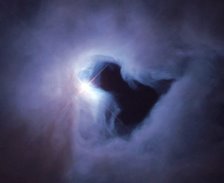







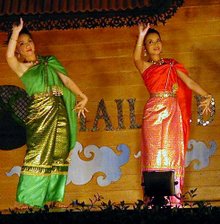










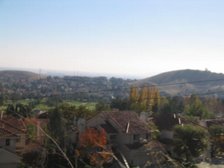


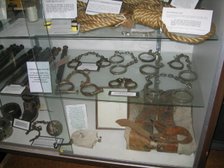











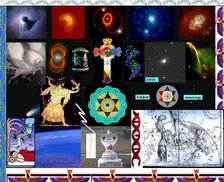
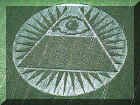
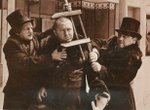
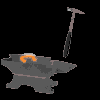


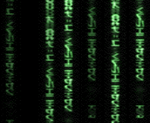

























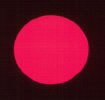
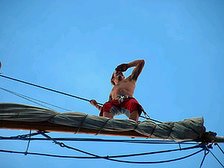
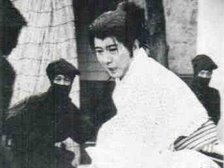




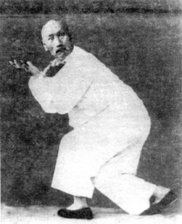


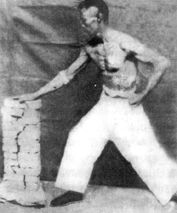


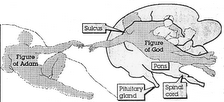
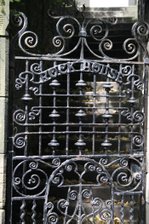
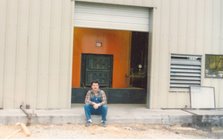
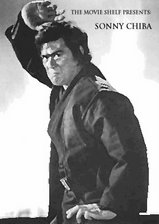

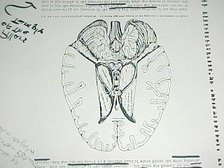

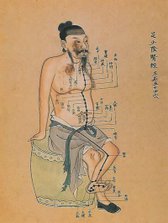
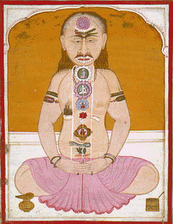











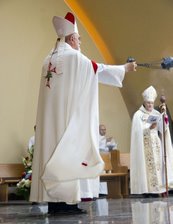
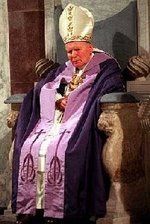






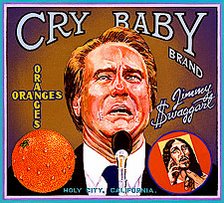

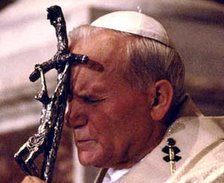
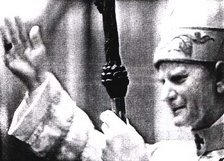





















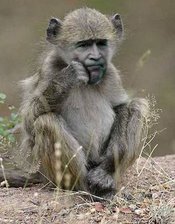












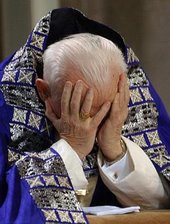




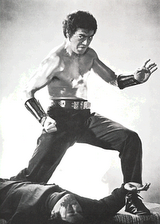


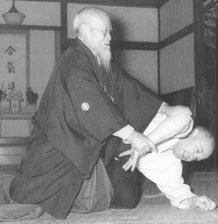
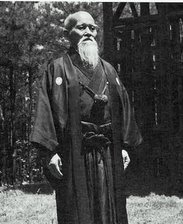















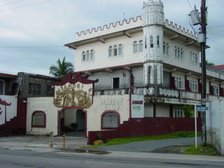
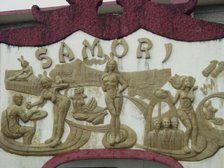





















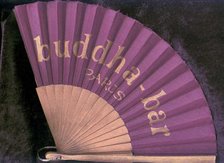
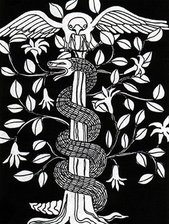








No comments:
Post a Comment